MAGAZINE EUROPEAN BUSINESS
On his commitment to innovation and sustainability across their diverse business landscapes

WCBSD talks legislative stages on the Corporate Sustainability Due Diligence Directive with contributions from CHMWEG
How cloud-powered AI could revolutionise digital fraud
What it means to be an ethical hacker with Glenn Wilkinson
europeanbusinessmagazine.com SUMMER EDITION | 2023
Chairman and Chief Executive of Petra Group
Vinod Sekhar
Creating the building blocks of transformation

Do you want to be part of a community of leading CFOs and their teams, driving business transformations that value climate, nature and equity and are rewarded by the capital markets?

Join our WBCSD CFO network: learn more at CFO Network - WBCSD
A New Challenge?
Unique Access to Confidential Opportunities
InterExec is the global leader in enabling Top Executives to access £300k to £3m+ unadvertised vacancies worldwide. We act discreetly through a 15,000 strong international network.

london@interexec.net www.interexec.net +44 (0)20 7256 5085
Videoconferencing for the enterprise
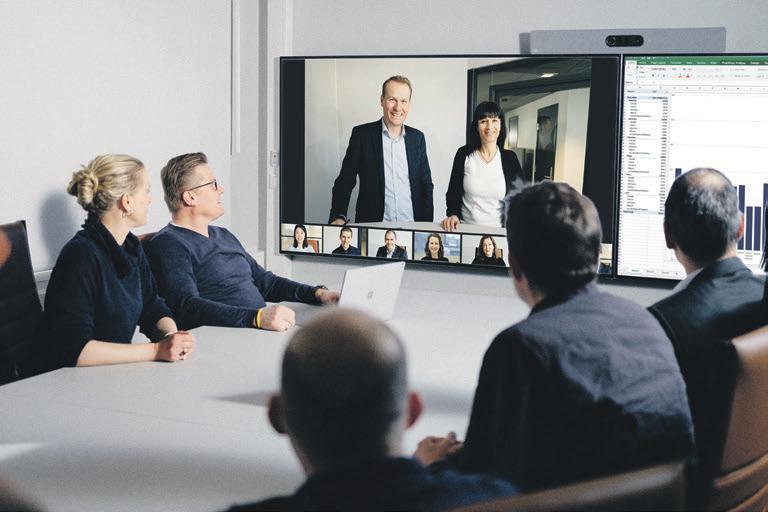
Modern workspaces are filled with video-capable meeting collaboration platforms but Pexip provides a unique platform for large enterprises.
An unrivaled user experience, with outstanding video and audio quality, lets organisations connect existing collaboration tools and devices in the same call, allowing everyone to join.
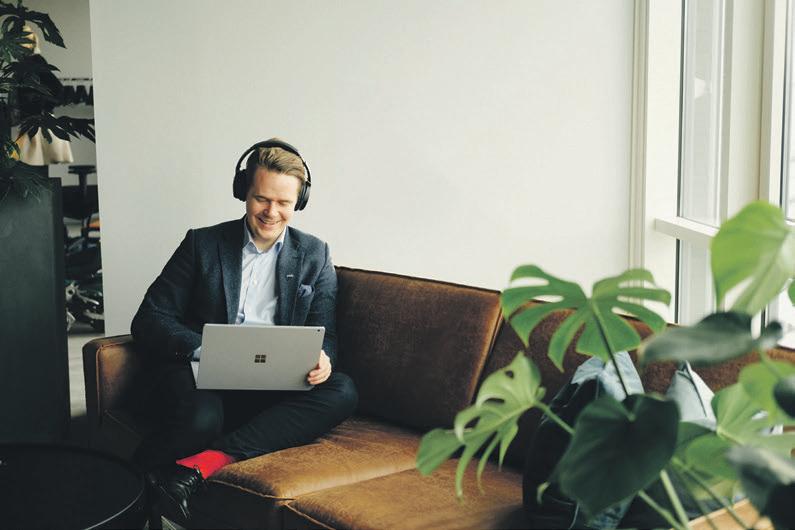


A security-first, enterprise-grade video conferencing solution uses industry-standard encryption and security protocols to maintain privacy and security.
A flexible platform allows customers to deploy the solution in the way that best suits their technology and infrastructure requirements - as a service or on-premiseorganisations can move to the cloud at their own pace.
Find out more at pexip.com Video communications as it should be

Publisher Nick Staunton
Editor Patricia Cullen
Deputy Editor Anthony Gill
Associate Publisher Brad Adams
Features Editor
Katie Winearls
Head of Production
Paul Rogers
Head of Design
Vladimir Mladenovski
Subscriptions Manager

Rebecca Hill
Head of Business Development

Paul Matthews
Advertising Sales
Brad Adams
Tara Duckworth
Advertising Sales
Tara Duckworth, Mike Ray, Andy Ellis, Mark Holburn
Contributing writers
Patricia Cullen, Richard Fitzpatrick, Bala Murali Krishna, Shilpa Meen, Argee Laraya, Aimee Ni Mhaolcraibhe, Gordana Ristic, Jonathan Hooker, Jose Ignacio Latorre
Head of Digital Stephen Scott
Photographer Ben Fisher
NST Publishing Ltd, 19 Leamington Spa (studio 1) Leamington Spa,Cv324tf, UK
The information contained has been contained from sources the proprietor believes to be wholly correct however no legal liability can be accepted for any errors. No part of this publication can be reproduced without consent of the publisher.
europeanbusinessmagazine.com 5 Table of Contents europeanbusinessmagazine.com MAGAZINE EUROPEAN BUSINESS
8 The Rise Of The Flex Economy 10 The ‘Polluter Pays’ Principle Is About To Get
Lot
For EU Companies — And They’re Not Ready 12 Money-Laundering Is A Global Problem 14 Business Must Be The Driver Of Sustainable Change 16 How Building A Long-Term Talent Strategy Can Captivate Investors 18 How To Build An Internal Digital Talent
Bolster Cyber Defenses And Boost Commercial Capabilities 20 How Cloud-Powered Ai Could Revolutionise Digital Fraud 22 Ignore The Hype And Focus On The Real Benefits That Ai In Payments Can Bring 24 What Can Businesses Learn About The Uk’s Digital Future From The Financial Services Sector? 26 Companies To Invest More In Freelancers And Tech Skills But Not In Women In Top Consulting Jobs 28 What It Means To Be An Ethical Hacker With Glenn Wilkinson 30 The Net Zero Transformation Of Energy-Thirsty Data Centers 32 Safely Harnessing Its Potential 34 How Ai Is Disrupting The Workplace 36 Ignore The Hype And Focus On The Real Benefits That Ai In Payments Can Bring 39 Philanthropist, Entrepreneur, Activist And Maverick: Vinod Sekhar 44 European Business Caught With The Chairman And Group Ceo Of Petra Group Datuk (Dr) Vinod Sekhar 52 The North Sea Summit, A Cornerstone Of The Green European Hydrogen Economy 54 How Building A Long-Term Talent Strategy Can Captivate Investors 56 Creating A Safe Haven For Deplatformed Conservative Influencers 58 How A Newsroom Mentality Transforms Organisations 60 World’s Biggest Corporates Zero Progress To Global Warming In 5 Years 62 How Artificial Intelligence Is Transforming The Face Of Banking 64 Transforming Business Practices For A Sustainable Future 66 Shaping A World Of Infinite Creativity 68 Safeguarding Your Team And Customers 70 European Business Magazine Caught Up With Vincent Huguet 72 Tackling Change Fatigue In Employees 74 Aum In Europe’s Robo-Advisors Market To Reach $1.29 Trillion By 2027 75 Leaders Call For Innovation, Entrepreneurship And Global Cooperation To Revitalize Growth 78 European Business Magazine Caught Up With Chwmeg 88 What Can Be Done? 90 Taking The Glare Out Of The Corporate Sustainability Due Diligence Directive (Csddd) 92 The Key To A Flourishing Digital Transformation Journey 94 The Latest Innovations In Digital Fintech
A
More Complicated
Pool To
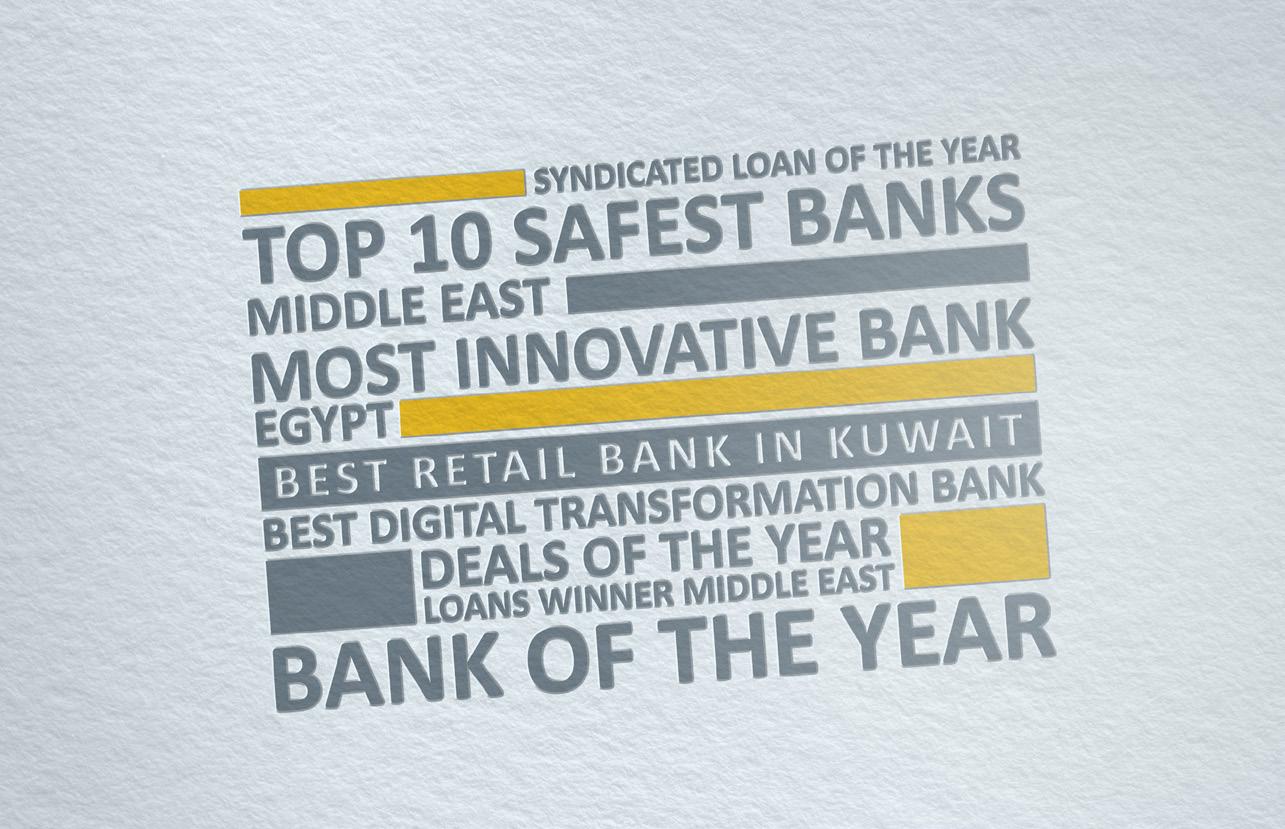








لهسأ يلهلأا ىلع زئاحلا يميلقلإا كنبلا زئاوجلا نم ديدعلا

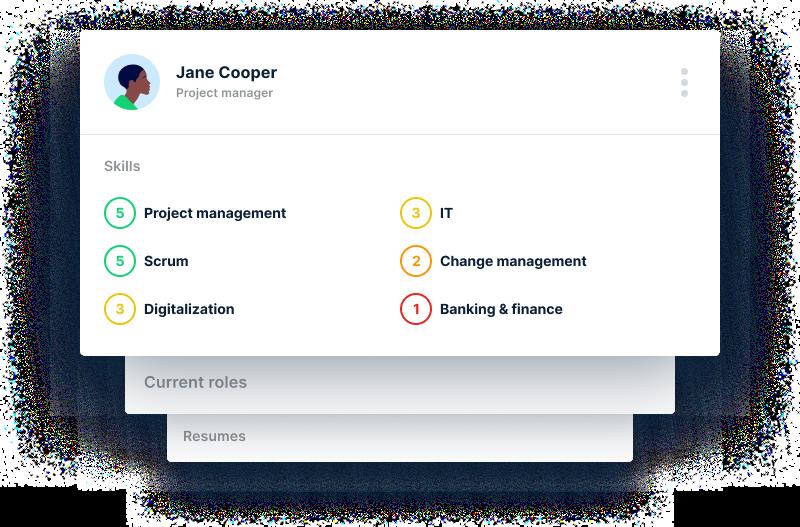


The leading Skills Management platform to identify, visualize and match your skills with the right opportunity. https://cinode.com/en/
Megan Neale, CIO, Limitless
We’re seeing a new trend emerge in the form of the Flex Economy, where consumers can earn extra ‘top up’ income. The Flex Economy is represented by the app-based economy that every day provides millions of people all over the world the flexibility to live, work, and access food and essentials on their own terms.
Given the current economic climate, the need for people to have more financial security is more important than ever before. A recent study showed that Gen Z were saving 14% of their income on retirement, which is more than past generations. Therefore, the number of people opting to take part in the flex economy across a wider range of social demographics will no doubt accelerate. Younger demographics tend to be known for being more in touch
with the tech-based world but over the last few years, there has been an increase of people across all demographics taking part in the app-based economy.
Are side hustles on the rise?
Generally considered an alternative way to earn additional income, a side hustle or a side gig is separate from your primary job. Side hustles aren’t part-time jobs either. The beauty of a side hustle is that you can work on your own schedule. A recent survey found that 76% of app-based workers were Millennials and Gen Z with more than half of this demographic using more than one app-based platform for work. Almost a quarter were 45 and above which shows that side hustles are popular in every demographic.

Having a side hustle is not a new concept. People have been taking side
gigs for a long time. The phrase was coined in the 1950s when traditional jobs were scarce and people needed income.
However, the main difference between a side gig of the past and a side gig today is technology, as side hustles can be conducted via your phone alone. Not constrained to a worktable or office desk, you can operate from the comfort of your own couch, your favorite coffee shop, or even a park bench. In fact, this can all be done anywhere through apps on your phone.
There are also a range of side hustles in different industries that allow people to pursue different careers and be creative with their time. Some common side hustles include freelance customer service, social media management for small businesses, marketing roles, tutoring, online music lessons, administrative tasks and many more.
europeanbusinessmagazine.com 8
The rise of the flex economy: Why more people are looking for a ‘side hustle’
But how much is this trend being driven by the recession? While there are many reasons a person would choose to boost their income with a side gig, they are often necessary to make ends meet for many people. This is especially true when wages remain stagnant and the cost of living keeps increasing. Individuals are juggling side hustles alongside their day job just to live a comfortable lifestyle. Bankrate’s survey showed that 3 in 10 working Americans with a side hustle say they need the extra income to help cover the cost of regular living expenses.
Enter GigCX
Consumers look at a company’s customer service as a key aspect for potential business with them. Many are likely to switch companies immediately after a bad customer experience.
This is where GigCX experts could play a pivotal role; GigCX is the term used for deploying a gig-based crowd of people to provide customer service via an app. This allows individuals to provide customer service from anywhere in the world.
Those who already have a demanding primary job, restricted schedules, or the inability to possess a vehicle are still able to reap the rewards of gigs as they can access the app from their phones and they have the ability to choose a time that is convenient for them. GigCX has become a fast-growing side hustle because of the multifaceted benefits it brings to brands, consumers, and Experts alike.
The increase in brands and businesses using a GigCX model is only going to continue to rise, with Gartner predicting 35% of the CX industry will be gigbased by next year. This allows knowledgeable consumers of those brands
and services to earn extra income by becoming experts and helping to answer customer related inquiries through the platform.
It’s a win-win for both consumers and the Experts, as consumers will receive a higher level of customer service from someone who is very familiar with the company. Plus, Experts get to work for a brand they love and help people with issues they may have faced themselves.
The bottom line
Side hustles can be a helpful tool and allow for extra income and different lifestyles. As the flex economy becomes more prominent, side hustles will increase. Whether this is due to ease of technology or the cost-ofliving crisis, GigCX can help people dive into a side hustle and increase their income at a time that is convenient for them.
europeanbusinessmagazine.com 9
Corporate environmental stewardship has never been more important. Consumers are savvy to greenwashing and putting their money where their mouth is: according to a 2022 IBM study, half of global consumers surveyed said they had paid an average of 59% more for sustainable or socially responsible products. Stakeholders, attentive to the trend, are putting pressure on companies to do the right thing. And now governments are, too.
The Corporate Sustainability Due Diligence Directive (CSDDD) making its way through the final stages of the EU’s legislative process will hold companies responsible for all adverse human rights and environmental impacts of their actions, not just for their own operations, but in their chain of activities inside – and outside – Europe.
The new rules will apply to three groups of companies: EU-based companies with 500 or more employees and at least €150 million global turnover; EU-based companies with 250 or more employees and at least €40 million global turnover operating in “high impact sectors,” namely, textiles, agriculture, metal product manufacturing, forestry, and mineral extraction, among others; and non-EU companies active in the EU with at least €150 million turnover within Europe. These companies will now have to conduct mandatory audits of all vendors or suppliers involved in their “chain of activities” – meaning anything from product manufacturing to waste disposal – to ensure that environmental and human rights standards are being met every step of the
way. If any direct or indirect supplier is found to have adversely impacted the environment, companies will be liable for clean-up costs, proportionate to their involvement at the facility. The Directive goes further than that. If an audit finds that any direct or indirect supplier is at risk of causing an adverse impact, companies will be required to step in and financially assist those deficient suppliers to reach the Directive’s requirements. Those financial contributions will also be proportionate to companies’ involvement at the facility.
In sum, companies will not only be liable for damages caused by vendors and facilities in Europe and throughout the world, but for preventing them too. The Directive is slated for adoption by the end of 2023. Companies will have two years to get in line with it.
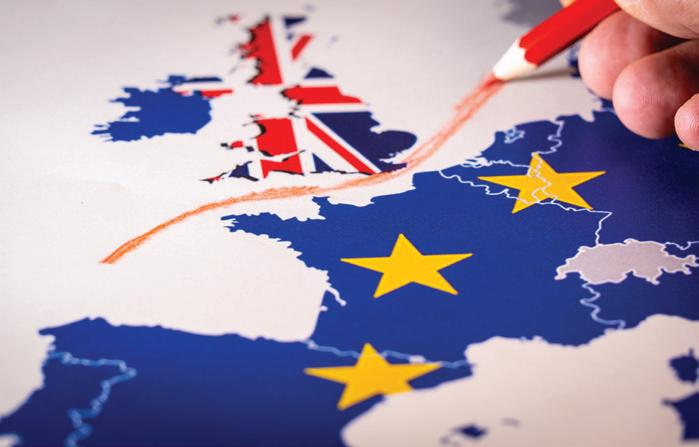
While the Directive’s objectives are sound, the new diligence measures
– namely, the mandatory audits –place a heavy burden on companies, which many are completely unprepared to shoulder. To get in line with the Directive, companies need a lot of help and guidance which, right now, they are not getting. Nowhere is this more apparent than in waste management.
In terms of sustainability, downstream waste management is arguably one of the most important and impactful parts of a company’s chain of activities. This includes everything from safely disposing hazardous chemicals to responsibly recycling cardboard boxes and other packaging materials. Waste and recycling management is a tentacular subset of most companies’ operations: large international companies can easily have upwards of 1,000 global waste and recycling vendors and facilities. Although the “polluter pays” principle is enshrined in national laws all over the world, companies in the
europeanbusinessmagazine.com 10
Confusion over the new EU Corporate Sustainability Due Diligence Directive is preventing companies from taking the necessary steps to ensure environmental standards are met inside and outside of Europe
The ‘polluter pays’ principle is about to get a lot more complicated for EU companies — and they’re not ready
EU are often unaware of what actually happens to their waste or used materials once they leave their fence line.
Industrial waste management contracts in the EU are usually done through a brokerage system, meaning companies use a single vendor under a single contract at a fixed price to arrange the disposal or recycling of material waste. That broker vendor in turn shuttles each different kind of waste off to third parties to treat or dispose of them individually (or to transport them again to yet another vendor). The cheaper the outlet that vendor can find for each individual waste stream, the bigger its profit margins. This disincentivizes broker vendors from seeking out pricier, better environmental options. And until some kind of headline-grabbing environmental disaster actually takes place, companies may be none the wiser about where their waste is going, and how it’s being handled. Case in point: an EU Commission study showed that only 30% of companies checked suppliers, including their waste handlers and brokers. That’s exactly what the Directive wants to change. Companies will now have to figure out who each of their vendors are for each different kind of waste stream and monitor these facilities to make sure they are handling waste properly and adhering to human rights and environmental standards. This will require a gargantuan amount of planning. Many companies simply do not currently have the experience or resources to do this.
As a member trade association, we have seen a lot of confusion over the last few months, which is why we are raising the alarm. Several global organizations have told us that attorneys have given them conflicting opinions as to whether downstream waste management is even covered by the Directive. (The current draft explicitly covers waste from the company’s chain of activities.) When we approached several waste treatment facilities in the EU, some were unaware of the Directive or of due diligence laws already existing in several countries. Companies and associations that are aware of the Directive have issued statements asking for practical guidance. And amid all this confusion, we have seen several companies offer services to provide supplier ratings as a cure-all, or issue certificates that vendors could tack on their wall to assure their customers that they are compliant with all standards and regulations. (The Directive clearly states that ratings and certification programs do not count as due diligence; companies must conduct their own audits through third-party suppliers.)
Clearly, clarification, greater awareness, and guidance are all sorely needed. And not just for waste generators, but also for the facilities that may suddenly find themselves inundated with customers required to audit them, both in and out of Europe. To ease this complicated transition, they should know that there are existing tools at their disposal.
The CHWMEG organization and others like it, including the UK’s Waste Facilities Audit Association (WFAA) and the Western Canadian Auditing Roundtable (WCAR), have been conducting third-party audits of waste vendors and facilities for decades.
CHWMEG was borne on the heels of the passage of the United States’ 1980 CERCLA (“Superfund”) Law which, for the first time, held companies liable for downstream contamination. Unlike the EU Directive, the Superfund Law does not require companies to conduct audits of their US vendors and facilities. But companies started investigating their waste and recycling facilities anyway, and soon realized they kept running into each other at facilities while conducting their own audits, which were not only time consuming and expensive, but also frustrating and disruptive for the facilities. One facility reportedly hosted 250 customer audits in one year, meaning that every day of the week, it had anywhere between one and 15 people touring the facility. Companies realized that if they could agree on a protocol for gathering information, they could share a single report instead of elbowing each other at hundreds of locations around the US to gather the same information.
And that’s how CHWMEG got started. CHWMEG conducts reviews of waste and recycling facilities globally at the request of members, detailing the existing and potential future environmental risks associated with the facility’s environmental and human rights activities. Members pay a nominal annual fee and a fraction of the cost of producing each facility review report.
Ahead of the Directive’s adoption, companies should know that services offered by CHWMEG and others are available to immediately assist in addressing these new rules in a cost-efficient way. It is imperative that companies understand the scope of these new requirements and be prepared to comply. Only then will the Directive achieve its goal of fostering sustainable and responsible corporate behaviour.

europeanbusinessmagazine.com 11
Money-Laundering is a Global Problem
More recently, one of Vladimir Putin’s top officials set up a company on the UK’s Companies House website, where Grainholding Ltd, owned by Volodymyr Saldo, is headquartered in Ukraine. This is a problem because Saldo is under sanctions by the UK government, who have directed economic pressure towards Russia in solidarity for Ukraine. This is but one example, in a plethora of money-moving activity, funnelling into the wider problem of money laundering.
This issue can be felt closer to home, when considering the affordable housing crisis the UK is faced with. Renting costs are at a record high and tens of thousands of houses in the capital are uninhabited, while many struggle to find affordable housing, if any at all. But just how deep does the
unchecked and unregulated trail of money laundering go?
Transparency International found that UK companies were complicit in 52 of the biggest money laundering schemes, with a total of £80 billion in illicit wealth, cumulatively stolen to launder and facilitate corruption. Facing next to this corruption, is Companies House, the UK corporate registry, which does not require proof of identity when individuals form limited companies through their services.
A look at this select committee publication from 2015, defines money laundering as “the process of concealing the origin, ownership or destination of illegally or dishonestlyobtained money by hiding it within legitimate economic activities in order to make it appear legal.” The
destabilising and complex nature of money laundering abuses our society; and all those who participate in the global money-moving industry are effectively scoffing at our laws and freeriding on democracy.

In its foolproof form, democracy is a contract that affords everyone rights, freedoms and obligations. But money launderers, crooks and thieves enjoy a country’s rights and freedoms, without the obligations. Through means of obfuscation, oligarchs and kleptocrats view the UK as a hospitable place to hide their stolen money, thus reinforcing their reputations. Which in turn influences those in power: our politicians and facilitators.
The journalist and author, Oliver Bullough, whose books , ‘Butler to the World’ and ‘Moneyland’ examine money laundering’s inception,
europeanbusinessmagazine.com 12
and through meticulous detail, call into action our own civic duty. After speaking with the author, he detailed the different methods crooks use to take advantage of financial regulation. He said that “shell companies were any legal tool used to disguise ownership,” whether through trusts or hybrid structures, these methods were used to “encourage investment or pass property, which were abused by crooks”.
In Bullough’s words, he told me how “incredibly easy” it was for crooks to launder money, where the tools used by crooks and kleptocrats, were the same available to the rich and wealthy. He went on to say that the implications to national security were grave and pernicious, causing a complex whirlwind of financial crime — concealed and untraceable.
As countless online reports and investigations would disagree, Bullough considers, “no one knows how much money is laundered worldwide, it’s an invented figure.” He noted that some estimate the figure to be around 2–5% of GDP, before rhetorically asking, “what are we counting?”

“The fluid nature of the threat,” Bullough said, “is part of the problem.” A problem which is political, financial, and entrepreneurial. The author talks of its threat to democracy, too, which he said “keeps criminals and kleptocrats going” and “undermines taxes”. He holds to account politicians, who do not treat the threat seriously and view money laundering as their “fourth priority”.
Perhaps the reason so many are in the dark with money laundering,
is due to its foundation in complex accountancy, along with our government’s complacency to tackle the issue. Bullough reminds me that “very little work has been done” and emphasised the complicated-nature of the problem. Another element is the fact sanctions brought against oligarchs in the European court are not final and are open to challenge, as seen in the case of Volodymyr Saldo.
Criminal money was brought over to the UK over 40 years ago, and its effect is still punctuating global politics and the economies of today. This is a national and global problem that will require a national conscience, through civic participation and education, and through government action, but this time, as a top priority, instead of the fourth.
europeanbusinessmagazine.com 13
Business must be the driver of sustainable change
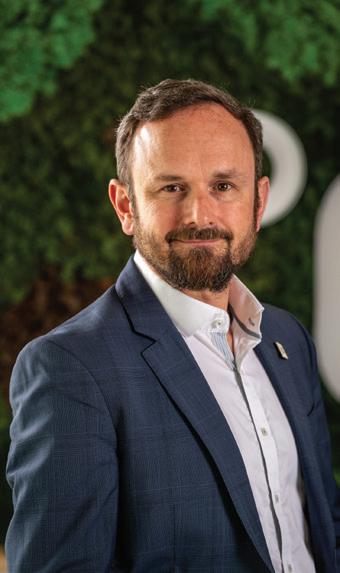
We’re in an era of rapid change. Following a period of painfully slow progress in the global energy transition, the fallout from Russia’s invasion of Ukraine has clearly demonstrated the fragility of the existing fossil-based energy system. It’s stimulating a renewed ‘rush for renewables’ and smoothing the way for key legislation such as President Biden’s Inflation Reduction Act (IRA) and the EU’s Green Deal Industrial Plan.
Citizens and businesses across the world have been impacted by the rising cost of fossil fuels, with everything from heating and electricity to the products we import and export. On top of this, the IPCC report released in mid-March made it clear, once again, that we are dangerously close to surpassing the 1.5C limit, with irreparable changes to the climate already happening.
A recent report suggests the growth of renewables, especially wind and solar, means the world will likely use fewer fossil fuels to produce electricity in 2023. In short, we are reaching the end of the fossil fuel era. Nevertheless, we need to act faster to mitigate the climate, economic, and security risks of the old energy system as we shake off our fossil fuel dependency.
Businesses step up
It’s often considered the responsibility of government to set the agenda and drive the energy transition. However, the role that businesses can and must play in driving a market-based shift to renewables should not be
understated. Many businesses are already leading the way and taking up the challenge that governments have failed to adequately address so far.
For instance, the private sector has played an essential role in accelerating the transition to renewable electricity, by demonstrating voluntary demand for it and investing billions around the world in renewable electricity production infrastructure. This sends a clear signal to policy makers that leading corporates see the future is renewable, and they’re calling for government policy to catch up with demand.
This business-led energy revolution represents an entirely new way of thinking about how society invests in renewable energy – smashing the public and political preconception that sustainable energy is a cost to the taxpayer, by clearly demonstrating a model of market-driven energy transition – harnessing the forces of capitalism for positive change.
And this market has clout. In 2021, corporate buyers signed 8 Gigawatts (GW) worth of renewable power purchase agreements across the EU. That’s equivalent to 17.5% of the total renewable capacity installed that year, or enough to power seven million homes.
Leading the electricity aspect of the corporate action agenda is RE100, a global initiative bringing together the world’s most influential businesses committed to using 100% renewable electricity. Led by Climate Group, in partnership with CDP, our mission is to drive change towards 100% renewable grids, both through the direct investments of our members, and by
working with policymakers to accelerate the transition to a clean economy. Over 400 companies have made the commitment, ranging from household brands like Lego, Apple, Budweiser, Deloitte and Nike to critical infrastructure and industry suppliers like 3M, Danfoss and ABB. Together, RE100 companies are calling for policy change to remove the barriers to procuring renewable electricity to enable them to invest in renewables capacity at scale.
With enough businesses making this demand on governments, it quickly encourages utilities and public authorities to help provide renewable sources of electricity to help satisfy demand. This not only ensures businesses can move towards its goals, but also helps governments to decarbonise its grids and move towards net zero. We refer to this as the Ambition Loop, and businesses are ideally placed to set these positive feedback mechanisms into action.
With renewable electricity now the lowest cost form of energy on the planet, no wonder corporates are pressing for greater access. With a total revenue of over US$6.6 trillion, our members represent 1.5% of global electricity consumption, an annual electricity demand higher than that of the UK.
europeanbusinessmagazine.com 14
Sam Kimmins (pictured), Director of Energy at Climate Group discusses the need for businesses to continue to take bold action in the energy transition – and to confidently communicate about these actions to governments, consumers and shareholders.
Climate Leadership vs Greenwash
With the renewable energy market expected to hit $2.15 trillion by 2025 and sustainable investment topping $30 trillion the market opportunities for businesses that prioritise sustainability and drive towards net zero are huge. Analysis by McKinsey shows that strong ESG propositions correlate with high equity returns as well as higher credit ratings.
Understandably, many businesses want to get their sustainability credentials right and make sure what they’re doing is both credible and effective. Failing to do so can expose a business to accusations of greenwashing – and often rightly so. You don’t have to look far to see examples of companies making misleading or blatantly false claims, or simply failing to follow through bold, highly publicised commitments with tangible action.
While there are many examples of excellent corporate leadership, there are many more examples of corporates putting a shine on business-asusual through slick PR campaigns. Bad actors are increasingly being called out and the negative public relations impacts of being accused of greenwash can be significant. There is even a new generation of NGOs and coalitions like the Observatory Against
Greenwashing, specifically focused on uncovering greenwash.
On the flip side, fear of exposure is driving many businesses to avoid talking about the great work they are doing – a term known as greenhushing. It’s important that businesses continue to talk publicly about their efforts to drive positive change. Consumers, board members, current and future employees, and even business partners and members of the supply chain all expect businesses to be both bold and highly credible in addressing the central challenge of our time. From the point of view of campaign groups such as Climate Group, it’s vital for businesses to communicate leading practice in order to drive policy change, peer-group behaviour change and to help change consumer behaviour.
‘Getting it right’ means taking sustainability seriously as a core part of the business. For a business to drive genuine impact through its sustainability commitments, it’s important that the pledge becomes a central driving force within the organisation. It should permeate everything the company does, through from the business structure, across geographies, departments, into supply chains and onwards. By having teams responsible for setting targets, joining initiatives, and ensuring that this approach becomes central to the business helps to create systemic change in the organisation and out into the broader ecosystem.
By joining third party initiatives, like RE100, that have reporting and accountability measures in place (in RE100’s case, through our CDP reporting), or initiatives such as the Science Based Targets initiative (SBTi) or the Renewable Thermal Collaborative (RTC) businesses have a platform for sharing ambition and action, and can have greater confidence in communicating their ambition and achievements without having accusations levelled at them.
Businesses are taking the lead on decarbonisation
The actions of leading businesses are paying off, in terms of changing public expectations. There is now an increasing recognition of the role of businesses in helping to lower carbon emissions and increase the uptake of sustainable energy solutions. Research has found that 76% of respondents expect businesses to take the lead on climate change, rather than waiting for government regulation. There is a clear opportunity here for businesses to lead from the front in the fight against climate change. They can be much nimbler and more adaptable to demands than governments. They also carry with them the power of influence to help accelerate government policy. The fossil fuel lobby does this to great effect unfortunately – but the business sustainability lobby now represents an increasingly strong counterpoint to these protectionist voices. Both the individual commitment and collective action through the likes of RE100 are important in this fight. Delivering net zero for any company is going to be a challenge, with increased scrutiny from stakeholders, and challenging markets that restrict the use of renewables.
There is reason for hope. Businesses –your business – have a powerful role to play in re-shaping our energy systems for a sustainable future. But as is true in any period of change, there will be winners and losers. At the end of the day, every business has to ask itself, can it afford not to act?

europeanbusinessmagazine.com 15
How building a long-term talent strategy can captivate investors
By Vincent Belliveau, Chief International Officer, Cornerstone

During periods of economic instability, investors consider several factors as part of their due diligence process to determine if a company is positioned for future growth. These factors include a strong business model, healthy financial figures, and a loyal customer base. However, intangible assets such as a company’s culture, employee engagement, and talent development strategy are increasingly being valued in business evaluations.
Investors want to know if a company is sustainably investing in its people, because they are the soul of every business. How employees are treated, their professional development, and their sentiment towards the organisation are crucial data points for investors.
Business performance and talent strategy are inextricably linked
The correlation between a company’s talent and its performance, including output, profitability, efficiencies, and other metrics, is exceptionally strong. According to a 2022 survey, high-performing organisations, those that surpass their peer group, placed greater emphasis on nurturing their people. For instance, whilst 76% of low-performing or laggard organisations made employee training and development a priority, 96% of high-performing organisations did so. Furthermore, high-performing organisations not only place a greater emphasis on skill development, but their employees also share their belief in the value of this investment. There is only an 11-percentage-point
difference between employers and employees in their perception of the effectiveness of this investment. In contrast, this difference rises to 42% for laggard organisations, highlighting a significant gap in understanding. Why is this significant? Firstly, a highly skilled workforce is more capable and efficient. Such employees can perform their duties better, driving greater success for the organisation overall, in turn attracting investors. Additionally, if employees feel that their organisation is investing in their growth and prioritising their development, they are more likely to remain with the organisation. This could result in significant onboarding and recruitment cost savings, in turn leading to greater profitability – a crucial factor for many investors.
Prioritise mobility to maximise agility
Talent mobility is another key focus area that investors will be looking for. However, the state of the global economy has brought about pressures, least of which is a turbulent job market. Where just a few months ago the rate of mobility within the global workforce, as well as the demand for new talent, was sky high, today paints a different picture. In fact, many companies have enacted layoffs or hiring freezes – meaning no new talent is coming in. In the UK, MPs have warned that the shrinking workforce is actually limiting the country’s economic growth – and these challenges are being reflected on a global scale as well.
Despite the challenging job market and hiring freezes, organisations should not freeze the development and mobility of their existing
talent. Leaders should focus on maintaining flexibility and agility to continue attracting investors. The good news is that employees have a strong appetite for internal mobility, with 73% indicating interest in learning about new roles within their organisations globally. In contrast, workers who lack visibility into internal career opportunities are 61% more likely to plan to quit their job. Today’s workers clearly want the option to mobilise, so the question becomes: How can companies kickstart talent mobility and incorporate it into their culture?
europeanbusinessmagazine.com 16
Creating a marketplace of opportunities
Employees have shown a strong preference for self-service technology to discover internal mobility options, with an 80% higher likelihood of choosing this option. However, it›s important to strike a balance between technology and manager conversations, as the latter is still the top way for employees to gain visibility into growth opportunities according to learning leaders.
By leveraging technology to unveil hidden career pathways and creating

an internal opportunity marketplace, employees gain more career autonomy while still benefiting from mentoring conversations with their managers. This approach promotes talent mobility and workforce agility, which is highly valued by investors, especially during uncertain times. Companies that prioritise talent management and internal mobility, like DPDHL, have already seen success in filling open positions and mobilising the workforce. People, skills, and opportunities are the new fuel that powers businesses.
The landscape of business is evolving, and the fuel that powers it is no longer solely revenue figures and projections. Instead, it is people, their skills, and the opportunities they bring. Companies that recognise and prioritise talent management in their business strategy will stand out to today’s investors. The ability to move talent around the organisation is crucial for fostering agility and resilience in the face of any challenges that may arise in the future. In short, talent mobility is the key to unlocking success and future-proofing businesses.
europeanbusinessmagazine.com 17
BRIDGING THE GLOBAL DIGITAL SKILLS GAP:
How to build an internal digital talent pool to bolster cyber defenses and boost commercial capabilities










 By Maria Balbas, President, elev8 digital skilling
By Maria Balbas, President, elev8 digital skilling


Services for key clients interrupted. Adverse media coverage. A big financial hit. These are just some of the consequences of a serious cyber breach.

Recently, it was payroll company SD Worx that found itself in the eye of the storm when a cyber attack meant it had to shut down servers for a week, forcing major clients to find other ways to pay their staff.
While cyber attacks make the headlines, they are just one symptom of a




















multi-faceted challenge facing businesses across Europe – that of the dearth of much-needed digital skills in today’s workforce.
With many businesses finding it hard to build an adequate pipeline of talent in this field, they are not only more vulnerable to attacks like the one suffered by SD Worx, they also risk failing to capitalise on the commercial advantages that come when they can draw on talent capable of fully exploiting the digital economy.
The good news is that businesses do not always have to look very far to
build the pipeline of talent they need. In fact, with the right approach, talent in existing teams across the business can be re-skilled, pivoting into the tech roles vital to keep the business competitive, and safe.
To fill tech skills gaps, first you have to uncover them
No business has unlimited resources to allocate to training and development, and in times of economic uncertainty, budgets are likely to be under even more pressure.
europeanbusinessmagazine.com 18
For maximum efficiency, any business looking to bolster its digital skills pipeline must first audit the skills that already exist in the workforce, before cross-referencing what they have with what they need, both now and in the future. With this approach, it is possible to align investment to skillsets that will support the business’ long-term success.
Today, businesses undergoing a digital transformation are most likely to uncover tech skills gaps in AI, Cloud and IoT technology, as well as cybersecurity. Recent data suggests that 63% of businesses say their staff are lacking the necessary digital skills to use AI, and there will be 3.5m unfilled jobs in the cybersecurity sector by 2025, according to research from Cybersecurity Ventures.
Some of the specific skills businesses will want to map include knowledge of programming languages such as Python and Java, which are helpful in the use of AI tools, and a high-level understanding of mathematical fields
including statistics, linear algebra or algorithms, which are transferrable to roles related to data analysis and use of big data.
Beyond technical skills
Filling technical skills gaps is key –but alongside, as they map their skills pipeline, businesses should not lose sight of the ‘power’ skills that act as ‘multipliers’, allowing tech professionals to maximise their impact for the business. Power skills include communication, collaboration, and leadership – and equip individuals to become empathetic team members, effective managers and visionary leaders. By creating training and upskilling programmes that blend power and technical skills, businesses can ensure their digital transformation will go further, faster.
In addition, where teams understand that upskilling programmes support both business objectives and personal career development, the result
is better staff retention and loyalty, which is key for businesses locked in a fierce war for talent.
Investment in talent should always be a priority
In times of economic turbulence training and development budgets can come under pressure as businesses look to make savings. This, however, should not be the case: when training and upskilling is planned strategically, it is inherently future-focused and designed to ensure that the business has a talent pipeline that equips it to meet the changing needs of clients and customers today and tomorrow. Viewed through that lens, continuing to upskill talent is a strategic investment and not a cost. Well planned programmes future-proof the business and improve morale and engagement. Pressing pause, even in response to a downturn, can risk the business being left behind, exacerbating skills gaps, making it more difficult for it to position itself to capitalise when the market turns.
A deep pool of digital talent is the best way to safeguard your business, now and in the future

Amidst the rapid changes of the fourth industrial revolution, organisations that will come out on top are likely to be those with a highly skilled workforce capable of innovating and adapting, that combines technical and soft ‘power’ skills.
Navigating this shifting terrain is not easy – PwC’s Future of Work and Skills survey (2021) indicates that only 26% of business leaders agreed they are able to identify the skills the organisation will need in future – but it is necessary.
A reliable pipeline of in-house tech talent brings multiple benefits to businesses: in the immediate term it is vital protection against the regular menace of cyber attacks, and in the medium to long term it is key to the business remaining competitive and adapting to meet changing customer needs and to capitalise on emerging technologies.
europeanbusinessmagazine.com 19
MACHINES VERSUS MACHINES:
How cloud-powered AI could revolutionise digital fraud
By Ananth Gundabattula, co-Founder Darwinium
The UK has a fraud problem, which increasingly is being fuelled by AI. According to one estimate, Brits lost as much as £4 billion to scammers in 2022. Things are set to get worse still, as cyber-criminals tap the power of machine
learning to outwit technology used by organisations to spot suspicious behaviour.
A great leap forward
A rapid acceleration in the pace of technology innovation over the past few years has benefitted our society
and economy immeasurably. Much of this is built on cloud computing, which provides reasonably priced, on-demand compute power, enabling organisations to innovate at scale while streamlining their operations and enhancing business agility. But while it’s lowered the bar for legitimate users to access these

europeanbusinessmagazine.com 20
capabilities, it’s done the same for cyber-criminals. Nefarious individuals are using cloud infrastructure every day to scale their operations anonymously.
The next wave of innovation in fraud will come from cloud-powered AI –or more correctly, machine learning (ML). Leveraging the power of the cloud, new malign ML models offer the prospect of automating tasks that only humans could perform a few years ago. That’s bad news for us all.
Outwitting the machines
The problem comes when ML models are applied to effectively circumvent
the defences built by companies to spot obvious fraud. Consider a typical fraud mitigation system in a retail setting. There may be a rule whereby transactions over £900 in certain geolocations are automatically flagged for secondary verification. An ML tool could be programmed to work out through trial and error the point at which high-value transactions are inspected. Then the adversary need only ensure their fraudulent payments stay under £900 and are based in the right geolocation to avoid detection. What was once a time-consuming process becomes a simple matter of cloud-powered analytics.
Even sophisticated ML models can be probed and attacked for weaknesses by malicious AI. The combination of models increasingly becoming ‘blackbox’ and the necessity to be trained on data of previous attacks is a perfect recipe for having production decisioning that is vulnerable to exploitation when presented with a slightly different scenario. It only takes some targeted trial and improvement for malicious AI to learn those oversights and blind spots. That’s not all. AI could also generate fake but compelling enough image data of a user’s face which might allow a transaction to proceed, as the checking computer
assumes it to be a photo of a new user. Or it could be trained with video/audio data in the public domain (e.g. clips posted to social media) to impersonate legitimate customers in authentication checks. Similarly, AI could be trained to mimic human behaviour such as mouse movements, to outwit
About Darwinium:
Darwinium is a next-generation fraud platform and the world’s first customer protection platform that helps businesses understand trust and risk across full digital journeys, not simply at point-in-time interactions. What this means is that Darwinium can help businesses simplify risk decisions by aggregating vast amounts of data helping them to make more accurate risk decisions without having to first make sense of complex data or vast rulesets.
machines designed to spot signs of non-human activity in various transactions. It could even generate different combinations of stolen data to bypass validation checks – a compute intensive task which can be solved by using the public cloud.

What happens next?
Fraudsters often have the advantage. They have the element of surprise and the financial motivation to succeed. Yet fraud and risk teams can counter malicious AI by tweaking their own approaches. AI can be trained by the bad guys to mimic human behaviour more realistically. But if it’s used in automated attacks, it will still need to be deployed like a bot, which can be detected by the right machines.
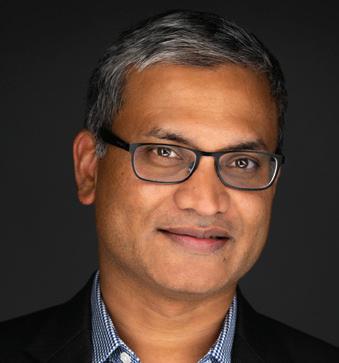
Businesses could use continuous journey tracking to thwart malicious AI. Because this approach captures intelligence across the entire session/user journey, there’s more opportunity to spot machine-generated anomalies. Flexible signal generation can also be a powerful tool in a security engineer’s arsenal. It could be used in the examples above to trigger image analysis as soon as an image is uploaded. Or to compare mouse movements across non-financial transaction pages with those where a financial transaction is being initiated.
The bottom line: we are just at the start of a new arms race in cybersecurity and fraud mitigation. Settle in for a bumpy ride.
europeanbusinessmagazine.com 21
Ignore the hype and focus on the real benefits that AI in payments can bring

By the time you read this you may be tired of hearing about ChatGPT the OpenAI chatbot application or even its rival Bard, the experimental conversational AI service that has been introduced by Google. But whether or not these innovations have been overhyped, there’s no doubt that they are finding wide application across multiple use cases.
By Ralf Gladis, CEO, Computop
Despite only being launched for public use at the end of November 2022, ChatGPT is already being used to create personalised, automated answers to customer inquiries across the eCommerce industry and marketing departments are relying on its language processing abilities to curate content for social media and online marketing campaigns. Students are also finding its capacity for crafting responses to their questions helpful when it comes to writing essays. Such is its popularity it attracted 13 million individual active users per day just two months after its launch.
ChatGPT is of course, the free, userfriendly frontend behind which sits complex technology known as generative AI. Generative AI is described by the World Economic Forum as ‘a category of AI algorithms that generate new outputs based on the data they have been trained on’. Like traditional AI, it uses neural networks that allow it to recognise patterns and make predictions, but generative AI also creates content in the form of images, text and audio. This significant progression means that in future we are likely to see the impact of generative AI across multiple industries, including payments.
Let’s have a look at how this might develop:
Social commerce
AI-enabled chatbots are already making their mark on social media platforms where they support sellers to deliver a vastly improved customer service that enables instant responses to customer inquiries. But there is no reason why these interactions couldn’t lead to transactions enabled through AI APIs. These could facilitate biometrics such as face recognition that, in turn, would connect to a payment mechanism such as ApplePay or GooglePay to complete the transaction. One thing that any merchant would have to ensure before using AI bots however, is that they behave well and are trained to be polite with customers at all times!
Customer support
Companies that provide online or phone support to customers are already utilising AI to provide them with information about their customers to inform the conversation. Using generative AI, however, delivers information on a much wider range of topics and in much greater depth which would allow the AI to manage a bigger number of interactions freeing agents up to deal with more complex tasks. If customers then want to make a payment, as with social commerce, an AI user interface could use payment APIs that would enable payment through biometric authentication, or
through a series of ‘if this/then’ conditional rules.
Personal assistants
It is also exciting to think about AI behind personal assistants like Alexa or Siri. If a customer wants Siri to book event tickets or a hotel it requires machine-to-machine interfaces to automatically process the booking and the payments for customers. Obviously, there are many tasks that are given to a personal assistant and many hotels, ticket shops and retailers that consumers want to buy from. Providing APIs to handle all of this is a task that would require less AI but a lot more in terms of global standardisation and hard programming work.
europeanbusinessmagazine.com 22
Improved efficiency
AI is already having a significant impact on the payments industry by enabling a deeper understanding of customers and customer behaviour which is improving payments services. However, generative AI can take improvements a step further by processing more data at a faster rate which will help to provide real time insights, improve procedural efficiency and allow companies to meet regulatory compliance more easily.

Combatting fraud
One of the biggest contributors to credit card fraud in recent years has been the growth in eCommerce ‘Card
Not Present’ transactions. Payment processors, like Computop, are already incorporating AI and machine learning to assess past data that can be used to help combat these fraud attempts. However, because generative AI is about creating content based on existing data, in helping to manage fraud, it would be best used to help construct messages to customers or new fraud rules, or through machine learning models, assess the performance of these rules to identify if they are working and boosting performance. If an AI model can reliably filter out low risk fraud alerts, manual reviewing efforts can be reduced, saving organisations time and resource costs. However, the challenge for AI in fraud prevention is to avoid biased results that might
result from unbalanced training data leading to unfair judgement of skin colour, nationalities etc.
Easier checkout
A frictionless checkout experience is the goal for all online retailers. This means that customers must be able to make payments quickly, securely and conveniently with minimal clicks. They are reliant on payment service providers to facilitate this, and the sector is now competing on its ability to incorporate AI into user interfaces and experiences. AI will deliver relevant information that could make this even more efficient, analysing details such as the customer’s location, the device they are using, their most recent interactions with the retailer, and even the time of the day they are most likely to make a purchase. Such detailed data is not only invaluable to securing a smooth checkout but can provide merchants with the ability to deepen their personalisation strategies with customers moving forward.
Integrated payment
Digitalisation has meant that most organisations now use integrated payment systems to streamline the payment acceptance process and integrate automatic payment acceptance. This means that manual storage or the compilation of transaction data are no longer needed. Large language models will assist with collating and analysing payment data across multiple sources and locations, enabling organisations to find what they are looking for quickly and accurately.
In summary
It is easy to get caught up in the hyperbole around AI tools like ChatGPT and Bard, or equally to dismiss them as a passing trend, but the technology that enables them has application far and wide. Generative AI is complex, but the way that companies can use it is not. A simple prompt, or set of prompts, is all that it requires to deliver a wealth of insight. What payment company wouldn’t want to take advantage of it?
europeanbusinessmagazine.com 23
What can businesses learn about the UK’s digital future from the financial services sector?
It is vital for any business leader to look to the future and to anticipate how it may affect their company. Failure to do so has consequences for everyone involved; if sales or engagement fall then jobs are put at risk, market positions are lost and reputations suffer, perhaps irretrievably. Yet relatively few businesses take the time to really understand how they might deal with what’s on the horizon.
By Mike Kiely, Sales Director Financial Services, IDnow
The business world changes rapidly, so the assessment and plan for the future has to be almost constant. However, one of the continuing key factors in the conduct of business will be the reliance on digital. But looking towards the future, what does the average consumer feel about using their smartphone, tablet or computer to go about their daily lives? The FinServ community has
always been at the forefront of innovation and it is an industry which has a reliable and steady finger on the pulse of current and anticipated consumer behaviour, as much of the business world at large is shaped by its transactions.
Recent research commissioned by IDnow has shown what UK banking customers want from their digital experience. The results of the survey are more broadly indicative of what consumers expect from a digital future in the UK.

Digital is clearly the future
Well over 60 per cent of 2,001 UK adults surveyed believe that digital banking processes – which in this case might encompass remote account opening, online banking options or an easy-to-use app – were either extremely important or important when it came to deciding which bank they should entrust with their money. More widely, the same attitude is likely to prevail in the experience of interacting with a business; digital is convenient, always-on and now so familiar in so many areas that the app or mobile-friendly website is frequently the first choice. An easyto-use digital presence is now one of the basics in practically all sectors. The survey also found that limited opening hours, lengthy processes and having to physically attend a location were given as the top three annoyances with financial institutions. There is no doubt that consumers in other sectors have similar gripes. If a consumer in any sector of UK business is faced with a process which takes a long time, it will frustrate them owing to the increased expectations of immediate gratification. It is here where digital processes have one of their distinct advantages.
Security first
UK consumers are not naïve. They appreciate that while interacting online, particularly making purchases, is a favourable way of fulfilling their needs, it is not without its dangers. This is amply highlighted by the fact that in 2022, the UK had the highest number of cybercrime victims per million users, as 4,783 fell victim to some form of attack.
Slightly more than half of IDnow’s survey respondents said that they had opened a bank account online and felt safe as they did so, which should act as an eye-opener for businesses; it is imperative that they show consumers that they take their digital safety seriously as they register to use their services.
Of the 47 per cent who said they did not feel safe, cybercrime and fraud were cited as the main reasons for
europeanbusinessmagazine.com 24
their unease. This opinion is not unjustified – in 2022, 88 per cent of all UK businesses experienced some form of data breach.
It does not matter if the business is a well-established name in its sector or if it was founded last week; whilst customers want digital, they also want to be safe. The responsibility for this rests with the business by putting in place the highest security standards. These might include the installation and continual update of data protection software, the use of secure networks and data encryption. Multi-factor authentication and other methods of making sure that the customer is who they say they are, such as Know Your Customer (KYC) processes, may also be used. It’s important to educate consumers about how they can help themselves to keep their data safe too, both at the sign-up stage and via regular communications once they have onboarded.
However, this need for safety must also be balanced with a friction-free sign-up process. If registering to use a business’s services online is cumbersome or fraught with what the users see as unnecessary steps, they may simply lose interest and look elsewhere. 13 per cent of respondents to the survey had abandoned trying to register with a bank online at this stage. This is likely to transcend the business world too.
Traditional versus new kids on the block
Financial institutions can be roughly categorised into traditional banks and their new, ‘challenger’ counterparts which predominantly exist online. The same definition can be applied elsewhere in business as traditional names in retail, healthcare, hospitality or telecommunications now vie with newcomers, which have substantially different outlooks and strategies and usually follow a digital-first or digital-only approach.
Digital adoption plays a massive part in this and has only increased in the last two-and-a-half years, as what came about through necessity is now the standard. However, the

survey revealed that, for banking at least, the traditional model was still the favoured kind of institution with which to deal. Its hybrid appeal of the in-person balanced with the online showed that living life purely online is something that most of us aren’t quite ready for just yet. These hybrid ways of working are a huge opportunity for the more traditional brands and businesses which are equipped with, and are prepared to embrace, the digital technologies that are rapidly becoming expected of them.
The age-old question
Although recent digital use experienced the sharpest of increases out of sheer necessity, it is no surprise that widespread adoption was driven by the younger generation.
The survey showed that considerably more 18-to-55-year-olds were comfortable in registering to use a financial institution online than their fellow respondents aged over 55, with those in the latter category still preferring to visit a physical location to set up their accounts. For some of the older generation, there is still a need for the shop or office where a consumer can talk to an expert face-to-face.
Despite digital being a chief consideration of respondents aged 18-to24, the same age group are also the savviest when it comes to knowing that something in the onboarding process isn’t right and abandoning it. Friction-free onboarding is therefore a primary consideration for businesses if they want to attract and retain younger customers.
The key to unlocking potential
Despite the physical world still being important to the majority of the over55 market and smaller segments of other age groups, it’s clear that digital is only going to continue its inexorable rise. Online safety is paramount to users of digital services and the research suggests they will have few qualms about halting their interaction with a brand if they feel that this safety is not guaranteed.
It’s therefore vital for businesses to get their digital strategies right –quickly. There is a world of opportunity waiting to be harnessed but only if consumers are given not only the tools to use digital quickly and efficiently but also safely. Investment in digital needs to focus on these core elements in order to provide a clear pathway to successful digital interactions for everyone.
europeanbusinessmagazine.com 25
Companies to invest more in freelancers and tech skills but not in women in top consulting jobs

Comatch, the curated marketplace for independent consultants and industry experts in Europe, acquired by Malt in 2022, has revealed the findings of its new research on the trends that are set to impact the consulting industry over the next eight to ten years.
With input from almost 700 independent management consultants in the UK, Germany and France, the Consulting in 2030: An Industry on the Verge of Disruption report uncovers key findings including:
• 66% of respondents think that consultants will increasingly choose to freelance over permanent employment in the next 8-10 years
• 70% of independent consultants below the age of 35 agree that tech companies will beat consulting firms in the fight to recruit young talent.
• When asked if consulting firms will invest in and encourage young consultants to specialise earlier in their career, 73% working in
sustainability and 72% in digital and IT roles agree.
• When asked if women will occupy at least 50% of the partner positions at top-tier consulting firms in the next 8-10 years, 62% of respondents in the UK disagree due to lack of support to break down the barriers that women face in the workplace.
Comatch (a Malt Company) conducted the research in December 2022 to gain a snapshot of how changes including digitalisation, the
europeanbusinessmagazine.com 26
economic downturn and the global pandemic, have impacted the consulting industry, and what this might mean in the next eight to ten years.
Focus on Tech
The report found that recent business school graduates are increasingly choosing to work for tech companies rather than consultancies, drawn to the innovative and fast-paced culture of the tech sector. What this might mean is that consulting firms will
continue to turn to experienced, specialised talent, particularly in niche areas, but they will also cast their nets wider to recruit young talent.
Equally, it won’t stop consulting firms from investing in and encouraging young consultants, particularly if their talents lie in areas such as CRM or data analytics, but they will be expected to choose a skillset quickly and master it.
The research does show that, due to the prevalence of remote work, companies need to develop formalised ways to foster learning and development. 84% of all respondents agree with this but, amongst those with a background in HR and organisation, a huge 94% anticipate investments in formal learning and development programmes will replace former on-thejob training opportunities.
Changing workplace

When looking at the future of working environments for consultants, 90% of independent management consultants agree that project teams in the next decade will be more mixed, combining both internal employees and external talent such as freelancers. The research also showed that strategy consulting teams will need to have

most of their members experienced in digital skills, such as data analysis and programming, to meet demands for talent to support ongoing digital transformation projects.
When it comes to their views on diversity, the research respondents’ view of the next eight to ten years was discouraging, particularly given global efforts to provide more equitable corporate environments. When asked whether they think that at least half of partner positions will be taken by women, 55% of respondents across all three markets disagreed. A significant proportion of women objected to this hypothesis, with 68% disagreeing compared to 52% of men.
“The report reveals both expected and very surprising findings, but this reflects the ongoing transformation of the consulting landscape,” commented Will Jones, Managing Director, UK & North America at Comatch (a Malt Company). “We’re experiencing the rapid, and much needed, evolution of the workplace brought about by the pandemic years. Our task to 2030 will be to keep pace with the ongoing shifts in the market and ensure our platform is agile enough to connect great consultants with the right clients to benefit from their expertise.”
europeanbusinessmagazine.com 27
In this exclusive interview, courtesy of the Cyber Security Speakers Agency, discover how to protect your business or organisation against hackers. Glenn Wilkinson (pictured ) is a world-renowned security expert with several years of experience as an ethical hacker, a role through which he helps businesses to strengthen their cyber defences. Discover what it means to be an ethical hacker in this exciting Q&A.
What does your role as an ethical hacker entail?

“So, essentially being an ethical hacker means that my clients, who range from banks to governments to small startups to big companies, they
What it means to be an ethical hacker with Glenn Wilkinson
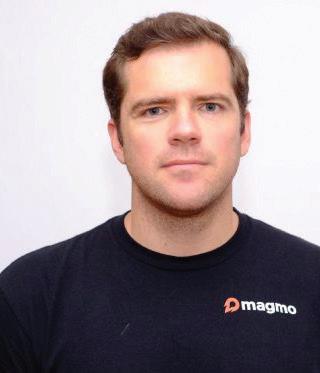
want me to help them secure their businesses, via their online presence or their physical security. From their staff to their servers, everything in between, anything that holds data or transmits data.
“The analogy I sometimes use is that it’s like hiring an ethical burglar and asking them to come and check your home security. Because generally, the mindset that a burglar has, or the mindset that a hacker has, is a bit more inquisitive than the person who sets up the security. So, the person who instals the home alarm, or possibly sets up security at a company, the way they think is sometimes a bit more defensive, a bit more mundane.
“As an ethical hacker, what largely drives you is curiosity. So, there’s this thing in front of you, this barrier that’s stopping you getting some interesting information, how can I go around the edge or dig underneath or climb over the top to try and get to that information?
“It’s often not as glamorous as you might see in the Hollywood way. Generally, if I’m asked to test a bank’s security, it generally involves about four days of metaphorically banging your head against the wall, trying to find those weaknesses; maybe it’s an outdated server somewhere, maybe you can trick an employee to click an email link.
“If you think about an organisation, it’s like a piece of candy – it’s hard on the outside, soft and squishy in the middle. Once you crack the outside and get to the inside, then generally the data just pours out and very quickly, you get access to everything that’s precious to that organisation.”
How can businesses identify potential cyber weaknesses in their organisation?
“If you’re a business and you’re trying to identify cyber risks that might let criminals or hackers in your
europeanbusinessmagazine.com 28
organisation, there are all kinds of things that you can do. Generally, I would say there’s no silver bullet, there’s no one product or magic thing – no matter what vendors tell you –that will solve this.
“But, generally speaking, a layered approach is good for cybersecurity, for home security, for life. If you diversify what you’re doing, you stand a better chance if one system fails. Experts might try and tell you things like segmenting the network, things like zero trust, making sure your software is up to date.

“There are all kinds of solutions these days, there’s lots and lots of little things you can do as an organisation.
Generally, that layered approach, that’s quite good. I’d say if you’re watching, listening or looking for two or three things that you should do, keep your software up to date. If there’s a vulnerability and your server software or your client-side software isn’t up to date, hackers can take advantage of it.
“Make sure to use password managers, because if you’re forcing your staff to remember 20 different passwords and change them every month, that doesn’t work out well for anyone except the hackers. If you only remember one password to unlock the password manager, that’s quite a secure approach. Make sure to pick
a good password for your one password.
“What I like to do is use these things called ‘canary tokens.’ Essentially, you embed a little bit of information in Word documents, Excel documents or PDFs, and you leave these files lying around like trip wires. So, it’s kind of like leaving confidential files at home, a piece of paper that says, ‘top secret,’ and you put a little vial of ink next to it so if someone picks it up, the ink spills. Then you’ll know that someone’s been there.”
europeanbusinessmagazine.com 29
This exclusive interview with Glenn Wilkinson was conducted by Mark Matthews.
Embracing ‘Digital Sobriety’: The Net Zero Transformation of Energy -Thirsty Data Centers

In an era defined by exponential technological advancement, data has emerged as the lifeblood of our global economy. The proliferation of digital services and the rise of cloud computing have fueled the exponential growth of data centers worldwide. However, this digital revolution comes at a cost, as data centers have become notorious energy consumers, contributing significantly to carbon emissions. In the pursuit of achieving net-zero emissions, the concept of ‘digital sobriety’ has emerged, calling for a transformation in the way we design and operate energy-thirsty data centers. European Business Magazine explores the imperative for embracing digital sobriety and the profound implications it holds for the net-zero transformation of data centers.
The Energy Challenge: Data Centers’ Carbon Footprint
Data centers have rapidly evolved into the backbone of our digital infrastructure. These colossal facilities house an ever-increasing number of servers, storage systems, and network equipment, all of which require substantial amounts of energy to operate and cool. According to recent studies, data centers consume around 200 terawatt-hours (TWh) of electricity annually, equivalent to 1% of global energy consumption. This voracious appetite for power not only strains energy grids but also contributes to carbon emissions, making data centers a significant environmental concern.
The Concept of Digital Sobriety
Digital sobriety represents a paradigm shift in the way we approach data center design and operations. It advocates for reducing energy consumption while still delivering reliable and efficient digital services. This approach emphasizes optimizing energy efficiency, embracing renewable energy sources, and implementing advanced cooling techniques. By adopting digital sobriety principles, data centers can significantly reduce their carbon footprint and pave the way for a sustainable future.
Optimizing Energy Efficiency
Efficiency lies at the heart of digital sobriety. Data centers can achieve substantial energy savings through measures such as virtualization, which allows multiple applications to run on a single server, thereby reducing the overall energy requirements. Additionally, improving server utilization rates and employing energy-efficient hardware can further enhance efficiency. By prioritizing these optimization strategies, data centers can achieve significant reductions in energy consumption without compromising performance.
Embracing Renewable Energy Sources
Transitioning to renewable energy sources is a key pillar of digital sobriety. Data centers can embrace solar, wind, and hydroelectric power to minimize their reliance on fossil fuels. By investing in onsite renewable energy generation and partnering with local
utilities to procure green energy, data centers can significantly reduce their carbon emissions. Furthermore, exploring innovative approaches such as power purchase agreements with renewable energy providers can ensure a reliable and sustainable energy supply for data centers.
Innovative Cooling Techniques
The cooling systems of data centers represent a substantial portion of their
europeanbusinessmagazine.com 30
energy consumption. Adopting innovative cooling techniques can contribute to significant energy savings. For instance, utilizing outside air for cooling in colder climates can eliminate the need for energy-intensive traditional cooling systems. Advanced cooling technologies, such as liquid cooling and direct chip-level cooling, also hold promise in improving energy efficiency. By prioritizing these cooling innovations, data centers can strike a balance between sustainability and optimal performance.
Economic Opportunities and Challenges
Embracing digital sobriety not only aligns data centers with environmental objectives but also presents substantial economic opportunities. The demand for sustainable data services is rising, and data centers that successfully achieve net-zero emissions can differentiate themselves in a competitive market. Additionally, as governments and regulators focus
on carbon reduction, data centers that proactively adopt digital sobriety principles can benefit from incentives, tax breaks, and favorable regulatory frameworks. However, the transition to digital sobriety is not without challenges. The upfront costs of implementing energy-efficient infrastructure and renewable energy sources may pose financial hurdles. Nonetheless, the long-term cost savings and positive brand reputation associated.

europeanbusinessmagazine.com 31
Navigating the Cyber-Risks of Generative AI: Safely Harnessing its Potential
As generative artificial intelligence (AI) continues to advance, it holds immense potential for transforming various industries, from art and entertainment to healthcare and engineering. However, with this transformative power comes a new set of challenges. The rise

of generative AI introduces significant cyber-risks that demand our attention and proactive measures to ensure safe and responsible use. European Business Magazine will explore the potential cyber-risks posed by generative AI and delve into strategies for harnessing its power safely.
Understanding Generative AI and its Risks
Generative AI refers to a subset of AI that involves machines generating content such as images, text, or even entire scenarios based on patterns and examples. While the possibilities
europeanbusinessmagazine.com 32
are exciting, there are inherent risks associated with the misuse or malicious exploitation of generative AI technology. These risks include:
• Deepfake Threats: Generative AI can be employed to create hyper-realistic, manipulated videos or images, known as deepfakes. These fabricated media can be used for disinformation campaigns, extortion, or even to impersonate individuals, causing reputational damage or compromising sensitive information.
• Fake Content Propagation: Generative AI enables the rapid
generation of large volumes of content, including fake news articles, reviews, or social media posts. These fabricated pieces of information can fuel misinformation and deceive users, influencing public opinion or manipulating financial markets.
• Exploitation of Biometric Data: Generative AI can generate synthetic biometric data, such as fingerprints or facial features, which can be misused to bypass security systems or gain unauthorized access to sensitive areas or personal accounts.
• Evasion of Security Systems: Cybercriminals can leverage generative AI to develop advanced techniques that evade traditional security measures, making it challenging to detect and respond to malicious activities effectively.

• Intellectual Property Infringement: The ease of generating content through generative AI raises concerns about copyright infringement and the protection of intellectual property. Creators may face challenges in safeguarding their original work from unauthorized reproduction or distribution.
Safely Harnessing Generative AI
Despite these risks, it is crucial to recognize that generative AI also offers immense benefits. To ensure safe and
responsible use, the following strategies can be implemented:
• Robust Data Governance: Establishing comprehensive data governance frameworks is crucial to mitigate risks associated with generative AI. This includes ensuring the ethical collection and usage of training data, safeguarding privacy, and establishing strict access controls to prevent unauthorized use of sensitive data.

• Transparent and Explainable AI: Developers should focus on creating generative AI models that are transparent and explainable. Understanding how the AI system generates content can aid in identifying potential biases, vulnerabilities, or malicious patterns. By providing transparency, users can make informed decisions and assess the authenticity of generated content.
• Rigorous Verification and Validation: Implementing robust verification and validation processes can help identify and prevent the spread of deepfakes or fake content. Utilizing advanced techniques such as watermarking, digital signatures, or blockchain technology can enable content authenticity verification, protecting against malicious manipulations.
• Strengthened Cybersecurity Measures: It is crucial to enhance cybersecurity measures to protect against emerging threats posed by generative AI. This includes employing advanced anomaly detection systems, implementing multi-factor authentication, and continuously updating security protocols to counter evolving cyber-attacks.
• Collaboration and Regulation: Addressing the challenges posed by generative AI requires collaboration among industry stakeholders, policymakers, and researchers. Establishing regulatory frameworks that ensure the responsible use of generative AI, while promoting innovation, can help create a safe and trusted environment for its deployment.
europeanbusinessmagazine.com 33
How AI is disrupting the workplace How AI is disrupting the workplace
 Martin Spring, Professor of Operations Management, Lancaster University
Martin Spring, Professor of Operations Management, Lancaster University
Artificial intelligence (AI) is often cast as wreaking havoc and destroying jobs in reports about its growing use by companies. The recent coverage of telecom group BT’s plans to reduce its number of employees is a case in point.
However, while it is AI that is featured in the headlines, in this case, it is the shift from copper to optical fibre in the BT network that is the real story.
When I was a boy, workers for the GPO – the General Post Office , the forerunner of BT – were regular customers in my parents’ newsagent’s shop. They drove around in lorries erecting telegraph poles and repairing overhead telephone wires. Times – and technologies – have changed, and continue to change. BT’s transition from copper to optical fibre is simply the latest technology transition.
This move by BT has required a big, one-off effort , which is coming to
an end, along with the jobs it created. And because fibre is more reliable, there is less need for a workforce of fitters in the field carrying out repairs.
This will change the shape of BT as an operation: rather than an organisation of people in vans, it will have a network designers and managers who, for the most part, can monitor equipment in the field remotely. This is happening in other sectors too. Rolls-Royce aircraft engines are monitored as they are flying from an
europeanbusinessmagazine.com 34
office in Derby. The photocopier in your office – if you still have an office (or a photocopier for that matter) – is probably also monitored automatically by the supplier, without a technician going anywhere near it.
AI ‘co-piloting’
AI may contribute in part to the reduction in customer service jobs at BT by being able to speed up and support relatively routine tasks, such as screening calls or writing letters and emails to customers.
But this typically does not take the form of a “robot” replacing a worker by taking over their entire job. It is more a case of AI technologies helping human workers – acting as “co-pilots” – to be more productive in certain tasks.
This eventually reduces the overall number of staff required. And, in the BT story, AI is only mentioned in respect of one-fifth of the jobs to be cut, and even then, only as one of the reasons.
In my own research among law and accountancy firms with my colleagues
James Faulconbridge and Atif Sarwar, AI-based technologies very rarely simply do things quicker and cheaper. Rather, they automate some tasks, but their analytical capabilities also provide extra insights into clients’ problems.
Better advice, new jobs
A law firm might use a document review package to search for problem clauses in hundreds of leases, for example. It can then use the overall pattern of what is found as a basis for advising a client on managing their property portfolio better.

How AI is disrupting the workplace
S imilarly, in auditing, AI technologies can automate the task of finding suspicious transactions among thousands of entries, but also generate insights that help the client to understand their risks and plan their cashflow more effectively.
In these ways, the technology can allow law and accountancy firms to offer additional advisory services to clients. AI adoption also creates new types of jobs, such as engineers and data scientists in law firms.
Recent advances in generative AI – which create text or images in response to prompts, with ChatGPT and GPT 4 being the most obvious examples – do present new possibilities and concerns. There is no doubt that they exhibit some potentially new capabilities and even, for some, “sparks” of artificial general intelligence.
These technologies will affect work and change some kinds of jobs. But they are not the main culprit in the BT case, and researchers and journalists alike need to keep a cool head and examine the evidence in each case.
We should strive to act responsibly when innovating with AI, as with any other technology. But also: beware the knee-jerk, sensationalist response to the use of AI in work.
europeanbusinessmagazine.com 35
Ignore the hype and focus on the real benefits that AI in payments can bring
By Ralf Gladis, CEO, Computop
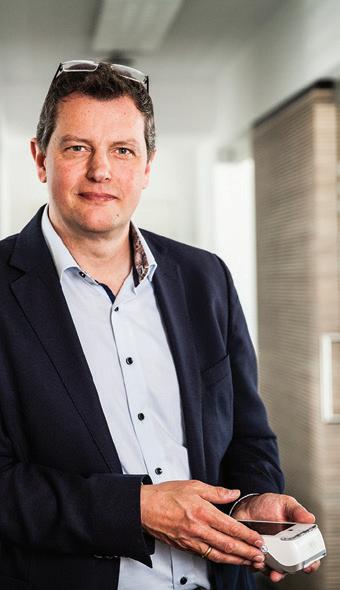
By the time you read this you may be tired of hearing about ChatGPT the OpenAI chatbot application or even its rival Bard, the experimental conversational AI service that has been introduced by Google. But whether or not these innovations have been over-hyped, there’s no doubt that they are finding wide application across multiple use cases.
Despite only being launched for public use at the end of November 2022, ChatGPT is already being used to create personalised, automated answers to customer inquiries across the eCommerce industry and marketing departments are relying on its language processing abilities to curate content for social media and online marketing campaigns. Students are also finding its capacity for crafting responses to their questions helpful when it comes to writing essays. Such is its popularity it attracted 13 million individual active users per day just two months after its launch.
ChatGPT is of course, the free, userfriendly frontend behind which sits complex technology known as generative AI. Generative AI is described by the World Economic Forum as ‘a category of AI algorithms that generate new outputs based on the data they have been trained on’. Like traditional AI, it uses neural networks that allow it to recognise patterns and make predictions, but generative AI also creates content in the form of images, text and audio. This significant progression means that in future we are likely to see the impact of generative AI across multiple industries, including payments.
Let’s have a look at how this might develop:
Social commerce
AI-enabled chatbots are already making their mark on social media platforms where they support sellers to deliver a vastly improved customer service that enables instant responses to customer inquiries. But there is no reason why these interactions couldn’t lead to transactions enabled through AI APIs. These could facilitate biometrics such as face recognition that, in turn, would connect to a payment mechanism such as ApplePay or GooglePay to complete the transaction. One thing that any merchant would have to ensure before using AI bots however, is that they behave well and are trained to be polite with customers at all times!
Customer support
Companies that provide online or phone support to customers are
already utilising AI to provide them with information about their customers to inform the conversation. Using generative AI, however, delivers information on a much wider range of topics and in much greater depth which would allow the AI to manage a bigger number of interactions freeing agents up to deal with more complex tasks. If customers then want to make a payment, as with social commerce, an AI user interface could use payment APIs that would enable payment through biometric authentication, or through a series of ‘if this/ then’ conditional rules.
Personal assistants
It is also exciting to think about AI behind personal assistants like Alexa or Siri. If a customer wants Siri to book event tickets or a hotel it requires machine-to-machine interfaces to automatically process the

europeanbusinessmagazine.com 36
booking and the payments for customers. Obviously, there are many tasks that are given to a personal assistant and many hotels, ticket shops and retailers that consumers want to buy from. Providing APIs to handle all of this is a task that would require less AI but a lot more in terms of global standardisation and hard programming work.
Improved efficiency
AI is already having a significant impact on the payments industry by enabling a deeper understanding of customers and customer behaviour which is improving payments services. However, generative AI can take improvements a step further by processing more data at a faster rate which will help to provide real time insights, improve procedural efficiency and allow companies to meet regulatory compliance more easily.
Combatting fraud
One of the biggest contributors to credit card fraud in recent years has been the growth in eCommerce ‘Card Not Present’ transactions. Payment processors, like Computop, are already incorporating AI and machine learning to assess past data that can be used to help combat these fraud attempts. However, because generative AI is about creating content based on existing data, in helping to manage fraud, it would be best used to help construct messages to customers or new fraud rules, or through machine learning models, assess the performance of these rules to identify if they are working and boosting performance. If an AI model can reliably filter out low risk fraud alerts, manual reviewing efforts can be reduced, saving organisations time and resource costs. However, the challenge for AI in fraud prevention is to avoid biased results that might
result from unbalanced training data leading to unfair judgement of skin colour, nationalities etc.
Easier checkout
A frictionless checkout experience is the goal for all online retailers. This means that customers must be able to make payments quickly, securely and conveniently with minimal clicks. They are reliant on payment service providers to facilitate this, and the sector is now competing on its ability to incorporate AI into user interfaces and experiences. AI will deliver relevant information that could make this even more efficient, analysing details such as the customer’s location, the device they are using, their most recent interactions with the retailer, and even the time of the day they are most likely to make a purchase. Such detailed data is not only invaluable to securing a smooth checkout but can provide merchants with the ability to deepen their personalisation strategies with customers moving forward.
Integrated payment
Digitalisation has meant that most organisations now use integrated payment systems to streamline the payment acceptance process and integrate automatic payment acceptance. This means that manual storage or the compilation of transaction data are no longer needed. Large language models will assist with collating and analysing payment data across multiple sources and locations, enabling organisations to find what they are looking for quickly and accurately.

In summary
It is easy to get caught up in the hyperbole around AI tools like ChatGPT and Bard, or equally to dismiss them as a passing trend, but the technology that enables them has application far and wide. Generative AI is complex, but the way that companies can use it is not. A simple prompt, or set of prompts, is all that it requires to deliver a wealth of insight. What payment company wouldn’t want to take advantage of it?
europeanbusinessmagazine.com 37
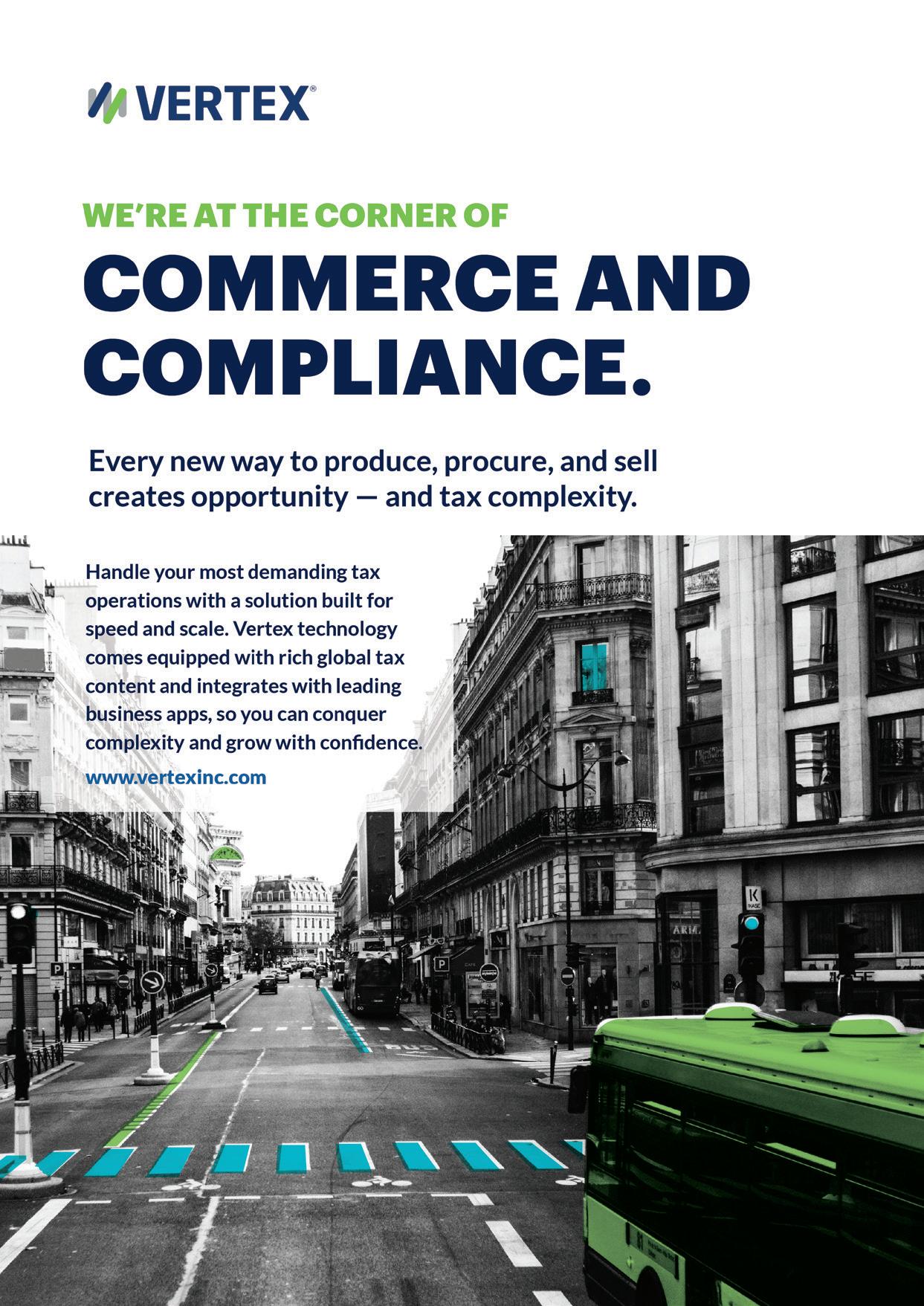
Vinod with Anwar Ibrahim just before the general elections in 2022. Anwar who was then leader of the opposition and known as Asia’s Nelson Mandela, would emerge as Malaysia’s 10th Prime Minister.

PHILANTHROPIST, ENTREPRENEUR, ACTIVIST AND MAVERICK: VINOD SEKHAR
How does one measure a man? Is it by his wealth or his experiences? Do we use his material goods as a gauge or can we judge by what his friends say about him? Is it monetary success or do we look for other factors to make the call?
One popular way to measure a man is to see how well he has faced up to adversity. In Rudyard Kipling’s famous poem “If”, there are two lines, which read “If you can meet with Triumph and Disaster and treat those two impostors just the same”
One man who has met both in his time is Vinod Sekhar, the Chairman and Chief Executive of the Petra Group. There are many words that can be used to describe Datuk Vinod - he is a billionaire entrepreneur, a philanthropist, an educationist, a patriot and an innovator to name but a few. Perhaps one can best describe him as a visionary as he was at the forefront of promoting many innovations. Yet, when it all boils down to the raw facts, Datuk Vinod Sekhar is a man. He is a man for having faced up to adversity, for having climbed out of the depths, not by compromising on his ideals or principles, but by sticking by them. Through
triumph, disaster and triumph again, Datuk Vinod Sekhar has remained in essence the man who he has always been.
The Golden Boy Realises The Golden Truth
Our journey with Vinod and The Petra Group takes us back to 1990 where we can find the origins of The Petra Group, which was founded by him. He was then a young man of 20, still studying biology in the US, when he received job offers from several companies.
Vinod recalls going to a close friend who was a successful businessman for advice on what to do with his career in those days. He was still a scholarship student in the US and had started a business with $50 making shirts out of India, successfully. He had already by then founded Malaysia’s first multiracial, non-partisan youth organisation (Malaysiana Muda). His friend told the younger Vinod Sekhar that if he joins a corporation, his forceful and driven personality will either cause him to lose his job within three months or he would stage a management coup.
It was obvious then that the only viable choice open to him was to be his own boss and that he’d either be a consultant or an entrepreneur. Two weeks after that conversation, he had decided that the entrepreneur’s journey was for him.
That incident probably best shows the supreme self- confidence possessed by Vinod. It is difficult to imagine a young man of just 20 years with the maturity and foresight to go into business but that was exactly what happened to Vinod.
Thus was formed the STI Group, which later merged with global investments to become the Petra Group. STI’s objective was to explore new technologies, and it was indeed amongst the innovators of that decade. Revolutionary ideas and ground breaking businesses just poured out of the company, from the world’s smallest optic engine to South East Asia’s first commercial Internet company – at that time there were a total of 700 internet users in Malaysia. Its multimedia arm was also involved in a joint venture to produce the 2-hour pilot and TV movie of “Tarzan: The Epic Adventures’ ‘ Disney MGM Studios in Orlando, Florida, thus
europeanbusinessmagazine.com 39
becoming the first Southeast Asian company to do so.
STI was the shooting star of Malaysian companies in its heyday and Vinod was the golden boy of Malaysian business. Just imagine, a young man in his early twenties heading a company that was considered to be one of the region’s top private business groups. At its peak, the trading operations recorded around a billion dollars worth of sales. And at the forefront was Vinod, the wiz kid heralded as the man with the Midas Touch.
When Vinod was 26, HRH Tuanku Ja’afar, the ruler of the state of Negeri Sembilan and the then 10th King of Malaysia, conferred the title of Datuk on him. He was the youngest person to be conferred a Datukship.
In 1997, Datuk Vinod’s star was at its peak, but the clouds were gathering in the horizon and in the same year, the foreign exchange market in South East Asia collapsed and with it the star went crashing down.
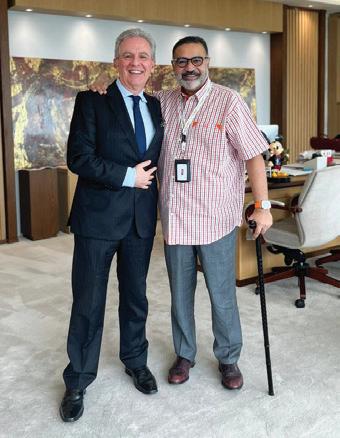

The Asian financial crisis of 1997 brought him thundering down to earth. According to his reflections, part of the problem was the setting in of what he calls, “the God complex.” It was a time when, in his words, “everyone was telling me I was the best thing since sliced bread and that everything I touched turned to gold.”
It is important that we bear in mind that he was still a young man at the time when all the accolades started pouring in, or as he called himself, “a 23 /24-year-old kid”. It was definitely a heady experience, being praised to heavens like that, and at such a youthful age, it was just too much. He told us that the lack of experience caused him to start believing the hype and thus he started doing things that “common sense says you don’t, business experience says you don’t”. He was in everything from East Asia’s largest fruit and vegetable farm, to Malaysia’s first sports car company.
The ringgit collapses and the market falls
The 1997 Asian Financial Crisis was an electric shock, which shook the core of the East Asian Boom. Vinod
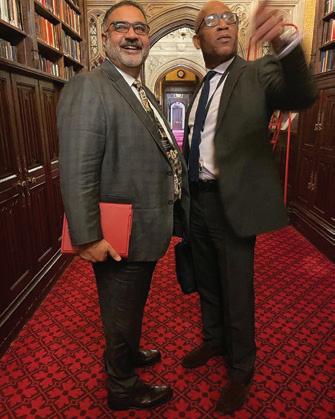
recollected that at that time, he was hospitalised in Los Angeles for health problems and that there was “a situation where the ceiling had collapsed and I am not there.
Vinod is a man whose finger is always on the pulse of things. Unfortunately, during the Asian Financial Crisis, he was handicapped by his illness. His inability to be present in the country during that time severely hampered his business. By the time he came back to Malaysia, the bomb had already dropped and it was just a matter of waiting for the fallout. It was in his words, “a disaster”.
And yet, as he recalled, “there was nothing we could have done about it. We had US dollar debt. Now, I’ll give you an example, say we had borrowed a hundred million US dollars but we had taken it in ringgit, which was 245 to 250 million ringgit. But because of the Crisis, we suddenly do not owe just 250 million ringgits but 300 million and then 350 million and this just increased day by day. At one stage, it would have been half a billion but all that would have been given was 250 million. And you had no control over it!”
Another cause of the problems at that time, as identified by Vinod, was that they were in some businesses that he had no clear experience or strength in, which caused him to rely on partners too much. And there wasn’t anything anyone could have done. In the areas where he had direct control, things weren’t as bad but there were those without his finger on the pulse and it was in those areas that were the most affected. ‘But at the end of the day, the buck stops with me. It was my responsibility. And whatever roles others played, there’s no denying the mistakes I made. The key is to try and not repeat them,” he insists. He would be tested again first during the global financial crisis after the collapse of Lehman Brothers, and then again when Najib Razak (now jailed for corruption) and the machinery of government was used against him because of his close relationship with the jailed leader of the opposition, Anwar Ibrahim . Vinod refused to budge or step away from supporting his friend. He publicly
europeanbusinessmagazine.com 40
Former Chief Justice of Malaysia Tun Zaki
With the Brazilian Ambassador Ary Quintella
With Lord Simon Woolley at the House of Lords
called for political reform and judicial independence – not something senior business leaders in Malaysia are expected to do. When his friends would ask him to just focus on business and not speak out and in return he would get the benefits in the country he deserves, his reply was “I’m a businessman, I’ll sell many things... but my soul is not for sale.” In the following many years, he and his wife would endure constant attacks, fake news stories, created legal actions – with the constant message to just back off and all will be well. If they had only learnt from Vinod Sekhar’s history – he doesn’t like bullies and he doesn’t back down. And as eventually the government fell, and in December 2022, Anwar Ibrahim became the 10 th Prime Minister of Malaysia and head of a unity government of moderates.
The Malaysian Disease
There is a disease in Malaysia, which is prevalent and extremely contagious. It is a disease that affects all strata of Malaysian society and its name is Rumour Mongering. It is caused by pettiness and small mindedness and fed by avarice and envy.
Vinod was not immune from being a victim. One has to remember that this was a man who was praised as a genius and yet when the crash came
and then the political attacks, the true colours of people began to show. One day, he was lauded and feted, the next he was shunned. It is indeed unfortunate how people’s faces seem to change when one is in adversity. And then there were the rumours, the wild and vicious rumours about him. He laughs about it now by jokingly claiming that he does not mind what they said about him but he would prefer it if he could have done what the rumour mongers were accusing him of doing.
But this is now and that was then. And back then, as he reflected, he was hurt and angry by what was happening. Rightly so as well. As he said, he did not steal money, he did not cause a public company to collapse, he did not commit any crime, yet the knives were stabbing him in his back. People whom he had helped before began to treat him like a leper. The worst part of the ordeal for him though was not that he had to hear what people were saying about him but that his family had to face them as well. Through this time, his wife, Datin Dr. Winy Sekhar, was the rock who kept him going. It was during this time that a friend of his mother gave Datuk Vinod a piece of advice that helped him accept the situation. He remembered her telling him, “Why are you getting angry? Are your friends from five years ago still your friends today? Are your friends
from twenty years ago still your friends today? You are the most consistent person around. Your friends know who you are. And anyone of any real character will make a decision on their own, not on some silly rumours and fictional stories.”
The Comeback Kid
At that point, Vinod was at the lowest point as far as business was concerned, and so the only direction in which he could move was up. Before the crash, he had invested money overseas and the payoffs were beginning to show. The time was ripe for his comeback, but first he had to decide in which direction he wanted to move or as he puts it, “whether to depend on friends and government contracts or go back to what I believe in, go back to technology and the toys I believe in.”
The key to his and The Petra Group’s comeback was his return to innovation and taking risks on new ideas that would make money and enhance society. His late father Tan Sri Dr. B.C Sekhar, a man whom Vinod describes as one of the biggest influences in his life, cultivated the strong feeling
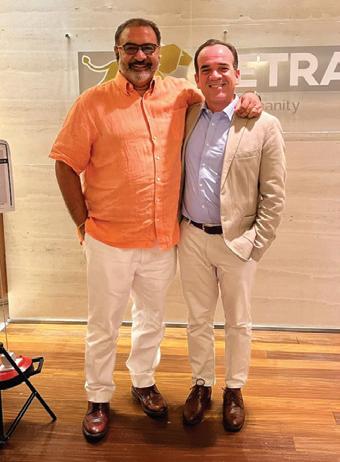

europeanbusinessmagazine.com 41
With head of Petra Films Darren Shaw with nomination for Golden Horse awards for their film “Sunny Side of The Street” - the team ended up winning 5 awards. These are the Oscar’s of Asia
With the Cuban Ambassador H.E. Florentino Batista
of nationalism and patriotism that is apparent to everyone today. So even as the global pandemic hit, Vinod still pushed forward. He created a national news site that became the fastest growing News site in the country, he donated heavily to those in need and invested in smaller companies to give them support as the pandemic crushed global economies. He funded and produced the Hong Kong film “Sunny Side of the Street” that would earlier this year win 5 Golden Horse Awards in Taiwan (the Asian equivalent of the Oscars), and a Nepalese short film called “Lori” that would be given a recognition at the Cannes Film Festival. This is not new to him as just several years earlier he funded and produced “Liar’s Dice” which was directed by his niece, acclaimed Kerala director Geethu Mohandas. It would become India’s sole submission for the best foreign picture Oscar at the Academy Awards for that year.
The Businessman in the Philanthropist
Petra is now in sustainable technology, recycling, biotechnology, IT, modular housing, media technologies, film, transportation technology and even sustainable furniture. The one common theme all of Petra’s activities share is that they are all geared
towards the betterment of society in one form or another.
This does not mean that Vinod is a dreamy idealistic person. Yes, he has his principles, he has his ideals but he is very much a canny businessman. He is willing to take risk and invest in places where others might fear to tread because he believes that the initial outlay will be returned with many times interest compounded. But more important than that, that he is able to make a positive impact on people’s lives by doing so. He says. “It doesn’t always work out the way we would like it to. And sometimes we will fail to
make the positive impact we wanted –but we will always keep trying.”
When one hears Vinod talk about any of his ventures, the belief and passion in his voice is obvious. He says he needs them to bring about profits and have a positive impact. Investments mean businesses have a chance to flourish, businesses flourishing means jobs, jobs mean money, money means more purchasing power, which in turn leads to more businesses being set up and the cycle continues. It is a self-replicating process. And at the end, we would have created employment and wealth for the people, improved their lives and as a corporation, we would have made profits. “Fidel Castro called me a Social Capitalist.” says Vinod. “Maybe he’s right. The future of the world is social capitalism - where everyone can strive to be the best they can be, but where others are not just left behind and forgotten. Sustainable wealth creation is the only forward for today’s world”
A champion of education
As one can see from the above, Datuk Vinod is more than just a business leader. He is a man who firmly believes in social justice and social development, traits which his mother, Puan Sri Sukumari Sekhar instilled in him when he was younger.

One cause he is particularly dedicated to is education. It is something that he recognised many years ago and at the young age of 21 in 1991, he had the foresight and initiative to create the first “Global Education Conference” in Kuala Lumpur where principals from 30 top schools from around the world were invited to discuss the building of bridges between different educational curricula.
In recognition of this initiative, he was named the first Asian and youngest fellow of Kappa Delta Pi, a US based international Honours Society for education. Furthermore, he and his friend N.K Tong were responsible for the establishment of the Mont Kiara International School, which further
With Governor of Virginia, USTerry McAuliffe

europeanbusinessmagazine.com 42
With recently retired Attorney General of India KK Venugopal
highlights his commitment to the cause of education.
There is real joy in Vinod’s face when he talks about visiting the schools, orphanages and centres for at-risk youth he has helped build. And having the children hug him and how that is “the best high in the world... no drug or drink in the world can do that. Seeing the faces of those children and knowing that you’ve touched their lives.”
Vinod Sekhar, business leader, entrepreneur, visionary, innovator, educationist, philanthropist and crusader for social justice... it remains as hard to define him in just a few simple words. He has presented papers at and participated in international conferences such as the International Human Rights Conference in Brussels, the First Malaysian International Youth Conference for Unity in Kuala Lumpur, The Asia Europe Young Leaders Conference in Ireland and the World Economic Forumís Annual Meeting in Davos to name but a few. He has been named one of the 40 New Asian Leaders by the World Economic Forum and a decade ago Forbes magazine ranked him as one of the richest persons in Malaysia. He also won the Global Green Award from the US based Global Green Organisation. The only other non-Americans to have won it before him were Mikhail Gorbachev and Giorgio Armani.
To this list of accolades, we must also include playwright, poet and raconteur. The arts are definitely something that is close to Vinod’s heart and
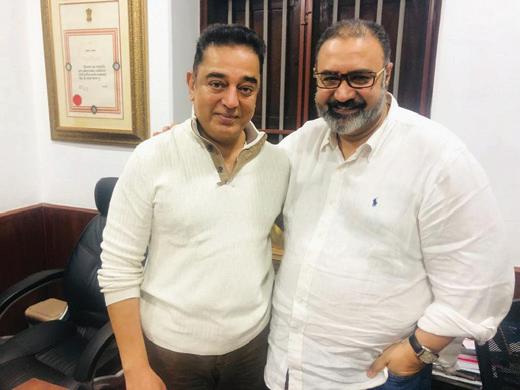
Petra has sponsored several top arts and music events such as “An Evening with The Master and His Angel” featuring renowned sitar maestro Ravi Shankar and Annusha Shankar.
Vinod has definitely led a colourful and exciting life, which is made all the more remarkable because he had done most of the above before he was even hitting 40, which is when (some believe) life truly begins. His life and achievements read like a movie script, choke full of highs and lows. Did we say movie script? Well, how about the play script then? Enter “In The Mind’s Eye”, which signalled Datuk Vinod’s debut on the Malaysian stage as an actor and a playwright. “In The Mind’s Eye”, which opened in July 1999 for an 11-day run, was staged during a particularly difficult time of Datuk Vinod’s life, the Asian Financial Crisis that was touched upon earlier. It has also been produced on stage in London and in the US.
A play is but the reflection of the playwright’s thoughts and feelings albeit in a dramatised form, and “In The Mind’s Eye” was no different. It is probably best to let Datuk Vinod speak to us directly in the words he wrote in the programme notes,

“... Life in its essence, is grey - no absolute right or wrong, no black or white. But we are separated from other animals because we have the ability to lighten and darken the shades that make up life – we have the role and responsibility to say that this is right and that is wrong.”
His Way
He is today facing his biggest challenge yet. After two decades of having a physically weak heart, he collapsed in January this year while on a flight from India. The plane, over the Indian ocean, was forced to turn around. He had gone into shock. His wife Winy, a medical doctor with the support of doctors on board (as fate would have it the flight was full of doctors who were returning from a medical conference) kept him alive. His wife has told friends that she nearly lost him again in the ambulance, but he survived. After 7 weeks in hospital in Chennai, the decision was made that he needed a new heart. A heart transplant was the only pragmatic option. And now he is in India under the care of some of the best in their fields awaiting a matching heart. At times, it is easy to forget that this is a man who is now still only 55, has lived a life few can attest to. He now waits to have a highly risky heart transplantation surgery – but he and the doctors are confident he’ll come out stronger than ever. So what then does the future hold for Datuk Dr Vinod Sekhar and The Petra Group? For starters they have technologies that could revolutionise the world and help humanity. This is a story of a man who believes he can change the world. A strong desire, but perhaps justified. If you recall that old adage “Beware of what ye want, for ye shall get it.” He will have energy, time and talent in one hand and friends who are Kings and Presidents in the other. If there is a man to watch out for in Asia today, it may well be Vinod Sekhar.
europeanbusinessmagazine.com 43
With Indian movie star Kamal Hasan
With US Ambassador Brian McFeeters
European Business caught with the Chairman and Group CEO of Petra Group Datuk (Dr) Vinod Sekhar
as well as the Chairman of Vinod Sekhar Trust and Founder of the Vinod Sekhar Foundation. Renowned for his entrepreneurial prowess, he has steered the company to global prominence. Beyond business, Sekhar is a passionate philanthropist, dedicated to numerous social causes.

As the Chairman and Group CEO of Petra Group, you have achieved significant success in various industries. Could you please provide our readers with an overview of the key sectors that Petra Group operates in and the core values that drive the company’s growth?
I started the business when I was 19 or 20 and we created the STI Group first, which evolved into The Petra Group. I’ve been doing this for over 30 years, in that process, we’ve gone into a wide array of business, but always focused on what I thought would be innovative and something that would bring value to society in some form. For example, in my career we created the first commercial internet company in
South East Asia. We developed the smallest optic engine that allowed projection technology to be reduced to a small size and we created circular abrasive discs. We did all this, close to, 30 years ago.
In relation to farming, we created the largest fruit and vegetable farm in East Asia — 9,000 hectares, at the time, which was to ensure food security and move ahead of anyone discussing food security at that time.
Currently, we are in modular housing, using our own technology, our own IP, in a sustainable way of building homes quicker and [making them more] affordable. We are doing everything from low cost homes to workers accommodation, to middle-income homes. We are doing the
UK, Australia, Malaysia, India, and The Middle East, and we will enter America as well.
We also have Green Rubber, which started quite effectively when we were supplying Timberland and other companies. However, that was a very manual labour intensive process. We have evolved the technology over a number of years and now, this year, the newest process — which is an automated, state of the art delivery system and processing system — now allows what was a maximum of 4,000 tons a year in a factory site, we can now do 24,000 tons a year. [This] allows us to produce effectively for the larger companies, for the larger tire companies, the car companies, and the other companies that require rubber compound.
europeanbusinessmagazine.com 44
At the same time, we are now truly dealing with the world’s number one environmental hazard, which is tires. Over 1.5 billion tires are thrown away every year — [its] impact in waste is everything from diseases, like Dengue, to Zika, to pollution when it catches fire, and contamination of the water table when it is buried. I’m proud of that. It was my father’s and his partner’s original technology that was not quite commercial enough, and I am proud that I played a role in developing it into what it became today, which is the fourth generation, and the creation of Green Rubber itself, using their formula of the De-link system.
We are also in vanilla — plantation and processing vanilla — which is the second most valuable spice. But what is more exciting, the vanilla ecosystem allows for true social capitalism at play, which means we allow for poverty eradication. The stakeholders and the farmers are given an opportunity to grow this, and we buy it at a fixed price, and we give them an upside. It actually lifts entire communities up; entire families suddenly enter middle-income level, and it is something they can pass on to their children. It is an exciting programme, we are expanding it to Sabah, in East Malaysia and I am excited about where it can go.
We are also in the process of creating a downstream business and our own brand for global rollout. So exciting times for that company, as well. We are of course in media, our film business. I try to look at making films that matter, that make a difference, that either feel good or sends a message that is important for the world. I think there is enough bad news in the world, we do not have to add to it and would rather not be part of adding to it. I would like to find ways of uplifting people or giving a message that is required. We have had quite a bit of success: we did Liar’s Dice out of
India, which was the India nominee for Best Foreign Picture at the Oscar’s several years ago. Recently, we did The Sunny Side of the Street out of Hong Kong, directed by Lau, and that has won five Golden Horse awards in Taiwan, and it has won Hong Kong film festival awards. We are very excited about how it is going to do around the world.
We also have Lori which is a short film and won a Cannes selection for short film. [We have] several others that we are developing now, and I am excited about where our film business is going and developing. We have gone to America now and we will keep doing what we do. We are also going to the technology, the platform side and developing that. And I think that has a very sound future. It is a chance, but like all innovations, if you do not take a chance, nothing happens. We have several other companies, we have our news business; it is the fastest growing news site in Malaysia, called The Vibes. It runs in two languages: English and Malay and we are expanding it aggressively, and I hope to make it regional soon. We have several others growing businesses on the digital side, as well as on the sustainable furniture side.
This, along with our foundation and our institute on social capitalism is our core value, that is: to make profit, but to lift communities with us. There
is absolutely nothing wrong with making money; it has to make money, otherwise nothing really, has global impact. As you make money, you can always ensure that the people who help you make money, and the community that you sell to, can grow with you. That is the plan, and you cannot always get it right, but the attempt has to be made; and then you keep tweaking it, and fixing it, until you get it right. And that is what we try to do.
Sustainability is a core focus for Petra Group. How has the company integrated sustainable practices into its business strategies, and what are some notable initiatives that demonstrate Petra Group’s commitment to environmental and social responsibility?
Our core value is social capitalism, and is something I have always believed in. I do not believe in socialism, or communism; I believe that true capitalism is the way forward, but people have misunderstood what true capitalism is: true capitalism is sustainable wealth creation. You can only make money if society, the community, has the money to spend.
As a businessman, how do I make money: I sell someone a product or a service. How do I make more money: I need more people that can buy my products and services. So, to do that, I need more people that are able to

europeanbusinessmagazine.com 45
With then Pm of Pakistan Shankar Aziz, Foreign Minister of Thailand the late Surin Pitsuwan, dpm of Singapore Thurman Shanmugaratnam, foreign minister of Australia Alex Downer
afford it. I have to play a role in lifting people out of poverty, into the middle class, so that my market grows. And hopefully they will do the same — that is sustainable wealth creation, and that is the only way things can and should work. It is not about making money or not making money, it is about ensuring there is a certain fairness in how the world operates. The fact that we live in a world today where we have simultaneous epidemics, of both starvation and obesity, at the same time and in the same countries sometimes, is ridiculous. And it is just because we have accepted it and that is not good enough. The world is rich enough, we have enough resources to absolutely make a difference.
It is not just about taxation, it is about changing the way businesses operate, to make businesses economically understand they have a role to play, it is not just politicians and governments that have to deal with societal development. We have to deal with societal development; we have to be part of the solution.
Business leaders are quite brilliant, every day we fix companies, we turn companies around, we solve issues to the most complex problems. If you can take one small part of that ingenuity and use it to fix a small part of society, imagine what is possible. So, it is just a willingness in our economic
leaders to know they have got to play a role and have to be part of fixing problems, they have got to be part of fixing society’s wellness. And that is how we make more money; if our community, our village, the area where we come from, is thriving, and is growing, we make more money for the longer term. Surely, that is what capitalism is. If I am smart enough to gain success, then surely, I am smart enough to make a difference. Surely, I am smart enough to lift people up. It must be the willingness to try and do it, to try and do the right thing. You have got to make the attempt and you have got to want to try. If we all do that, then the world actually changes. If we shoot for the stars, the moon ain’t so bad.
The Petra Group has a global presence and operates in diverse markets. Could you share your insights on the challenges and opportunities that arise from operating in different regions, and how the company adapts to local markets while maintaining its core vision and values?
Yes, we have a global presence, but it is a global presence in different businesses. We are a conglomerate, so that makes things a little bit more complex. Dealing with a country like Indonesia is different from dealing with Australia, or the UK, or The

Middle East. We have to respect the cultural, religious, and essentially, the personality structures of the countries we go into.
The one thing we do not do is go in there, with the idea that we have the answers about how to do things here and we know. We are always looking for strategic partners; we are always willing to share because that is how we grow faster. If we try to do everything on our own, especially in countries where we have little experience, we will misunderstand the lay of the land, and trip up.
Our modular company in Australia operates differently to our main modular factory in Malaysia operates. It is different from how we operate in the UK, and it will be different in how we operate in India. In India, we are going to do a triventure in each state because each state is different. From the modular side, some states require more affordable housing, low cost housing because there is a need there. And in some states, you have big multinationals that require commercial workers accommodation and other structures.
Across the board, our main philosophy is to temper agreed, share the pot where necessary, where it is applicable, and do it fairly. Greed is neither good nor bad, greed just is. It is like having a powerful Bugatti that can do 0–60 in two seconds. If you do not

europeanbusinessmagazine.com 46
The cover of the soon to be released book about Vinods five days with Fidel in Havana
With Fidel Castro In Cuba
know how to drive a car that fast, that powerful, you are going to drive straight into a tree or drive into someone else. But if you have control over that car, that engine, and you can take the straights at high speed, and you know how to accelerate and decelerate, then you have control over a very powerful engine, and anything is possible. And that is greed, it is just a powerful engine.
Our view of a fair balance is not always someone else’s view and is not always up for negotiation and something has to happen, and one side has to give a bit more sometimes. We are excited by our global growth and let us not forget, we are still a private group, none of our companies are listed and one day they will be.
We do not look at any singular initiatives because I look at things holistically, I do not believe we should do one-offs. Our foundation supports saving the tigers, nearly extinct in Malaysia. We support our rainforests and limit timber as best as possible, without taking away from communities that survive from the industry, it is a balance. We have several educational initiatives and during the pandemic we did a significant amount of things and spent a significant amount of money to ensure people had food. Everyone from foreign labourers to Malaysians living in villages who did not have access to foods, and we spent several million to ensure that. We do youth development, deal with polarisation among the races, religious understanding, education, and many other areas.
Our businesses are involved in recycling, sustainable housing, sustainable work practices, it is all part of the system. I do not really like the word CSR because it just allows people to just tick a box, and we have to do so much more. It must be in your lifeblood; it should be part of what your company does. I believe, the more we do to protect the environment, to protect the community and society, the better the company does; the stronger the company becomes; the more value a company has in the longer term. It is like playing chess, not checkers. Chess is about winning the whole board, the strategy for the whole board, and not just your immediate move. And I think that is what businesses must do. It is the bigger picture, the longer term. I find that these initials people use, it is too easy to tick a box. That is why I am an advocate for social capitalism, it is part of the lifeblood of how a company operates; it is how the employees operate; how the senior executives operate; it is how they choose their contractors; it is how they try and spread wealth, while making money as best as possible.
Innovation is often a key driver of success in today’s rapidly evolving business landscape. Can you discuss how Petra Group fosters a culture of innovation within the organization and encourages the development of ground-breaking solutions to meet market demands?
Well, innovation is everything. We want to call it innovation technology
development, thinking outside the box. Innovation can mean, really, anything. And now with artificial intelligence and everything at play, there is so much opportunity. It has made things far more complex; it has made things far more competitive; but it has opened up the opportunities to do things differently, to do things better; to offer new solutions to problems. We have to use AI for the right reasons. To use artificial intelligence for education, for improving lives; using AI to cut jobs, to make yourself more money rather than anything else would be wrong. It cannot be the company’s sole purpose, but it cannot be wrong either, there needs to be a balance. It cannot be about cutting and using technology just to make more money: you lose your soul. A company is more than its business, it is more than its equipment, it is more than its tech; it is also about its people and the way the people operate inside. Our group is not perfect, we have our own problems like all other problems have, as problems and different economic environments affect us. But innovation is key to almost everything. And I always look for technologies and innovation, that is what I am about, that is what I love doing, it is what I miss. I almost want to go back to being a simple entrepreneur that just did stuff, invented stuff, built stuff — it is what I was good at. I kind of do less of that now because you know, we are a bit of a conglomerate, we have to operate differently. But we still look at investing in new technologies. We still look for new innovations. And I certainly, privately support new innovative ideas and new innovative technologies that I see coming up. The important thing is to be willing to take the risk because most innovations fail, that is just the bottom line. Some fail a few times before it succeeds. Green Rubber just did not commercially work for many years, until we got it to work. We changed the way it operated; we got the technology right — but we did not give up. And that is the key. That is innovation and if you are not willing to take the risk, you have no business going into it, and if people did not take that risk, we would have no innovation. We

europeanbusinessmagazine.com 47
With Signed Note From Fidel Castro in Cuba
would have no evolution of technology. And how sad would that be?
So, we need business leaders to take a chance, to take risks, to invest in things that others might not. And I think that is what we do, at least we try to, as best as possible. And quite frankly, if you have the right innovation, the market demand will be there. It is how you offer that innovation, how you use that innovation, how you deliver that innovation.
Sometimes it is not just the tech, not just the idea, you have to then match it with the right marketing, with the right communication strategy, with the right branding strategy — that is the reality of the world. You have got to fix a problem; you cannot offer a solution to a problem that does not exist.
I think a lot of technologists and inventors miss that. Step one is having the brilliant ideas or the brilliant technology, but then the major and critical steps after is how do you package it; how do you deliver it; what problem is it solving; how do you convince the market to accept it; and how do you price it so that the market can have it. It’s not easy, and not everyone can do it.
One of the notable achievements of Petra Group is the establishment of the Green Rubber Global, which revolutionizes the recycling of end-of-life tires. Can you elaborate on the vision behind this initiative and how it contributes to the circular economy and sustainable manufacturing practices?
Let me tell you about how it started: my father who was one of the world’s top rubber scientists and one of his best friends, who was one of the top synthetic rubber scientists from Russia — so, the Malaysian, Russian leaders in the rubber industry, came together and said: we have got to find a solution for this problem of recycling rubber.
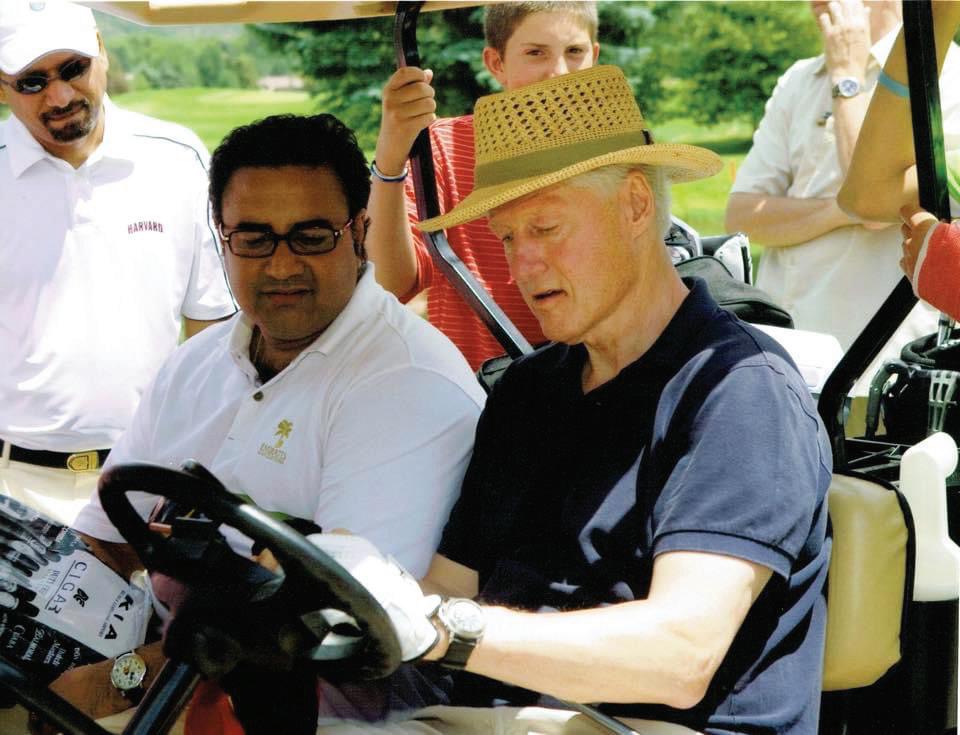
Charles Goodyear over 150 years ago created vulcanisation which is how rubber could become a product. They could not reverse it; the closest was a product called Reclaim, which took many hours, was a highly toxic process, involved a lot of energy usage, and you ended up with a product that had about 20% of the original properties of the compound.
So, you could use it for very cheap material, and that process has been banned in most countries because of its environmental impact, and its smell. But then some people evolved things along the way, but we were proud to be the first company to come up with a full recycling process. And it used something that my father created called DeLink — the process was a compound of chemicals, which you added to rubber dust, waste tires, scrap waste tires, and it turned into a rubber compound that could be used back into tires. And it held about 70–80% of the original properties. At that moment, it was the Asian financial crisis, and lot of economic issues. I believed in the company so much, that I ended up buying all the partners out and owning it. And I asked my father at the time, let us keep working on it, let us keep innovating because the technology will get there. We finally got the technology to a level that would allow us to
recycle rubber effectively and commercially, and it was used in Timberland boots and Timberland shoes, quite a lot in those days. But it was still, then, a very labour intensive process. It would take a huge amount of space and a lot of equipment to make our Green Rubber compound, and so, the next step was, if we kept expanding with labour, we would lose quality control, and there would be lots of problems after that. So, we stopped and said: look, we need to evolve this further. By this stage, my father had passed away, so I was looking at this company and saying: how do we improve it, we have already gone from version one to version two, and we just had to keep improving it. And we did. We spent a lot of money, a lot of time, energy, effort, surviving the global financial crisis and other things along the way, and then came up with a fully automated production system. Which is now night and day for our technology. That factory is now about to be opened and now we can truly deal with the world’s number one environmental hazard — we were dealing with it before, but now we can actually expand and do it in quantums that were unheard of before, and that no one else could do, and can do.
This is why I say, you have to make it commercial, otherwise it will not
europeanbusinessmagazine.com 48
With Bill Clinton former president of US
have a global impact. If you just do an innovation or technology just to show your work, you will get a pat on the back, you will get an award, but have no global impact. It has to be commercial; it has to make money; it has to make sense for it to have global impact. And that is what will make the difference. Because when you have global impact, you change everything. The problem of tires has to be dealt with and luckily, since we evolved this, the world has also become greener and demanding more green. It has changed over the last decade alone and that is fantastic. We are very excited about where our leap with Green Rubber is, and we think it will make a huge difference. Right now, we produce green rubber at roughly half the price of the equivalent virgin compound — now, that is amazing, right? Imagine you are a manufacturer of a product, any product — tire, shoes, gas stoves, anything! — imagine, that you can now buy the equivalent rubber compound for half the price and use green rubber. And green rubber can be used in different variations, so you do not have to use 100% green rubber, it is because all rubber products are technically specified, you decide what your technical requirements are. Some cases, green rubber is too good, so you have to cheapen it.
In some cases, you have much higher requirements, so green rubber, in its current form, is not the right properties. But you just have to add more virgin compound, to increase the properties, maybe use 50% green rubber and 50% virgin compound. Whatever way you look at it, you are still saving the planet. You are still using recyclable material. At the same time, the more recyclable material you use, the more money you are saving, and the more money you are making. It is win-win across the board. And that is what is exciting for me with Green Rubber.
In recent years, we have seen an increased emphasis on digital transformation across industries. How has Petra Group leveraged technology and digital advancements to optimize its operations, enhance customer experiences, and drive growth in today’s digital era?
There has always been transformation of one kind or another: automation, digital, electric, all this sort of stuff has been going on forever. And we always have to evolve, we always have to move forward. What is happening now is just a faster evolution and I think that is what has been happening in the world. What used to take 100 years to change, is changed in 50 years. What used to take 50 years,
takes 25. Now things are evolving every six months, and this is going to be the way things work. Digital transformation has helped our processing, and we used it in Green Rubber. We are definitely using it in our plantations for vanilla. We are using it in our modular systems, so it is part and parcel of what we have to do. These are tools, these are evolutions that are available, that allows us to make better products, make it faster, and to ensure quality and efficiency. As with everything, you have to balance it out, you have to make sure that depending on where you are, and the community, and the country you are in. It cannot be about replacing labour. It cannot be about making more money — there has to be a balance. And so, we use the digital revolution that is occurring now, to improve our services, the quality of our goods, to improve efficiency, and keep the balance.
Collaboration and partnerships often play a crucial role in business expansion. Could you share some examples of strategic partnerships or collaborations that Petra Group has engaged in and how they have contributed to the company’s growth and global impact?
Collaboration and strategic partnerships are critical. It is the only way we can grow globally and fast, effectively. And it takes on different forms, if you look at our modular business when it comes to India, we do not know the landscape here in terms of contractual work, operating here, and the approval system, and the construction requirements; so, we have to tie up with the right partner that can deal with that side of things, implement, and deal with the kind of things that we produce.
It is the same way with all our other businesses, even Green Rubber, depending on where we go. We have our own IPO with our monorail system, it is our IP that operates the
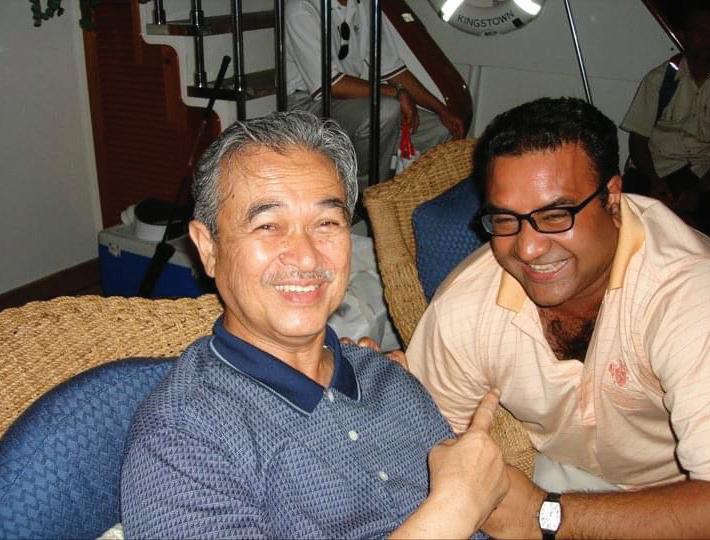
europeanbusinessmagazine.com 49
With the Prime Minister of Malaysia Abdullah Badawi
Malaysian monorail system for KL Monorail. We are now bidding for contracts in The Middle East and India, and other places. But again, we have to do that in conjunction with the right partners. Because we can do a certain amount of things but we cannot do it all. So, we have to find the right collaborative partners, with the right technology, the right skillset, that can deliver our products and/or the other essential components to the project. SO, like that, we find those kinds of partners and we move forward.
It is being willing to sharing the pot and profit, and to do it fairly. If you are too greedy, you can lose it all. If you share it fairly, and make sure everyone gets a piece, and ensure it is a positive result for everyone, we all make money. And the more you do that, the more people want to buy from you. That is what drives us in how we strategically move globally and how we implement our projects.

Looking ahead, what are the key strategic priorities and future plans for Petra Group? Are there any new ventures, industry trends, or market segments that the company is actively exploring or considering for expansion?
Right now, we are post-pandemic, we are restrengthening our foundational stones, and moving globally as quickly
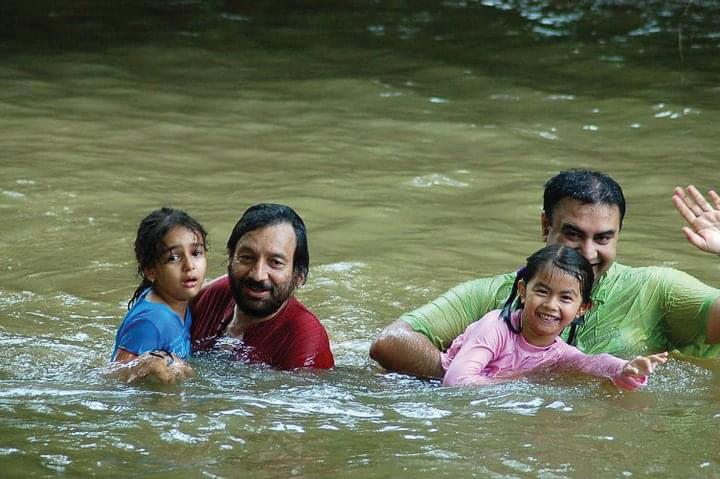
as we can with our different projects, our different businesses, and our partners. It is an exciting time, there is so much opportunity in the world. Lot of risk, but we are moving forward. I am trying my best not to invest in too many new things because we have enough on our plate.
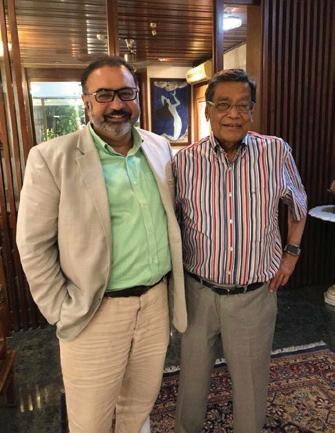
Our media company is excitedly growing in the States and now in India. It is exciting we can see that happening in platforms and the technology behind those platforms. And we will keep looking for new innovations that relate to our existing businesses. I doubt that we will look at any new technologies that are not related to what is in the group as it is, so that we can focus on what we have and grow it globally as quickly, and as effectively as we can.
One of the areas that I have invested historically in a few different companies is water and water technology because I think that is the future. It is going to be a critical part of what the world needs, and delivery of it, cleaning of it, and ensuring healthy drinking water in different parts of the world. There are lots of technologies out there; there are lots of people playing in that space, and I am one of them, and we will see where that goes. But it is an exciting time, it is a pivotal moment for humanity, you know,
europeanbusinessmagazine.com 50
With award winning director Shekhar Kapur and Vinod’s youngest daughters
With HM King Abdullah of Jordon
With recently retired Attorney General of India KK Venugopal
we will either blow ourselves up and destroy this earth or realise that we have both the technology and the ability to save this world and sav everyone that is in it. It is just the willingness to do so, and I hope we make the right decisions.
It takes a village, it takes the world now, it takes lot of us coming together and pushing. I will keep pushing and I have a lot of friends who are pushing, incredible individuals, who are doing remarkable things, trying to make a difference. I am a minor player compared to them, but I am inspired by what they do, so I will keep doing it as well. And I hope others follow, it is time for true leadership, it is time for people to stand up and be counted. And I would ask entrepreneurs and business leaders everywhere: stand up and be counted, represent who you
are, what you believe in, and try [and] ensure it comes through in the businesses you have.
Again, I will repeat, no one is going to get it all right. We all make mistakes, and God knows I have, but you know, that is how we learn. And again, it is the willingness to keep going and keep trying to do the right thing. And I think that is where business leaders must move forwards to.
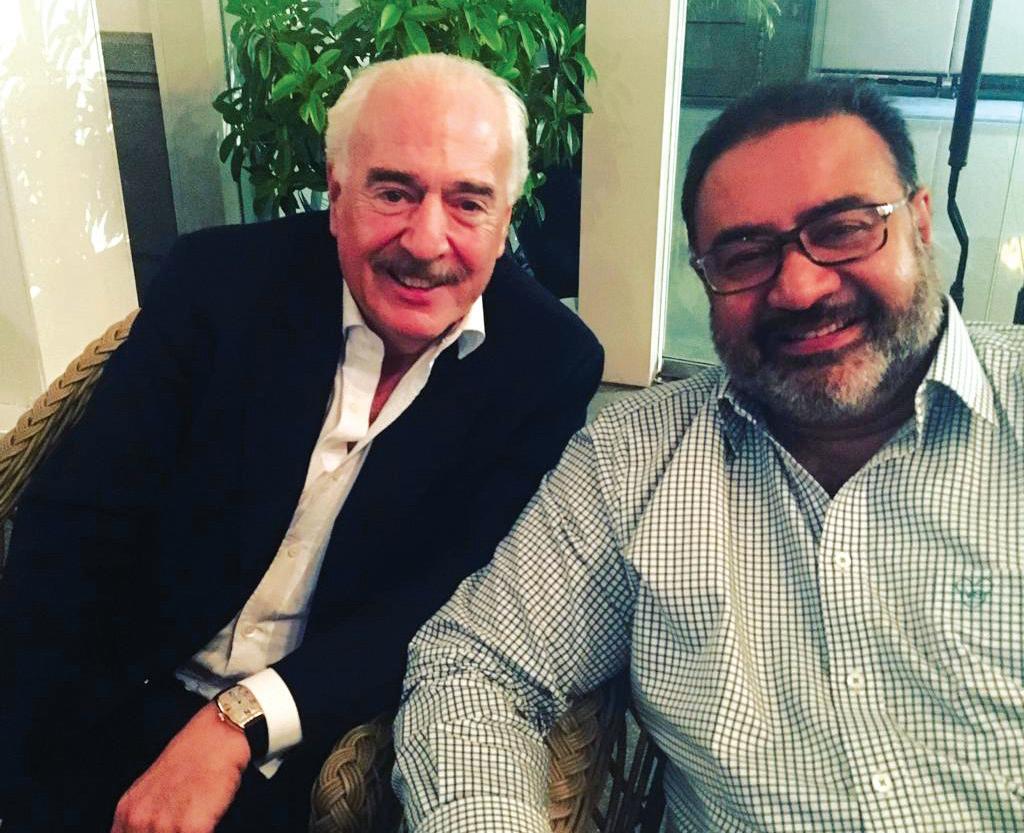
I think what is important, and it is not a secret anymore, I should share it, since it is already out. I of course, have a different perspective, in terms of what I want the Group to do and my foundation — it is my legacy. I am sitting here, waiting for a heart transplant. We have had two false starts at the last minute because of rejection, potential rejection, you know, I have to wait and see. Facing mortality
gives you a far more focused look at things: what you are about, what your legacy should be. But more importantly, exactly what needs to happen, to ensure continuity, to ensure that your belief can keep growing; and I say this just because it affects me, it affects everyone; it does not matter whether you are having a problem, a medical problem like what I am having, because that continuity surely must be a very important part of a business.
Your belief system, what you believe you want to happen, you need to share that and make sure other people around you believe that as well and are willing to push it forward even if you are not around, even if you step away. And I think that is a critical element. It is certainly what I want my Group to be, going forward.
europeanbusinessmagazine.com 51
With President Andres Pastrana of Colombia
The North Sea Summit, a cornerstone of the green European Hydrogen Economy
By Jacques Vandermeiren, CEO Port of Antwerp-Bruges
European leaders have taken a bold first step in harnessing the massive potential of the North Sea in accelerating Europe’s energy transition following the second North Sea Summit held in Belgium last April. Leaders from the EU, Germany, Belgium, Denmark, the Netherlands,

Luxembourg, France, Ireland, Norway, and the United Kingdom - the so-called North Sea Coalition - gathered in the coastal city of Ostend to confirm their goal to upscale the offshore power generation capacity by building the largest green power plant in Europe by 2050 in the middle of the North Sea.
Through seamless cooperation between the many partners in
Western Europe and beyond, we’re more likely to establish economies of scale, access raw materials and strengthen our competitiveness on the international energy market. This might be a help to get end-consumers to employ offshore power and green hydrogen.
Building upon the last year’s agreement to quadruple offshore power generation capacity to 150 GW by
europeanbusinessmagazine.com 52
2050, this year’s summit also looked at how the same wind energy produced in the North Sea could be used to support the European green hydrogen ambitions that are key to the clean energy transition.

Such an ambition is more important today than ever before, with North Sea wind energy representing a crucial player in Western Europe’s energy transition to support the electrification of our economy. The transition towards clean electricity is a key step in the broader durability transition of our industries who need vast amounts of climate neutral energy. It is however not the only path to provide that clean energy to our industry.
Some value chains and companies operate in a hard-to-abate industry, including heavy transport, steel production, refineries, and chemicals. In addition, sustainable molecules and green hydrogen are also essential. They permit us to offer a robust energy mix for companies, based on their own choice of technology, their needs within the value chains and the wishes of their customers.
Port of Antwerp-Bruges also plays a role in accelerating the energy transition and providing zero carbon energy to millions of European households and businesses. Ports like ours function as an energy and industry hub, capable of bringing all these different forms of energy together. We import all these types of energy by ships and pipeline, and export them via all available means such as pipeline, barge, rail and road. By providing clean and renewable energy sources for Belgium – and by extension Western Europe in a whole - the port aims to support the climate mission and thus our future sustainable economy. Ultimately, green hydrogen is the perfect fit to accomplish the port’s goal to go climate neutral, while also greening businesses of their partners and end-consumers. This is possible thanks to keeping a close and active collaboration with all of our partners and customers.
Such a change, however, takes more than good intentions, with a need for significant investments in
infrastructure and advanced technologies to produce green hydrogen. As a key advocate for the green hydrogen economy, Port of Antwerp-Bruges has made conscious ecological and economic changes to operations throughout the years.
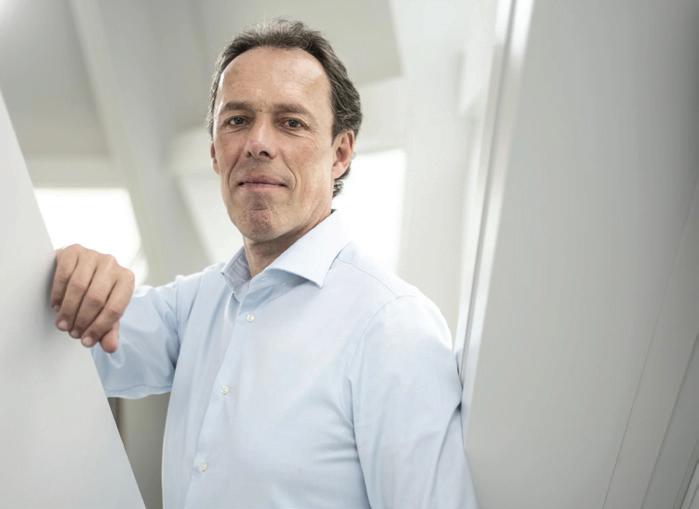
To this end, Port of Antwerp-Bruges finds itself in a strategical geographic position as a key entry point to house raw materials needed for green hydrogen, such as electrolysers, wind turbines and solar panels. As the transition is taking place rapidly, we must also appeal to imported sustainable energy sources. The North Sea wind energy will be one of them, next to the ones coming from other continents where there is sun and wind in abundance. Next to that, it facilitates the production by providing innovative logistical infrastructure to transport the green hydrogen to consumers.
Looking to the future, green hydrogen is fundamental to enable the energy transition that the Port of Antwerp-Bruges seeks to implement. By facilitating the green hydrogen economy, we are moving towards a world with reduced CO2 emissions and induced energy security. We need to keep on investing in a longterm commitment on a European and global level with different stakeholders. This way, we’ll have a strong and sustainable framework and we’re able to assure the adoption of end-consumers.
europeanbusinessmagazine.com 53
How building a long-term talent strategy can captivate investors
By Vincent Belliveau, Chief International Officer, Cornerstone
During periods of economic instability, investors consider several factors as part of their due diligence process to determine if a company is positioned for future growth. These factors include a strong business model, healthy financial figures, and a loyal customer base. However, intangible assets such as a company’s culture, employee engagement, and talent development strategy are increasingly being valued in business evaluations.
Investors want to know if a company is sustainably investing in its people, because they are the soul of every business. How employees are treated, their professional development, and their sentiment towards the organisation are crucial data points for investors.
Business performance and talent strategy are inextricably linked
The correlation between a company’s talent and its performance, including output, profitability, efficiencies, and other metrics, is exceptionally strong. According to a 2022 survey, high-performing organisations, those that surpass their peer group, placed greater emphasis on nurturing their people. For instance, whilst 76% of low-performing or laggard organisations made employee training and development a priority, 96% of high-performing organisations did so.
Furthermore, high-performing organisations not only place a greater emphasis on skill development, but their employees also share their belief in the value of this investment. There is only an 11-percentage-point
difference between employers and employees in their perception of the effectiveness of this investment. In contrast, this difference rises to 42% for laggard organisations, highlighting a significant gap in understanding. Why is this significant? Firstly, a highly skilled workforce is more capable and efficient. Such employees can perform their duties better, driving greater success for the organisation overall, in turn attracting investors. Additionally, if employees feel that their organisation is investing in their growth and prioritising their development, they are more likely to remain with the organisation. This could result in significant onboarding and recruitment cost savings, in turn leading to greater profitability – a crucial factor for many investors.
Prioritise mobility to maximise agility
Talent mobility is another key focus area that investors will be looking for. However, the state of the global economy has brought about pressures, least of which is a turbulent job market. Where just a few months ago the rate of mobility within the global workforce, as well as the demand for new talent, was sky high, today paints a different picture. In fact, many companies have enacted layoffs or hiring freezes – meaning no new talent is coming in. In the UK, MPs have warned that the shrinking workforce is actually limiting the country’s economic growth – and these challenges are being reflected on a global scale as well.
Despite the challenging job market and hiring freezes, organisations should not freeze the development and mobility of their existing talent. Leaders should focus on maintaining flexibility and agility to continue
attracting investors. The good news is that employees have a strong appetite for internal mobility, with 73% indicating interest in learning about new roles within their organisations globally. In contrast, workers who lack visibility into internal career opportunities are 61% more likely to plan to quit their job. Today’s workers clearly want the option to mobilise, so the question becomes: How can companies kickstart talent mobility and incorporate it into their culture?
europeanbusinessmagazine.com 54
Creating a marketplace of opportunities
Employees have shown a strong preference for self-service technology to discover internal mobility options, with an 80% higher likelihood of choosing this option. However, it’s important to strike a balance between technology and manager conversations, as the latter is still the top way for employees to gain visibility into growth opportunities according to learning leaders.
By leveraging technology to unveil hidden career pathways and creating
an internal opportunity marketplace, employees gain more career autonomy while still benefiting from mentoring conversations with their managers. This approach promotes talent mobility and workforce agility, which is highly valued by investors, especially during uncertain times. Companies that prioritise talent management and internal mobility, like DPDHL, have already seen success in filling open positions and mobilising the workforce. People, skills, and opportunities are the new fuel that powers businesses.
The landscape of business is evolving, and the fuel that powers it is no longer solely revenue figures and projections. Instead, it is people, their skills, and the opportunities they bring. Companies that recognise and prioritise talent management in their business strategy will stand out to today’s investors. The ability to move talent around the organisation is crucial for fostering agility and resilience in the face of any challenges that may arise in the future. In short, talent mobility is the key to unlocking success and future-proofing businesses.
europeanbusinessmagazine.com 55
The Right-Wing Movement: Creating a Safe Haven for Deplatformed Conservative Influencers

The rise of social media platforms has significantly transformed the way information is shared, allowing individuals from diverse backgrounds to voice their opinions and engage with others. However, in recent years, concerns have been raised about the deplatforming of conservative influencers, who argue that their ideas and perspectives are being suppressed by left-leaning tech companies. This essay aims to explore the claims made by the rightwing movement regarding the creation of safe havens for deplatformed conservative influencers. It will delve into the motivations behind these movements, their impact on the digital landscape, and the broader implications for political discourse and freedom of speech.
platforms. This section will examine the factors contributing to the movement’s growth, such as ideological alignment, dissatisfaction with perceived bias, and the desire for a sense of community.
Safe Havens and Alternative Platforms: Right-wing movements and organizations have established their own alternative platforms as a response to perceived censorship. This section will discuss platforms like Parler, Gab, and Rumble, which position themselves as safe spaces for conservative influencers. It will explore the features and policies of these platforms and the extent to which they provide a genuine refuge for deplatformed individuals.
1
Understanding Deplatforming: To establish a foundation for discussion, it is essential to define deplatforming and its implications. Deplatforming refers to the removal or restriction of individuals or organizations from online platforms due to perceived violations of community guidelines or terms of service. This section will explore the reasons behind deplatforming, including concerns related to hate speech, misinformation, and incitement of violence.
3 4 5 2
The Rise of the Right-Wing Movement: The right-wing movement has gained momentum in recent years, providing an alternative space for conservative influencers who feel marginalized on mainstream
Challenges and Controversies: While right-wing safe havens aim to provide an inclusive space for conservative influencers, they are not without their challenges. This section will examine the controversies surrounding these platforms, including allegations of fostering echo chambers, enabling extremism, and promoting disinformation. It will also discuss the difficulties in content moderation and the balance between free speech and responsible platform governance.
Impact on Political
Discourse:
The proliferation of right-wing safe havens has influenced political discourse both online and offline. This section will analyze the impact of
europeanbusinessmagazine.com 56
these platforms on public opinion, the polarization of political ideologies, and the potential consequences for democratic processes. It will also explore the implications for media consumption patterns and the fragmentation of the digital landscape. Freedom of Speech and Platform Responsibility:


6The issue of freedom of speech is central to the debate surrounding deplatforming and the creation of right-wing safe havens. This section will discuss the complexities of balancing free speech with the responsibility of platforms to moderate content. It will examine the role of governments, legislation, and ethical considerations in shaping this discourse.
Conclusion
The rise of the right-wing movement and the creation of safe havens for deplatformed conservative influencers reflect the evolving dynamics of online political discourse. While these alternative platforms provide a space for marginalized voices, they also raise important questions about the role of social media in shaping public opinion and democratic processes. As society grapples with these challenges, striking a balance between free speech, platform responsibility, and fostering healthy dialogue becomes essential for the future of digital communication and political engagement.
europeanbusinessmagazine.com 57
How a newsroom mentality transforms organisations

Jeb Buckler, CEO of Startup Giants PLC discusses how VCs and intermediaries can actually use these uncertain times to narrow their focus and source the Founders with the mettle to keep going in the face of all odds in new investment times…
By Blaise Hope, Founder of Origin Hope
Newsrooms are masterful, purpose -built works of fluency and art that reflect a thousand proud traditions of human society, culture and profession. They are renowned for their efficiency, creativity, and expertise in delivering information. By adopting a newsroom mentality, organisations can tap into this legacy and enhance their operations. The exhilaration of a newsroom hooks journalists in for life, whether they are thousands of miles away or permanently rooted in that centrea brain trust receiving, relaying and
i nterpreting a deluge of information like the head of an intelligence network. The action and drama of this experience belies a cold professionalism, ruthless efficiency and agreed moral code that underpins newsroom activity. Therein lies the key to telling your story
A newsroom mentality reinforces motivation and pride at every SME
Regardless of individual differences and team size, even a single disciplined person can make a significant impact. However, it is the team members’ influence on others that truly stands out.
A motivated, professional content team can lift an entire company. It is a newsroom mindset that makes that possible. By embodying a culture focused on standards, accuracy, speed, consistency, goal achievement, and audience value, they set an example for representing the company, shaping behaviour, and establishing values. Turn a limited budget to your advantage by using it as an opportunity to create a newsroom mentality through the workflows that start to naturally take shape as teams get used to the requirements for output. This will eventually help you to maximise the quality of inputs and optimise output while minimising effort.
europeanbusinessmagazine.com 58
Next, codify those processes, enforce them, let the team get used to them as standard, and like any regimen, the shared identity of the endeavour will start to reap the benefits.
In a newsroom, the ability to produce and distribute content quickly is critical. As the content age evolves, having the ability to operate like a newsroom will reflect in what you eventually publish, as well as how you see yourself and how people see you. Similarly, SMEs need to be agile and respond quickly to changes in the market, industry trends and customer feedback. Know what your audience likes, what scares them, and what excites them - let this naturally inform the work you produce and they will be able to connect emotionally with you. You can also choose angles and topics that will prompt a reaction from them, so test things like thumbnails and headline styles to see what works.
Collaborating to deliver value: a powerful SME-wide management tool
Newsrooms are machines; like the enormous, purpose-built marvels of engineering that drive high-machining production, they are instruments of information delivery.
The most respected, valued and well-reputed companies and brands around the world have teams that have adopted a newsroom mindset.
Take McKinsey: the consulting giant invests significant effort in producing insightful and engaging reports, with the obvious involvement of extremely skilled editors. McKinsey’s reports provide insight where others simply do not and, as a result, are valued by other newsrooms, especially those inhabited by journalists. McKinsey knows it has to be unimpeachable. Behind those in-depth pieces, content creation efforts are roving across the firm to speak with staff whose time is massively valuable, yet are contractually obliged to contribute to the content creation process.
When teams from various departments collaborate in a newsroom-style approach to create content that meets the needs of their audience,
the result becomes more impactful. This cross-departmental collaborative approach allows the content to align with the overall business goals, delivering consistent, relevant, and engaging content for target audiences. With content input from across your SME, collaborative processes can cut through the noise, differentiate you in the marketplace, and add flavour to content that has historically come from one siloed perspective.
A newsroom mentality unlocks far more value from data
The most important collaboration is the one between the SME and the audience it wants to reach. It is the job of a newsroom to be able to communicate that information in the most appropriate and digestible manner possible so that its target audience is both reached and satisfied.
A ‘newsroom mindset’ is about shaping attitudes and outcomes through behaviour, using controls to influence results. Just reacting to data is not “data-driven” - humans are incredibly complex and there is a reason editorial judgement is so important.
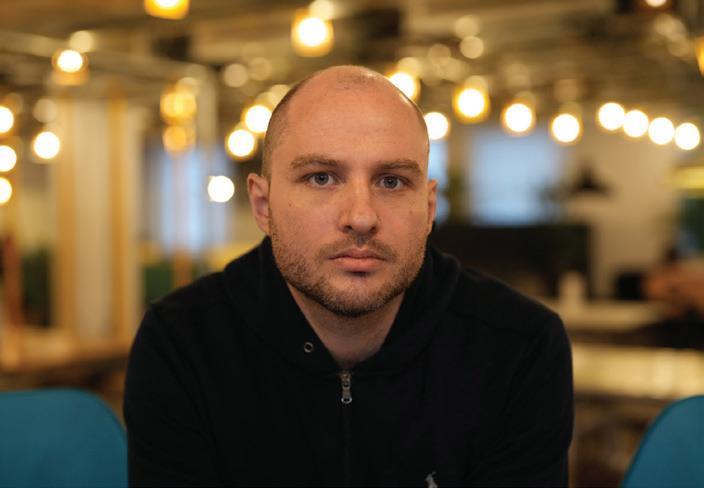
This type of mindset balances the need for speed with the power of storytelling to get people information they want before they have managed to find it themselves, and in a package that makes them actually willing to listen to it.
In a newsroom, data is used to inform a content strategy. Speed, frequency, and constant teamwork mean a unique, high-volume loop of content informed by the newsroom - in turn informed by a returning loop of audience data. Your little newsroom builds up data libraries and knowledge of trends and how to read them. This allows you to identify patterns, such as the type of content that consistently generates interest or when it gathers the most attention.
The in-house elements act as scientific ‘controls’ for what is an iterative audience engagement laboratory. The elements that change may be the format or topics and the content it refers to could be articles, long videos, live streams, shorts, social media posts, or newsletters.
Similar to how your audience forms opinions of you gradually through their interactions with your brand, you should objectively analyse and understand the reasons behind the success or failure of content. This iterative process allows you to gain insights and make informed decisions. A newsroom never stops for good reason. If you allow the culture and flows you have built to stagnate, its strengths rapidly decline.
Your audience disengages and so does your company.
The show goes on - that is the newsroom mentality.
europeanbusinessmagazine.com 59
World’s Biggest Corporates Zero Progress To Global Warming in 5 Years
“Without a fundamental change in the global economy’s functioning, it is not clear how we can achieve a significant shift.” This report adds to the growing body of evidence indicating that the world is far from meeting its climate goals. Paradoxically, major polluters like Shell and BP are refocusing on fossil fuel production after a year of substantial profits fueled by soaring oil and gas prices.
The analysis conducted by ESG Book assigned “temperature scores” to companies based on publicly
reported emission data and criteria such as emission reduction targets, aiming to assess their contribution to global climate objectives. The study encompassed companies with a market value of at least $10 billion in the United States, the United Kingdom, China, India, and the European Union. It accounted for both direct emissions from operations and indirect emissions resulting from the use of the companies’ products. This latter aspect is particularly crucial for oil and gas firms, as the majority of their emissions arise from the combustion
of their products, such as gasoline and jet fuel.
The report reveals that the number of companies in the UK, India, and the EU with emission reduction targets aligned with the Paris Agreement has remained stagnant since 2018. In the United States and China, progress has been slightly better, albeit starting from a lower baseline. In the United States, the percentage of Paris-aligned companies has increased from 11% in 2018 to 20%. Similarly, in China, the figure has risen from 3% five years ago to 12%.

europeanbusinessmagazine.com 60
While it is encouraging that many companies are becoming more proactive, the data indicates that progress is not uniform across the board. According to Klier, a combination of stricter government policies, shifts in consumer behavior, and technological advancements will be necessary to bring about a significant change in the current trajectory of climate change. Institutional investors, including pension funds, also have a crucial role to play by redirecting capital towards renewable technologies.
There are promising signs of a growing flow of funds into renewables. The International Energy Agency predicts that investments in solar power will surpass those in oil production for the first time this year. In a report last month, the IEA’s executive director, Fatih Birol, stated that for every dollar invested in fossil fuels, approximately $1.7 is now being allocated to clean energy, marking a significant increase from the one-to-one ratio five years ago. However, it is projected that over $1 trillion will still be directed towards oil, gas, and coal this
year, surpassing the level compatible with achieving net-zero emissions by 2050, as stated by the IEA. The World Meteorological Organization reported in May that there is a 66% chance that the planet’s temperature will exceed the 1.5 degrees Celsius threshold for at least one year within the next five years. While this would be a temporary breach, it serves as a stark reminder of the accelerating pace of climate change, leading to rising sea levels, more frequent extreme weather events, and the irreversible loss of critical ecosystems.

europeanbusinessmagazine.com 61
How artificial intelligence is transforming the face of banking
Artificial intelligence (AI) is revolutionizing the banking industry, changing the way businesses operate and providing a range of benefits to customers. The use of AI technology has transformed various aspects of banking, including mobile banking and personalized customer service. Long gone are the days of standing in queues for hours to access banking services. Consumers now have the desire to conveniently reach these services from the comfort of their own homes, leading to a significant increase in demand for mobile banking. A recent study conducted by Insider Intelligence found that more than 45 percent of respondents considered mobile banking as one of the top three features influencing their choice of financial institutions.
Prominent figures in the tech industry, such as Mark Zuckerberg, Elon Musk, and Bill Gates, have been instrumental in driving the adoption of AI. They have utilized AI tools and applications to understand consumer preferences and are now influencing other businesses to embrace AI-based technologies. Consequently, banks are making substantial investments in AI and predictive analytics to make better decisions and provide customized services.
Even banks that were initially hesitant to embrace AI technology have started using AI chatbots to handle customer queries. As Elon Musk predicted, there will be job disruptions as robots become capable of outperforming humans in various tasks.
Risk management is a critical area where AI is making a significant impact. Money laundering has become an emerging issue for banks, as they often unintentionally facilitate such processes. The Financial Action Task Force (FATF) recognizes money

laundering as an international problem and emphasizes the importance of global cooperation. A study conducted by the United Nations Office on Drugs and Crime (UNODC) revealed that approximately 3.6 percent of global GDP, equivalent to $1.6 trillion, is being laundered each year. In the United States alone, the annual money laundering value amounts to $300 billion, as reported by Zippia. These figures are alarming for banks, especially as global economies face recessionary pressures reminiscent of those experienced in 2008.
Leading banks are leveraging realtime AI risk management technologies to identify customer behaviors and transaction patterns, enabling them to combat terrorist financing and money laundering effectively. Through continuous monitoring, highrisk accounts can be flagged by comparing a customer’s expected monthly turnover with their actual monthly transactions. This allows banks to implement controls that safeguard against losses and fraud, ultimately enhancing ROI for their consumers. It is worth noting that implementing AI technologies is just the beginning of the journey. AI processes require optimized frameworks and hardware accelerators to efficiently manage assignments. Additionally, financial institutions need to establish streamlined processes and effectively communicate them with their staff to rapidly achieve their AI goals. As Simon Carter, Head of Deutsche Bank’s Data Innovation Group, emphasizes, “Artificial Intelligence technology invariably needs human beings.”
According to a survey by Deloitte, organizations that can effectively communicate a bold vision with an AI strategy are approximately 1.7 times more likely to achieve high outcomes
compared to those that do not. By leveraging big and complex datasets, banks can create risk frameworks that provide precise and timely analysis.
AI also plays a crucial role in understanding consumer behavior. Banks use AI-integrated services and products to cater to customers based on their preferences and search patterns. One of the key advantages of AI in banks is its ability to learn and improve over time. For example,
europeanbusinessmagazine.com 62
Standard Chartered utilizes machine learning to decode complex data compilations and extract relevant information, aiding in the development of targeted marketing strategies. Vishu Ramachandran, Head of Standard Chartered’s Retail Banking Group, emphasizes the importance of transparency and explainability in AI-based decision-making, highlighting that it not only provides a competitive advantage but also serves the best interests of clients. This approach has
helped decrease costs and increase productivity.
However, data breaches remain a concern for banks using AI technology. Given the large number of daily transactions recorded by banks, the continuous collection of data raises significant security issues. A recent data breach at Flagstar Bank, one of the largest banks in the US, put its 1.5 million customers at risk.
While data protection remains a challenge, banks cannot ignore the
significance of AI in modern banking. Implementing robust data protection protocols is crucial to counter such threats. Additionally, banking institutions need to lay the groundwork to support AI teams that can deliver efficiency, consumer satisfaction, and improved ROI.
AI presents exciting opportunities, and modern banking must include accessible, secure, and consumer-driven data centers to accelerate data collection and analytics.

europeanbusinessmagazine.com 63
THE SUPPLY CHAIN DUE DILIGENCE DIRECTIVE (CSDDD): Transforming Business Practices for a Sustainable Future
Introduction
In an era of heightened global awareness about social and environmental responsibility, businesses are facing increasing pressure to adopt sustainable practices throughout their supply chains. The European Union’s Supply Chain Due Diligence Directive (CSDDD) has emerged as a pivotal legislative measure aimed at holding businesses accountable for their impacts on human rights and the environment. This overview delves into the implications of the CSDDD for businesses operating within the EU, exploring its core principles, scope,
and potential transformative impact on business practices.
The CSDDD in a Nutshell
The CSDDD is a groundbreaking legislative initiative that seeks to ensure responsible business conduct and mitigate adverse social and environmental impacts stemming from global supply chains. This directive places the onus on businesses to conduct due diligence, identifying and addressing potential human rights abuses, labor exploitation, and environmental degradation.

Key Principles Driving the CSDDD
Due Diligence: At the heart of the CSDDD lies the principle of due diligence, compelling businesses to assess, prevent, and mitigate risks associated with their supply chains. This entails identifying potential issues, implementing measures to address them, and monitoring progress over time.
Human Rights and Environmental Concerns: The CSDDD emphasizes the protection of human rights, including labor rights, and addresses environmental issues such
europeanbusinessmagazine.com 64
as pollution, deforestation, and climate change. By incorporating these concerns, the directive aims to foster responsible and sustainable business practices.

Transparency and Accountability: Transparency and accountability are cornerstones of the CSDDD. Covered businesses are required to provide clear and comprehensive information on their due diligence processes, measures taken, and the outcomes achieved. This fosters a culture of transparency and ensures businesses are held accountable for their supply chain practices.
The Wide-reaching Scope of the CSDDD
The CSDDD applies to businesses operating within the EU, irrespective of their size or sector. It encompasses manufacturers, importers, distributors, and retailers, recognizing that the responsibility for responsible supply chains spans the entire value chain. The directive is also applicable to complex global supply chains, ensuring that businesses address risks and impacts at every stage of the process.
Implications for Businesses
The Compliance Challenge: Adhering to the CSDDD presents significant challenges for businesses. It necessitates aligning supply chain practices with the directive’s requirements, which may involve mapping intricate supply chains, identifying potential risks, and implementing effective mitigation measures. Compliance efforts may require substantial investments in resources, technology, and expertise.
Reputational Impact: Non-compliance or inadequate efforts to address adverse impacts can have severe reputational consequences for businesses. In an era of heightened consumer and investor consciousness, ethical consumers demand transparency and accountability. Businesses failing to demonstrate a commitment to responsible supply chains risk reputational damage.
Competitive Advantage: On the flip side, businesses that proactively embrace the CSDDD can gain a competitive edge. By implementing responsible supply chain practices, they attract ethically-minded consumers and investors, differentiate themselves in the market, and secure long-term sustainability. This affords them a competitive advantage in a shifting business landscape.
Collaborative Engagement: The CSDDD encourages collaboration among businesses, industry associations, and other stakeholders. Sharing best practices, engaging with suppliers, and collectively addressing systemic challenges can lead to more effective solutions and a stronger commitment to responsible supply
chains. Collaborative engagement fosters innovation and bolsters sustainable practices throughout industries.
Steps for Businesses to Ensure Compliance
Comprehensive Supply Chain Mapping: Businesses must gain a holistic understanding of their supply chains, identifying suppliers, subcontractors, and raw material sources. Mapping the supply chain enables them to identify potential risks and areas for improvement.
Risk Assessment and Mitigation: Thorough risk assessments allow businesses to pinpoint high-priority areas where due diligence measures must be implemented. Mitigation strategies may involve engaging with suppliers, setting clear expectations, and providing support to ensure compliance.
Supplier Engagement: Building robust relationships with suppliers is crucial for implementing responsible supply chain practices. Collaboration, clear communication, and capacity-building initiatives can empower suppliers to align with the CSDDD’s requirements, fostering a shared commitment to sustainable practices.
Conclusion
The Supply Chain Due Diligence Directive (CSDDD) represents a watershed moment for businesses operating within the EU, setting the stage for a paradigm shift towards responsible and sustainable supply chains. By emphasizing due diligence, human rights, environmental concerns, and transparency, the directive challenges businesses to reassess their practices, leading to enhanced accountability and tangible progress. While compliance may pose challenges, the CSDDD also presents opportunities for businesses to gain a competitive advantage, bolster their reputation, and contribute to a more sustainable future. By embracing the principles of the CSDDD, businesses can pave the way for transformative change that transcends borders and paves the way for a more responsible and sustainable global economy.
europeanbusinessmagazine.com 65
THE FUTURE OF GENERATIVE ARTIFICIAL INTELLIGENCE:
Shaping a World of Infinite Creativity
Introduction
Generative Artificial Intelligence (AI) has emerged as a groundbreaking technology, pushing the boundaries of human creativity and innovation. Through its ability to generate and create new content, it has revolutionized industries such as art, music, design, and literature. As we stand at the forefront of this transformative era, it is imperative to explore the potential impact and implications of generative AI in shaping our future. In this feature editorial, we delve into the promises, challenges, and ethical considerations surrounding the future of generative AI.
Unleashing Creative Potential
Generative AI has the power to unlock the creative potential that lies within the vast realms of human imagination. It empowers individuals and industries to break free from traditional creative constraints and discover uncharted territories of innovation. From generating awe-inspiring pieces of art to composing soul-stirring music, generative AI has already showcased its ability to produce high-quality content that rivals the work of human artists. By enabling collaboration between human creators and AI algorithms, we can envision a future where generative AI acts as an invaluable muse, augmenting and enhancing human creativity.
Enhancing Efficiency and Productivity

In addition to stimulating creativity, generative AI holds immense promise in boosting efficiency and productivity across various sectors. From automating repetitive tasks to providing real-time insights and recommendations, AI-powered generative systems
can streamline processes, saving valuable time and resources. For instance, in the field of design and architecture, generative AI algorithms can swiftly generate numerous design iterations based on specific parameters, leading to more optimized and sustainable structures. This efficiency-driven approach could revolutionize industries, leading to increased productivity and innovation.
As generative AI becomes more sophisticated, it becomes increasingly important to address the issue of explainability and trust. Users should have a clear understanding of how AI systems generate content, ensuring transparency and avoiding biases or unethical practices. Efforts are underway to develop explainable AI models that shed light on the decision-making processes of generative algorithms. Researchers and developers must continue to prioritize ethical considerations, creating systems that can be scrutinized, understood, and trusted by both creators and consumers.
Preserving Human Creativity and Ethical Consideration
While generative AI promises to amplify human creativity, it also raises concerns about the loss of human artistic expression and originality. Critics argue that an overreliance on AI-generated content may lead to a homogenization of artistic styles and dilution of human ingenuity. However, the key lies in recognizing generative AI as a tool rather than a replacement. By embracing AI as a collaborator, human creators can harness its potential to explore new frontiers while preserving their unique perspective, emotions, and authenticity.
As with any transformative technology, generative AI brings forth a range of societal and ethical considerations. Questions surrounding intellectual
property rights, ownership, and the potential impact on employment must be thoughtfully addressed. Striking a balance between AI-assisted creation and human authorship is crucial to ensure fair attribution and recognition of creative work. Furthermore, safeguards need to be implemented to prevent malicious use of generative AI, such as deepfakes or misinformation campaigns. Policymakers, technologists, and society at large must work together to establish ethical guidelines and frameworks to mitigate the risks associated with generative AI.
europeanbusinessmagazine.com 66
Education and Empowerment
To fully embrace the potential of generative AI, it is essential to invest in education and skill development. As AI becomes an integral part of the creative process, individuals must be equipped with the knowledge and expertise to leverage its capabilities effectively. Educational institutions and organizations should prioritize interdisciplinary programs that combine art, design, and technology, enabling individuals to become fluent in the language of generative AI. Empowering future generations
with the necessary skills will foster a more inclusive and diverse creative landscape, where people from all backgrounds can participate and contribute.
Conclusion
Generative AI has the power to shape a future where creativity knows no bounds. By augmenting human imagination and boosting efficiency, generative AI stands to revolutionize industries and open up new possibilities for innovation. However, it
is imperative to navigate the ethical, societal, and creative challenges associated with this transformative technology. By fostering collaboration between humans and AI systems, prioritizing transparency and explainability, and upholding the authenticity of human creativity, we can create a future where generative AI is a catalyst for boundless inspiration, innovation, and human expression. The journey ahead is both exciting and challenging, and it is up to us to navigate the path wisely and responsibly.

europeanbusinessmagazine.com 67
NAVIGATING
THE SELECTION OF
A NEW COMMUNICATIONS PARTNER: Safeguarding Your Team and Customers
 Chris Peregrine, Head of Product Management at Digital Well
Chris Peregrine, Head of Product Management at Digital Well

When it comes to customer care teams striving to provide an excellent customer experience, choosing the right communications partner is vital. In an increasingly cyber-threatened world, the stakes are even higher, requiring a partner who can keep your organisation compliant and secure. So how do organisations conduct thorough due diligence when selecting a communication partner to ensure the protection of your teams and customers?
Safeguarding Communication Teams with Secure Customer Experience Tools
To offer a secure environment for your communication teams, it is essential to adopt best practices and employ secure customer experience tools. By leveraging secure customer experience tools, businesses can instil confidence in their communication teams, knowing that they are equipped with the necessary resources to handle customer data securely and responsibly.
These tools encompass a range of features and functionalities that contribute to safeguarding sensitive information. For instance, encryption is essential to securing communication tools, as it fortifies data transmitted between parties, so it remains private and protected from unauthorised access. By encrypting customer interactions, businesses can effectively shield their communication teams from potential breaches and maintain the trust of their customers. Furthermore, secure customer experience tools often incorporate robust authentication mechanisms, such as multi-factor authentication (MFA).
MFA adds an extra layer of security by requiring users to provide multiple forms of identification before accessing sensitive customer data. By implementing MFA, businesses can significantly reduce the risk of unauthorised access, mitigating potential threats and fortifying the overall security posture of their communication teams.
Understanding the Risks in Communication Strategies
Effective communication strategies are vital for businesses, but they also come with risks that can be exploited by cyber threats. By recognising these risks, businesses can take practical steps to alleviate them, protecting their operations and customer data.
One significant risk is the transmission of sensitive information over unsecured channels. Businesses use various communication platforms, but these can be targeted by cybercriminals. Employing secure communication tools and practices, such as encryption and multi-factor
authentication, decreases the chance of a data breach.
The human element is another critical risk. Employees can unknowingly become vulnerabilities if they are not trained to recognise and respond to cyber threats. By providing comprehensive cybersecurity training, businesses empower their employees to identify and report suspicious activities, minimising the risks of human error.
Remote work and digital communication platforms introduce additional risks. Remote employees with personal devices or on unsecured networks are more vulnerable to attacks. Businesses must establish robust security protocols for remote work environments, including VPNs and secure video conferencing platforms.
Asking the Right Questions during the Selection Process
When selecting a communication partner, it is vital that you ask the right questions to ensure that the chosen
europeanbusinessmagazine.com 68
candidate can successfully isolate and mitigate cyber risks. By posing targeted inquiries, businesses can gain insight into the partner’s capabilities and align them with their specific cybersecurity needs.
This section presents a comprehensive list of pertinent questions designed to aid businesses in evaluating potential partners and making informed decisions:
• One crucial aspect to consider is whether the prospective partner has a thorough understanding of the current threat landscape and stays updated with emerging cyber risks. Inquire about their knowledge of the latest attack vectors and their proactive measures to address these threats. They should also have a robust approach for ensuring devices are end-to-end protected through a strategy for Unified Endpoint Management (UEM ). By assessing their awareness and preparedness, you can gauge their ability to anticipate and mitigate potential risks effectively.
• Another key consideration is the partner’s experience in implementing and maintaining secure communication strategies. Ask about their track record in safeguarding customer data and their approach to securing sensitive information. Request examples of their previous successes in mitigating cyber threats and inquire about any incidents they have encountered and how they handled them. This information will provide valuable insights into their expertise and their commitment to security.
• Additionally, Forbes Technology Council shares 16 critical questions that should come up in the course of a cybersecurity assessment . They suggest asking if the company is only focused on compliance or if they are also considering cyber risk management as part of a broader business context. The Security Roundtable provides guidance on when to ask follow-up questions about cybersecurity
• In addition to evaluating the partner’s expertise, it is essential to assess their commitment to information security standards. ISO 27001 certification serves as a valuable criterion in this regard. Inquire whether the potential partner possesses this certification, as it demonstrates their adherence to internationally recognised best practices for information security management. ISO 27001 certification ensures that the partner has established robust security controls, risk management processes, and continuous improvement frameworks, giving you confidence in their ability to safeguard your communication teams and customer data.
Strengthening Defences and Enhancing Customer Experiences
Selecting a trustworthy and secure communications partner holds immense significance for businesses striving to provide unparalleled customer experiences while prioritising the safety of their teams and customers. By adhering to the guidelines presented above, organisations can undertake thorough due diligence and make well-informed choices, guaranteeing the selection of a partner well-prepared to tackle cyber risks. It is crucial to remember that the search for the ideal partner extends beyond enhancing communication; it involves fortifying your defences against the ever-evolving landscape of threats. By partnering with a reliable communications provider, businesses can unlock a multitude of benefits. Not only can they elevate the quality of customer interactions, but they can also instil confidence in their stakeholders by demonstrating a proactive approach to security. A well-selected partner empowers organisations to navigate the complexities of communication strategies with ease, enabling them to focus on their core competencies while knowing that their sensitive data and operational integrity are safeguarded. Investing the necessary time and effort into selecting a dependable communications partner paves the way for sustained success and resilience in an increasingly interconnected world.

europeanbusinessmagazine.com 69
Why did you choose to launch in the UK and what have been the main challenges?
The UK is the biggest market in Europe and is very advanced in the world of freelancing, with over 1.9 million freelancers contributing an estimated £278bn to the UK economy each year1. That’s why launching in the UK was an obvious next step for Malt, and acquiring COMATCH last year, a German-founded curated marketplace for independent management consultants and industry experts with a strong presence in the UK, helped us to kick-start that expansion.
However, a lot has changed following Brexit and the pandemic, so launching Malt last year has certainly been more challenging than it could have been years ago. Acquiring visas for our employees in other markets to
European Business Magazine caught up with Vincent Huguet

The co-founder and co-CEO of the leading European freelance marketplace, Malt. We spoke to him about launching a business in new territories, the growth of the freelance market and how the perception of freelancing has changed over the last 10 years.
move to London is just one example. We’ve also had to adapt to different rules and regulations that we haven’t experienced in other markets. IR35 is an obvious one but we’ve also modified our product so that clients can pay in pounds and freelancers can be paid in pounds because all of our business transactions were in euros previously.
But, we’re thrilled that our community of freelancers and independent consultants has already grown to over 13,000 in the UK. We’ve also found M&A to be a definite accelerator for Malt and it’s something we might consider more of in the UK.
What are your biggest learnings from expanding into new territories?
We’ve found that there is a clear upward trend in freelancing in every market, but that market dynamics can differ hugely from one country to another, with independent workers
receiving different levels of support depending on the market they reside in and work in. For Malt, this means legal and financial adaptations to fit each market.
Having a team in each market with local experts has been a key learning as every market is different and challenging to understand. It also means we’re able to focus on accessing local talent which has been crucial to our success. When we acquired Comatch last year, it meant we also got a team of 10 people in London with 5 years of experience, which has helped with our progress there.
Alongside this, every country’s culture is very different so one of the biggest challenges we’ve faced as we expand into new territories is an internal one: what is global and what should be owned at a local level, whether it’s internal policies, marketing campaigns or product adaptations. And clear learning has been how to adapt to a team’s country
europeanbusinessmagazine.com 70
1 IPSE: The Self-Employed Landscape Report 2022
culture while keeping the same company culture threaded through all of our teams and markets, to have maximum impact as one organisation. As we’ve launched in new markets, we’ve been able to grow our offering to corporate clients by supporting them in more of the markets where they have a presence. And we’ve been fortunate to give our team members opportunities to move from one country to another and take their learnings from one country to the next.
How much of a factor do you think the move to hybrid and remote working since the pandemic has influenced the growth of the freelancing market?
Not only has Covid changed how people work in offices, but they are considering different options and we’re seeing an acceleration in the number of people choosing to freelance rather than work in full-time employment. We’ve seen a 39% year-on-year growth.

As a consequence, companies have had to adapt to find the talent they need, with many organisations more open to hiring consultants and freelancers to work on short-term and medium-term projects and strategies. I believe the future of work is hybrid, not 100% remote, but at least now companies are comfortable working with someone who lives further away
- say Manchester or even Brusselsand can go to the office in London for a few days each month to work with the rest of the team. This means organisations rely more on freelancers who can work flexibly to support business needs. Before the pandemic, that was rarely considered.
When you founded Malt ten years ago, did you envisage freelancing would become the popular career choice that it has become today? How has the perception of freelancing changed over time?
When we founded Malt, we knew there was a wave forming towards freelancing that largely went unnoticed. There was a huge opportunity for us to support more people in their freelancing careers, by offering visibility to clients, payment security and helping them build their reputation as a freelancer.
Having said that, we could never have predicted Covid and how it was a huge accelerator of independent work becoming such a popular career choice, with flexibility now at the top of many workers’ agenda. A mixture of the pandemic, digital transformation and the current economic recession have made many people question their careers and try their hand at freelancing.
How have attitudes in companies hiring freelancers changed over time and do you think this is driven at the board level or further down the funnel?
There is definitely a challenge that comes with changing outdated ways of working to encourage business leaders that freelancers can really support their needs and excel in their growth. Mid managers can sometimes be reluctant to change, but a new generation of managers who want to play a part in digital transformation enjoy having more choice over who they work with to support their business needs. However, the number one priority for CEOs and the board is access to talent, even in times of uncertainty or recession. The war for talent continues to grow and businesses are more focused on short-term projects to weather the unpredictability, so more employers are open to hiring freelancers and consultants than ever before. Organisations are looking to optimise efficiencies which in turn means there’s more scope to hire short-term expertise rather than permanent roles, and there’s a wider acceptance now that freelancers can fill gaps in skills and expertise. At Malt, we’ve worked with over 60,000 organisations in Europe that now rely on freelancers to fulfil their business needs and we only expect this to continue growing.
europeanbusinessmagazine.com 71
Tackling Change Fatigue in Employees
 By Nick Gold, MD, Speakers Corner
By Nick Gold, MD, Speakers Corner
Since the Covid-19 pandemic began, businesses have undergone unprecedented change. According to Gartner, the average business planned ten enterprise changes in 2022, compared with two in 2016.
Change is necessary in all aspects of life. If you’re standing still, you’re ultimately going backwards. But when business changes become
overwhelming, staff can struggle to cope. 71% of staff say they’re overwhelmed by the amount of change at work. More than half of those employees are considering looking for a new job.
This reaction is known as change fatigue, and it can pose a problem for forward-thinking businesses. While change is necessary to keep moving forward, it can take its toll on your team. Our recent research shows that just 18% of UK business owners
consider changes within an organisation to be the main cause of stress. As business leaders, we must be able to recognise and tackle change fatigue so we can keep staff happy and thrive as businesses.
The post-pandemic boom of corporate change culture
Over the last few years, we’ve had to deal with a lot of significant changes in a compressed amount of time: Covid,
europeanbusinessmagazine.com 72
Brexit, the cost of living crisis, and the war in Ukraine. In light of this, many businesses are having to redefine and rebuild themselves.
The pandemic changed everything for Speakers Corner. With the live events industry obliterated by lockdowns, we were forced to find a new niche in virtual events. When we realised we had done perhaps more online events than anyone else, we were able to shift our focus and guide our team, clients, speakers, and the whole industry through these turbulent times.
The scale of change demanded from businesses over the last three years is incomparable to previous times. And it often feels like there won’t be a time
when things are less hectic than they are right now.
But everything comes in cycles.
Understanding that transformation feels all-consuming right now, but we will have time to breathe. In fact, you have time to breathe right now if you manage change in a way that’s practical and sustainable.
Understanding the impact of change on employees
While change can feel overwhelming for business leaders, this can be magnified for employees, who often have less of a say in the changes required of the organisation.
This is where communication comes in. People want to know your vision at a high level. Communicating this to everyone is essential. From there, your management team can take over. They can have further conversations at a team and individual level to ensure everyone knows how these changes will impact them. Processes, timescales, workloads: all of these must be concrete and manageable for each team and staff member.
It’s also important to help staff understand that though your business transformation may take months or even years to complete, they won’t be in a constant state of upheaval. Knowing when changes are likely to affect them can help staff focus their energy and attention in the right place at the right time rather than fielding a constant stream of worry.
This comes down to good leadership and change management. And times of change are an excellent opportunity to showcase your leadership skills. While the transformation may be true to your vision, you don’t have to be the flagbearer of change. You can support other managers to help teams navigate turbulence and ensure staff feel safe and supported.
Recognising change fatigue
The signs of change fatigue are different in everyone. So you must treat your staff as individuals and understand they may have other problems at different times. They’ll also need
additional skills to cope with these changes, so you must be willing to invest in these.
As a leader, avoid projecting your own opinions onto your staff. Don’t assume that because you’re coping or not coping, the same is true of others. Instead, ask people how they’re dealing with the changes. If they tell you they’re struggling, have a plan for how you’ll deal with this. It could involve taking time away or adjusting the way they do their job.
Either way, ensure your change plan protocol will make a difference and give staff the support they really need to adjust to your new vision.
Navigating successful, sustainable business transformation
There are three key ways to ensure successful, sustainable change in your organisation:
1. Treat people as individuals. This helps you understand the unique challenges each team member is facing, so you can create an individual support plan for them.
2. Be brave. Try new things without succumbing to crisis mode. Don’t be afraid to get things wrong. Your staff and your customers want you to succeed, so be bolstered by this support.
3. Communicate with your team. Let them know that you’re all in this together and you want to embrace new ideas from people at all levels. These three practices allow you to embed a culture of change in your organisation rather than seeing your current project as a one-and-done affair. Instead of creating an overwhelming, all-encompassing Big Change Plan, view each act of progress as a small wave of change. This will significantly redefine how you and your staff view business transformation for the better.
Ultimately, making change part of the ongoing conversation can help staff feel more settled and adaptable. So they can achieve your vision with focus and positivity, ensuring they thrive alongside your business.

europeanbusinessmagazine.com 73
AUM in Europe’s Robo-Advisors Market to Reach $1.29 Trillion by 2027
Bas Kooijman, CEO and Asset Manager of DHF Capital S.A., cites that assets under management (AUM) in the robo-advisors market in Europe are projected to reach approximately $794.40 billion in 2023 and show a compound annual growth rate (CAGR 20232027) of 12.80% to result in a projected total amount of about $1.29 trillion by 2027. With this forecasted growth on the horizon, Kooijman shares insights on why the future of wealth management will rely heavily on robo-advisors.
Employing mathematical algorithms to provide sound financial advice, robo-advisors have become increasingly sought out in Europe with 61.70 million market users expected by 2027. This impending uptick in investors who seek to leverage the power of algorithms to grow their investments can be attributed to several factors including lower fees and a higher return on investment (ROI) than that of human advisors or the
traditional banking system with most robo-advisors charging roughly just 0.25% per year.
The launch of Chat GPT, which registered five million new users on the day it was released, is also contributing to this investment market renaissance. More people are realizing the advantageous use cases of AI across all industries. This world-revolutionizing technology is witnessing increased adoption and implementation across Europe while the nation simultaneously strives to boost research and industrial capacity but also safeguard citizens’ fundamental rights. Furthermore, data shows that if Europe on average develops and diffuses AI according to its current assets and digital position relative to the world, it could add some $2.92 trillion, or 20%, to its combined economic output by 2030.
Bas explained: “Algorithms and algorithmic methods have been with us already now for a very long time, and
AI is now reshaping how consumers and companies alike access and manage their finances. With predefined rules, computers can be programmed to explore markets for the benefit of clients and when those rules match reality, an alert can be issued to a portfolio manager to help them further minimize risk and maximize profit. This automation essentially provides security while enabling a portfolio to maintain a high-class liquidity level.” For traders, algorithms have the potential to make thousands of trades per second if set right; a 2019 study showed that around 92% of the Forex market was performed by algorithms, rather than humans. Bas’ securitization firm, DHF Capital, has leveraged the power of algorithms to provide investors in the region, and across the globe, with an annual average ROI of 20% since its inception; investors who have worked with him since the company’s inception have witnessed a 114% ROI, more than doubling their initial investment.
europeanbusinessmagazine.com 74
Leaders Call for Innovation, Entrepreneurship and Global Cooperation to Revitalize Growth
More than 1,500 leaders from around the world came together at this important juncture for the global economy to signal their shared interests in advancing dialogue, innovation and collaboration to revitalize growth.
Gathering in Tianjin, People’s Republic of China, for the first in-person Annual Meeting of the New Champions since 2019, policy-makers, business executives, international organization and civil society leaders, academics and innovators reflected on the complex, interconnected global challenges of the past four years, and proposed joint solutions to create a more inclusive, sustainable and resilient future.
The world faces low growth, high costs of living, increasing geopolitical fragmentation, widening inequality and the growing effects of the climate and nature crises, as well as the continuing repercussions of the pandemic on industry, society and trust. These converging crises have

created heightened levels of uncertainty and raised questions about how to build an economy that works for all. Leaders called for a new approach to “re-globalization” and urgency in reviving cooperation for shared challenges.
Li Qiang, Premier of China, called for “win-win cooperation” to address the world’s challenges. “We must follow the trend of history, cement the consensus on development and continue our efforts to build an open-world economy,” he said.
“Time is of the essence” for climate finance and action, said Mia Mottley, Prime Minister of Barbados, urging public and private sectors, East and West, North and South, to work together to innovate and cooperate to address shared global risks. “Part of the difficulty is that we cannot take another crisis,” she added.
“This is the big opportunity to look at those areas, those regions, those countries that were left out of the
first wave of globalization,” said Ngozi Okonjo-Iweala, Director-General, World Trade Organization. “Let us look at those areas that are friendly to investment and see if we cannot decentralize and diversify supply chains so that we bring these areas into world trade … to spur global growth.”
Emerging technologies, entrepreneurship and innovation offer hope to overcome threats, drive economic growth and raise living standards. “The world needs bold and visionary leaders who can harness the power of innovation and collaborate across sectors, regions, nations and cultures to create a more peaceful, inclusive and resilient future,” said Klaus Schwab, Founder and Executive Chairman, World Economic Forum. Yet new technologies also raise new risks, and participants called for responsible and ethical design, development and applications of emerging technologies. Regulators and policy-makers also called for greater
europeanbusinessmagazine.com 75
human capital investment in the current economic and technological transformation. “We must work to educate and train people with the necessary skills for a digital future, as well as prevent biases in algorithms,” said Emilija Stojmenova Duh, Minister of Digital Transformation, Slovenia. “But fears should not hinder the innovation,” she said.
Across more than 160 sessions and workshops at the meeting, the Forum and its partners launched or advanced more than 25 high-impact initiatives, serving as ongoing platforms for multi-year collaboration across geographies and industries.

On trade and geopolitical collaboration
Business leaders and government officials shared insights on navigating trade tensions and finding balance between strategic competition and cooperation to manage global challenges.
“The world is still fragmented. There are still fundamental challenges, and if we do not get into a situation of more collaboration, we will pay an economic price for that,” said Børge Brende, President, World Economic Forum. “For many years, trade was the driving engine for growth,” he added. “If we introduce new tariffs and a beggar-thy-neighbour approach instead of a prosper-thy-neighbour approach, we will not get back on a sustainable growth trajectory.”
Initiatives:
• China formally ratified the World Trade Organization Agreement on fisheries subsidies to increase ocean sustainability.
• Senior government and business leaders advanced discussions on future-proofing the Middle Corridor as an alternative trade route through upgraded infrastructure, stronger regional integration and de-risking supply chains.
• A new white paper on “carbon competitiveness” outlined future scenarios and called for trade policy coherence that supports the net-zero transition.
On climate action, energy transition and nature protection
The energy transition has plateaued, and equity is at risk, according to the new Fostering Effective Energy Transition 2023, which called for a speedier, more inclusive shift to renewable energy.
Speeding up the transition and delivering on the targets outlined in the Paris Agreement offers unprecedented opportunities. “We’ll have to invest more, we’ll have to mine more materials, we’ll have to produce more (public-private-partnership) projects, more power generation, more renewable energy,” said Benedikt Sobotka, Chief Executive Officer, Eurasian Resources Group. “This is the biggest economic opportunity – and opportunity for innovation – that this generation of humankind has ever seen.” Innovators offered models to support further action on fighting the climate crisis and protecting biodiversity. For example, successful ocean innovators from China shared their advances in technologies to protect and restore coastal ecosystems, support food production and bolster coastal tourism. Ten UpLink innovators, representing the winning cohort of a recent challenge in partnership with Saudi Arabia, showed how they are securing food in arid climates. Additionally, a new paper also outlined a blueprint to fast-track the green hydrogen industry in China as part of the Accelerating Clean Hydrogen Initiative Initiatives:
• Three leading clusters in China, France and the United States joined the Transitioning Industrial Clusters Towards Net Zero initiative.
• As part of the 1t.org, the Chinese government committed to planting and conserving 70 billion trees, with several companies joining the pledge, including the Ant Group, Mengniu Dairy, Yili Group, Ant Group, Burberry Group (China), China Shengmu Organica Farm Limited, KE Holdings, Nature Home, Yonghe Medical Group Company, Heng An Standard Life
and Trendy Group, pledging 340 million trees from 2021-2030.
• More than 50 chief executive officers joined the new Airports of Tomorrow initiative to harness the power of new technologies in pursuit of net-zero aviation.
• The Tropical Forest Alliance brought together five big Chinese market players to drive the beef, paper, palm oil and soy production model to address deforestation.
• In partnership with the China Council for International Cooperation on Environment and Development (CCICED), discussions on integrating land use and balancing the needs of agriculture, energy production, industrial development and biodiversity conservation in response to the Kunming/ Montreal 30 by 30 Global Biodiversity Framework.
• Shipping industry leaders, logistics companies and container ports joined efforts to help reach net-zero emissions in shipping by
europeanbusinessmagazine.com 76
supporting next-generation vessels, establishing industry standards and creating an enabling infrastructure for new fuels.
• The Forum’s 100 million farmers initiative announced a focus on restoring soil health led by Yara International and public and private partners.
• Discussions took place to advance innovative partnerships to finance climate and nature across philanthropic, public and private institutions under the Giving to Amplify Earth Action (GAEA framework).
On emerging technologies, innovation and entrepreneurship

Generative AI, sustainable aviation fuels and plant sensors are among the top 10 emerging technologies of 2023 , according to a new report, in partnership with Frontiers. How to harness these and other advancing technologies for success while
managing their risks was a core topic at the meeting. Leaders shared insights, including a new white paper on how small- and medium enterprises can use technologies to drive innovation and growth, and debated governance frameworks. Another paper explored how to unlock safety and innovation in autonomous vehicles
The Technology Pioneers community revealed its 2023 cohort of the 100 most promising start-ups making progress in areas including sustainability, advanced manufacturing and inclusive healthcare, and the Centre for the Fourth Industrial Revolution convened its global network to share best practices on technology innovation and governance.
Initiatives:
• The Forum’s AI Governance Alliance (AIGA) advanced discussions on designing and implementing responsible AI frameworks that increase the benefits of generative AI while managing challenges.
• The Centre for the Fourth Industrial Revolution and Centre for Advanced Manufacturing and Supply Chains continued to develop a common vision for the industrial metaverse while addressing key obstacles to implementation.
• Central bank representatives, along with the private sector, explored the applications of new innovations in finance and proposed principles for central bank digital currency global interoperability.
On jobs, skills, health and equity
Leaders shared insights on the future of jobs in Asia amid geoeconomic shifts, technological disruption and the energy transition, as well as shared learnings and good practices to close skills gaps and gender gaps, with an emphasis on the persistent gaps in technology and entrepreneurship. The Forum also released new findings on the transformative potential of AI in healthcare, as well as an overview of China’s strategic outlook for health and healthcare
Initiatives:
• Progress was made to advance the Reskilling Revolution and provide 1 billion people with better education, skills and economic opportunities by 2030, engaging new businesses and educators from Asia.
• The Government of Viet Nam will collaborate with the Forum to improve green and innovative skills in the country, joining a network of nearly 20 governments advancing skills investments in their economies.
About the Annual Meeting of the New Champions
The Annual Meeting of the New Champions 2023 took place 27-29 June in Tianjin, People’s Republic of China, under the theme, “Entrepreneurship: The Driving Force of the Global Economy”. The meeting renewed momentum for innovation and entrepreneurship to drive growth and a more equitable, sustainable and resilient global economy.
europeanbusinessmagazine.com 77
European Business Magazine caught up with CHWMEG
to discuss the latest Supply Chain Due Diligence Directive , and how they intend to collaborate with European businesses by ensuring their waste management practices align with responsible waste stewardship as well as other sustainable practices they promote within the organisation. The interview involved Jeff Sacre who is Executive Director of CHWMEG , Randy Mott (Director, Europe, Africa & Middle East) and Suzanne Curry (Director Marketing and Member Support).
Can you explain the concept of responsible waste stewardship and how CHWMEG promotes it to European businesses?
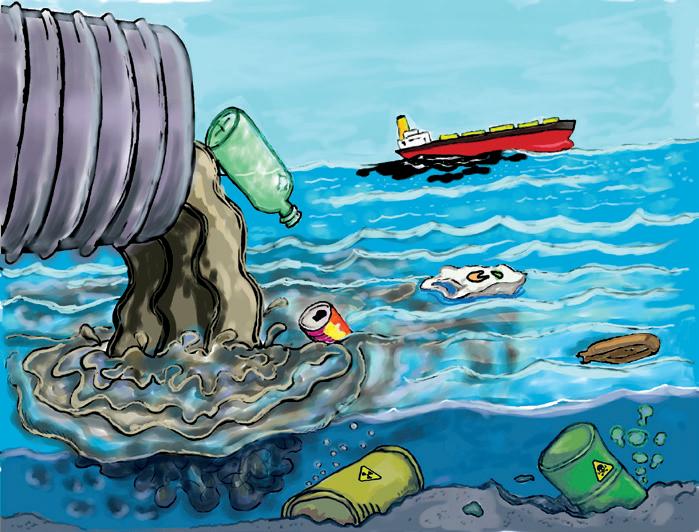
The concept of sustainability requires manufacturers and other organisations to recognize the adverse consequences of the wastes associated with their operations – including aspects of their supply chain – and not to transfer the cumulative adverse impacts to the society. Those aspects include environmental impacts, human rights issues (including, but not limited to employee health and safety, public health of the surrounding community), business practices, and conduct (including anti-corruption efforts). The responsibility for wastes and by-products resulting from manufacturing and business operations does
not end when waste is transferred to a transporter or processor, nor when the waste leaves the waste producer’s property (the origin of its generation). This waste generator/producer liability extends to third-party sites, including waste and spent materials processors and recyclers/regenerators.
Waste processors can include facilities that provide treatment and disposal services, such as incinerators, waste-to-energy (WTE) facilities, commercial wastewater treatment plants, and landfills, to name just a few. Recycling facilities include but are not limited to those handling batteries, plastics, electronics/computers/mobile phones (WEE), and other “focus materials.”
Examples of regeneration activities can include spent catalysts from oil
and chemical refining processes, specialized pharmaceutical manufacturing operations, and spent solvent recycling. Many regeneration activities are the result of industry moving towards more circularity in the production process. Circular economy arrangements can still carry responsibility for the original producer of the spent materials used to augment or replace the use of raw materials until the regulatory scheme specifically establishes the “end of the waste.”
The concept of “generator liability” does not depend upon intent – only on the outcome (improperly managed wastes, or unintended contamination resulting from ineffective processes). Since 2008 (after the first revision to the EU Waste Framework Directive and landmark cases arising in Europe that pointed liability back to the original waste producer), European firms have had a duty of reasonable care in the management of their waste and the selection of their vendors. Several European countries have historically had strict liability laws, and this trend has grown significantly. Recycling of materials generally does not exempt by-products or spent materials from these liability schemes in Europe and elsewhere.
CHWMEG, Inc. (CHWMEG) is a non-profit organisation that promotes responsible stewardship of initially produced wastes and other spent materials (comprehensively, “wastes” for this discussion). CHWMEG’s membership comprises more than 300 major manufacturers and other organisations , representing over 900 separate entities. Sectors represented by CHWMEG members
europeanbusinessmagazine.com 78
include oil & gas, energy production and distribution, chemicals, pharmaceutical manufacturing, metals extraction and processing, semiconductors and electronics equipment manufacturers, and communications service providers, to name just a few. Waste stewardship: CHWMEG’s mission is to facilitate general awareness of the potential environmental and human rights impacts that can result from improper or irresponsible practices associated with waste or recycling management . Recognizing the importance of human rights aspects (employee health and safety practices, and protection of public health), air and water pollution, contamination of groundwater (environmental aspects) and other risks associated with internal operations and downstream suppliers (the waste and recycling facilities) provide the motivation for CHWMEG’s efforts: to promote responsible waste stewardship for the general public and for its members.
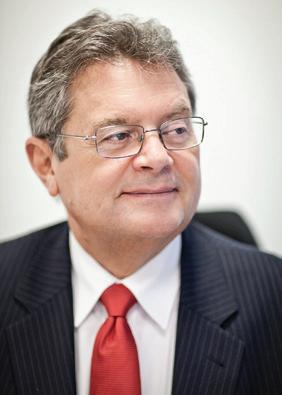
In support of its members’ own individual stewardship initiatives, CHWMEG conducts comprehensive risk reviews of waste and recycling facilities worldwide. CHWMEG’s members benefit greatly because of the cost-saving opportunity afforded by the “shared-cost” model utilized for conducting detailed risk reviews. CHWMEG’s reviews augment the efforts of member organisations in Europe that are currently conducting value chain audits worldwide as part of their sustainability programs. CHWMEG’s facility review reports will be a valuable asset to those organisations that have yet to create such global programs.
Facilities indirectly benefit from CHWMEG’s reviews because its support of a single CHWMEG review results in a CHWMEG report that is available to all members that represent the facility’s customer or potential customer base. This support allows the facility to conserve its resources at a time when “facility visits” are predicted to increase exponentially. CHWMEG confidentially and anonymously distributes its facility review reports to interested members thereby reducing the burden on the reviewed waste facility.
The context of sustainability and waste stewardship is important to understand considering the recently introduced EU Sustainability and Corporate (Supply Chain) Due Diligence (SCDD) Directive, which establishes a mandatory requirement for larger organisations (by employee count or annual financial turnover) operating in the EU to audit their suppliers to assess and prioritise their perceived risks. The scope of the auditing requirements on applicable (for this discussion, “covered”) organisations is global (it is not limited to their European operations, as some incorrectly assume). The affected suppliers include “waste facilities.” One of the SCDD Directive’s intentions is to identify and prospectively encourage improvements in the value chain (suppliers of the covered organisations). This is projected to include proactive financial support to assist in addressing human rights and environmental management deficiencies at their suppliers. Another intention is to hold covered organisations liable to remedy human rights and environmental impacts caused by their suppliers.

The cascading effect of the SCDD Directive on suppliers of the covered organisations will be considerable. Covered companies will be pushed to try to obtain contractual commitments from their own suppliers linking the Directive’s obligations. The SCDD is intended to encourage the selection and use of the best possible (lowest risk) suppliers proximate to the covered organisation’s (enterprise-wide) factories and plants worldwide. Annual reporting of the covered organisation’s worldwide supplier network will be required, including assessment of risk and prioritisation of the environmental and human rights risk aspects related to each. Where the number of suppliers is limited and the use of lessthan-ideal suppliers is necessary, the covered organisation will be required to prioritise the risks of its value chain supplier base, identify potential preventive actions for improving the performance of its suppliers (reducing their risks), and offer financial support to accomplish the same.
With the recent European developments in mind, it is necessary to understand CHWMEG’s history
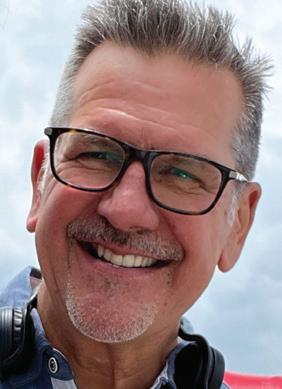
europeanbusinessmagazine.com 79
Jeffrey Sacre Executive Director
Randy Mott Director, Europe, Africa & Middle East
Suzanne Curry Director Marketing and Member Support
and significant position in this area. Through the “Superfund” legislation (Comprehensive Environmental Response, Compensation, and Liability Act: CERCLA) in the United States in 1980, waste generators (waste producers) became strictly liable for contamination related to their produced wastes (even retroactively ). Importantly, the US requirements do *not* include mandatory auditing of the supply chain of waste facilities. Instead, the result instituted a “buyer beware” concept – generators were deemed liable for remediation/clean-up of third-party sites that received the generators’ (their customers’) wastes.

Costs to affected companies as proclaimed by US EPA CERCLA/Superfund program reporting exceeds US$70 billion (funds extracted from customers of affected US facilities exclusive of costs of US state-directed and voluntary remediation, as well as third-party damage cases). The impact of the US legislation was considerable and even bankrupted some organisations. The response by US companies was the advent of risk auditing of waste facilities, which evolved into widely adopted best management practice (BMP) by world-class organisations operating in the US.
Adoption of the ISO 14001 Environmental Management Systems (EMS) standards in the 1990s quickly became popular in Europe, the States, and Asia. ISO 14001 is a global standard that recognises what a formal environment system does for an organisation. The importance of the process looks to ensure that an entity’s environmental internal aspects and impacts have been considered and more importantly, are in place, via laws and regulations, while connecting that to an organisation’s realtime activities.
Each nation utilising the ISO 14001 EMS standards has established their accreditation body for auditors tasked with verifying the formation of programs. Under the EU SCDD Directive, Member States will designate an agency responsible for enforcement, where EU states will be bound by EU laws and regulations; countries outside of the jurisdiction, for example
supply chains in Bolivia or Chad, will pose wider complications and issues. Any certified program worth its weight will have addressed external aspects and impacts, in the form of regenerating waste and the logistics around which vendor is selected, and how the process is managed and monitored. For conforming US organisations representing global enterprises, embracing ISO 14001 expanded the practice of auditing their waste facility activities outside of the US and North America. Thus, these organisations began scrutinizing waste facility suppliers across the globe. CHWMEG was founded by several of these organisations to augment their own program efforts where streamlining/cost-sharing opportunities presented themselves.
The ISO 14001 EMS standard includes the external environmental aspects and impacts (that is, the potential environmental impacts of the contractors and vendors with which the conforming company does business), but it does not require auditing of waste and recycling vendors. There is a presumption around ISO 14001 that selection and ongoing monitoring/ re-approval of waste and recycling
vendors includes stewardship and environmental protection objectives; however, “lowest cost” outlets for waste and spent materials can still be acceptable if the organization’s criteria for selection are set low. The EU SCDD Directive presumes that vendors will be selected and monitored with more of an emphasis on stewardship and not solely based on financial considerations, including disposal and recycling costs. Third-party, on site audits of the vendors – not required under ISO 14001 but now included in the EU SCDD Directive – will be required, not only for monitoring purposes and the fact it’s the right thing to do, but also to contribute proactively to the financial improvement of each of those suppliers’ programs to reduce their perceived risks.
The wider impacts of the vendor’s programs and supply chains on human rights and the environment is another crucial area to monitor and affect positive change. ISO 14001 is entirely silent on employee health and safety (and other human rights aspects), whereas the EU SCDD Directive brings those issues to the front-andcenter.
europeanbusinessmagazine.com 80
CHWMEG’s history and nearly forty years of experience conducting voluntary risk audits of waste facility suppliers worldwide dovetail with the EU SCDD Directive’s mandatory waste facility supplier risk management requirements. These audits identify and investigate the key criteria and issues that have been identified in the SCDD Directive (and other significant factors not mentioned in the Directive).
Operationally, CHWMEG does not approve nor disapprove of facilities, nor does CHWMEG certify or recommend facilities. Both of such approaches would be simplistic and ill advised because of the complexity of the issues. The EU SCDD Directive mandates a risk-based approach that precludes any bright line pass/ fail tests.
Rather, CHWMEG gathers and reports sizeable amounts of information, assembles critical documentation, and conveys the resulting reports to interested member organizations for their review and informed decision-making. This affords CHWMEG members the ability to independently evaluate reviewed facilities
while respecting the EU’s (and other national) antitrust laws.
CHWMEG’s approach recognizes that risk levels and tolerances to risk vary amongst facility customers, including CHWMEG’s members. Customer risk profiles and needs differ considerably. As an illustration of this concept, those organizations that produce larger volumes of waste, or those generating wastes and spent materials that require more specialized treatment and disposal technologies (higher toxicity or persistence in the environment), will consider the same vendor very differently than those with more routine production streams, volumes, and processing needs.
What specific initiatives or strategies does CHWMEG employ to help businesses stay on track towards creating a sustainable future?
CHWMEG has developed a highly evolved process for gathering and reporting comprehensive information about waste treatment and disposal and spent material recycling facilities. The process includes a detailed questionnaire that addresses all aspects of risk associated with facility operations including factors linked to human rights/employee safety and hazards and environmental aspects. The extremely detailed resulting report covers the facts that members need to evaluate – in many cases, based upon their own individual (or collective!) unfortunate previous experiences (“lessons learned” about their own supplier shortcomings).

CHWMEG produces these facility reports based on actual site visits performed by its highly experienced and qualified facility review contractors. Many of the individuals conducting CHWMEG’s facility reviews have visited over 300 (or more!) separate facilities, and many have conducted reviews in dozens of nations. Every CHWMEG facility review report is the result of research, interface with regulatory agencies, interface with the reviewed facility prior to the site visit, and observations from the time that the facility review contractor spends on-site. Extensive documentation and
excerpts from existing written materials and website references are also included in the reports.
CHWMEG reports are confidentially and anonymously distributed to members (no member knows the involvement of other members) so that members can make their own informed decisions based on their own needs and evaluation processes. With the documentation of the risks and attributes of the reviewed facility, CHWMEG’s members can make informed decisions about their initial use of a facility or continuing to do business with facilities. It is imperative to realize that the dynamics of the marketplace and of the legal/regulatory/political landscape do not allow one-time considerations/ approvals – facility conformance with a covered organisation’s risk criteria can change over time.
Recognizing these dynamics, CHWMEG annually considers its own processes, protocol, and questionnaire. CHWMEG makes revisions reflecting the changing regulatory landscape and addresses other emerging issues (e.g., sustainability, emerging contaminants of concern, waste processing technology developments/improvements, etc.) as requested by members. Additional sources of adopted protocol revisions include CHWMEG’s facility review contractors and the reviewed facilities themselves. The list of facilities reviewed by CHWMEG each year is determined by its members. CHWMEG canvasses members annually (July-October for the following calendar year) to identify where cost-savings opportunities exist with multiple member interests (with as few as two of the more than 300 member organisations (https://chwmeg.org/member-list1. asp ). Where no common interest amongst the members exists (no cost sharing appears evident), any member can individually initiate a CHWMEG facility review. Sole-sponsored CHWMEG reports are available to any other interested member (as a current customer, or a potential customer of the reviewed facility). All CHWMEG reports are available for the balance of the calendar year, plus four additional years (if that information is deemed to be “current enough” to the needs of the affected member).
europeanbusinessmagazine.com 81
Through 2023 (at current count), CHWMEG will have conducted well over 6,300 reviews at over 2,200 (https://chwmeg.org/all-audits.asp) unique facilities worldwide. This includes:
• 307 reviews of 216 unique facilities in Europe (view them HERE – https://chwmeg.org/results_ europe.asp)
• 5,645 reviews of 1,963 unique facilities in North America (view them HERE – https://chwmeg.org/ results_na.asp)
• 261 reviews of 192 unique facilities in Asia (view them HERE –https://chwmeg.org/results_asia. asp)
• 85 reviews of 64 unique facilities in Latin America (view them HERE – https://chwmeg.org/results_ sa.asp)
• 56 reviews of 35 unique facilities in Oceania (Australia + New Zealand) (view them HERE – https:// chwmeg.org/results_australia. asp)
• 15 reviews of 11 unique facilities in Africa (view them HERE – https://chwmeg.org/results_ africa.asp)
Whether an organisation requires assistance with waste streams, recycled streams, or regenerated streams will vary depending on its needs. Each entity would then consider a facility with the services and processes to take the materials. The locality of where the waste is generated and where the facilities are located is another factor companies will consider when looking at facilities in the region. Many companies will look at cost in terms of consolidating wastes to fewer vendors (where the opportunity presents itself) and the need for using multiple facilities in one locale where the requirements for specialized services are evident. A waste producer’s liability will be spread across the number of facilities receiving their wastes for aggregation, and the facilities to which the aggregated wastes are sent for actual processing, rather than just to one facility (the initial receiving facility). Business decisions for selecting and approving these important vendors are made with the
involvement of an organisation’s supply chain representatives, environmental professionals, and those having health and safety expertise.
Unique policies can also play into business decisions. For example, minimising landfilling or reducing a toxic waste stream and using an incinerator to destroy potentially harmful constituent chemicals are understandable and justifiable initiatives. These considerations depend on an organisation’s policies or level of risk tolerance. Less developed countries can create challenges because of less developed infrastructure and fewer alternatives. Impacts on human rights issues, whether to the facility’s own employees, neighbouring residential populations, or nearby communities, or environmental impacts (whether intentional or unintentional), can contribute to public health risks and liabilities, and potentially create negative public relations challenges (even if only unwarranted negative perceptions).
How does CHWMEG collaborate with European businesses to ensure their waste management practices align with responsible waste stewardship principles?

CHWMEG’s members collaborate to revise the questionnaire, which serves as CHWMEG’s primary information-gathering instrument. The protocol, questionnaire, and report format/layout have evolved significantly over the past three-plus decades of CHWMEG’s existence. Changes frequently occur with each annual process review.
The scope of CHWMEG’s facility reviews provides an enormous amount of information in a standardized format with extensive documentation that allows members to efficiently evaluate the facility based on their own risk management process and to consider other aspects that may not be initially considered in the individual decision-making process.
As of 19 June 2023, CHWMEG has a library of recently completed reports representing 1,031 unique facilities worldwide (reviewed since 1 January 2019) that current and newly
joining members can obtain. The library allows new members to jumpstart their program in parts of the world where their facility risk information may be wanting.
Each year, our members anonymously identify the facilities for which they have an interest in receiving a CHWMEG facility review report to be completed in the following calendar year. Our contractors conduct the reviews and CHWMEG produces the facility review reports that members may obtain (at a fraction of the cost required to conduct and produce the report). Canvassing of member interest is conducted annually between July and October. CHWMEG maintains an active library of reports for the current program year and including those completed in the four previous calendar years. Members can obtain reports from this timeframe and access that information to inform their decisions. Member enquiries are
europeanbusinessmagazine.com 82
kept confidential, so no members will know which reports (especially which reviewed facilities) other members have accessed and requested.
If for example, a European company didn’t have a global waste vendor program, and certain directives were in play, as a member of CHWMEG, they could browse the recently completed reports from the 1000+ facilities and obtain the detailed CHWMEG report to support their business efforts. A large organisation would have hundreds of waste vendors (and potentially thousands worldwide) that would now be included in mandatory supply chain risk review requirements.

CHWMEG additionally provides regulatory updates and timely information on important environmental health and safety (EH&S) information in regular webinars and in-person meetings. The meetings are of
great benefit to continuing education and the continuing dynamics of global regulatory changes occurring now at a breakneck pace and are open to members and other likeminded organizations.
Depending on each facility and its locale, laws and regulations can change and obvious questions around corruption are ever-changing within the landscape. CHWMEG recognises that corruption can be part of the system, owing to the sheer size of the operation and number of variables present in one facility, let alone across a region or country. For example, CHWMEG has witnessed facilities that turn off their air emissions control equipment at night so people can’t see the plume of smoke coming out of their smokestack, or operate their waste processing activities only in the dark hours of the night for this same reason. Inventory at some facilities has been found to be overflowing
with waste, where no money has been spent on processing the waste received (with payments received by the facility upon receipt of their customers’ waste shipments). This can be a leading indicator that a facility might experience financial distress that could result in bankruptcy. The economic and legal factors fluctuate, along with political pressure of, for example, newly developed towns and villages encroaching upon the facilities that have operated at that location for a much longer time. Those facilities may have been sited and built, licensed, and have operated far away from any communities and residential developments until only recently. Political pressures can prevent the extension or renewal of a facility’s operating permit (“license to do business”), meaning that the facility may be forced to close or need to relocate.
Typically, governments would request the waste producers to pay for any waste left as a result of a facility closing, whether by economic or political pressure. Alternatively, companies can be sued for the clean-up bill if no agreement or mediation is realised. The EU has a rule where if liable parties are present, the government cannot use public funds for the clean-up — meaning they are obligated to go after the private companies that are liable. In Europe the resolution is typically amicably negotiated compared to similar situations occurring in the US, where litigation is more common. Similarly, the EU tend to keep adverse press at a lower level and reinforce a working relationship with the enforcement agencies than the States, where resolution can become more adversarial.
Issues around bankrupt facilities have been more numerous and significant in the US where, for decades, strict liability for the waste producer has followed their waste. More generally, if hazardous waste enters a site or facility, the clean-up standards are elevated. In the US, the responsible waste producing parties that can be identified are liable not only for their own waste, but for the remaining waste at a facility where the generators cannot be identified (allocation of liability
europeanbusinessmagazine.com 83
of unidentified waste producers to those that can be identified as having sent wastes to the facility). It is interesting to note that the issues around untraceable waste going to unknown locations is more prevalent in Europe than it is in the US.
Some of the worst polluters in the waste industry can be smaller entities that are “management challenged”; however, generalising proves difficult due to the number of variables present.

CHWMEG knows one particular example involving an exceptionally responsible manufacturer of medical supplies. This manufacturer had to deal with an off-spec lot of produced supplies. The manufacturer was faced with a cacophony of issues after having seemingly found a reputable vendor to take the off-spec lot away to be responsibly recycled. The manufacturer found itself expending valuable resources to educate and inform the public that no harmful materials were spilt onto the land or into water supplies. The company spent thousands to neutralise the issue. Unfortunately, the waste recycling vendor the company initially selected drove the offspec lot of medical supplies down the road and “deposited” (dumped) them into the nearest open field, which was not the manufacturer’s intention. The appearance of these spent materials in the environment (open field in public space) cast the company’s name, brand/logo in a considerably negative light, where the company’s intention was originally to have the materials responsibly recycled. The manufacturer scrambled to find a more responsible vendor to collect the discarded materials and direct them for responsible recycling elsewhere. The problem was exacerbated when the second vendor collected the materials and delivered them to yet another open field in a more distant location. The manufacturer had to resolve the same problem – again. Through the school of hard knocks, many have learned that not all vendors can always be trusted and problems that a vendor initially creates cannot always be fixed by employing another vendor. Another important point is how crucial it is to oversee a
vendor’s work and make sure they are recycling or treating and disposing of waste in a responsible fashion. When this member shared their experience with other members at a CHWMEG meeting, their account was eye-watering and visibly shocked the listeners. In terms of risk management, that kind of risk is low but can be exceptionally problematic.
Recycled products must meet legal criteria to be declared a non-waste product, meaning waste designation can sometimes stay with the product or material. Chemicals, old electronics and their components (e-scrap and their “focus materials”), and unused pharmaceuticals can sometimes be disposed of improperly instead of being responsibly recycled because market prices have changed or technology has evolved. So, in other words, problems could just as much be exacerbated by sending materials to be recycled when/if they are not dealt with responsibly. Liability and frequency of check-ups on waste transporters and destination facilities might be significantly greater when sent to an entity whose commercial purpose is to treat waste and dispose of it.
Manufacturing companies need to find out where their waste is going in terms of the wider issue of obligations under the directive, then corporations can audit and assess supplier risk and prioritize those risks for possible action. In doing so, the economics of the broker arrangement will change in adaption, or alternative arrangements may emerge. Some countries do not have adequate facilities and can expand into extra-territorial issues, affecting not only a US organization but also British or European companies, too. As environmental standards and appreciation of stewardship grow, countries will sometimes collaborate in emerging countries, to create their own joint venture for processing waste.
Can you provide examples of successful partnerships or case studies where CHWMEG has assisted businesses in improving their waste management processes?
CHWMEG’s reviews identify the applicable laws and regulations affecting the reviewed facility, including the facility’s current permits (and expiration dates) and its compliance history. Recently, CHWMEG reviews uncovered facilities that were accepting customer wastes that were outside the scope of the facilities’ permit conditions. These situations were particularly important to member recipients of the report. CHWMEG’s reviews have also identified facilities that incorrectly claim exemption from regulatory requirements. These are just a few examples of the significant legal issues revealed at reviewed facilities.
Legal compliance alone is an insufficient measure of sustainability objectives. CHWMEG’s facility review reports do not merely focus on legal compliance. CHWMEG reports include a number of other important factors related to the facility’s risk profile that reflect the “best management practices” (BMP) that are generally incorporated into members’ waste facility evaluation programs. Environmental risks associated with wastes processed at the reviewed facility can include previously known or potential impacts to nearby inhabitants (factors include population densities, distances, and susceptible populations) in the vicinity of the facility. Importantly, these (by cardinal direction) also can include key “compounding factors” (including prevailing wind
europeanbusinessmagazine.com 84
directions, for example). Similarly, CHWMEG reports incorporate distances, directions, and uses of nearby surface water bodies and any existing contamination or potential impacts to these water bodies and their users (e.g., drinking water sources, recreational and agricultural uses). Following the same approach, CHWMEG reports consider underlying groundwater resources, any known contamination, affected users, and the potential for affecting groundwater and its users (e.g., drinking water sources and agricultural uses). The potential impacts to nearby populations, surface water bodies, and groundwater require knowledge of the reviewed facility’s annual throughputs, the toxicity and persistence in the environment of its worst-case constituents from waste streams accepted, engineering controls in place to minimise migration off-site and the distance to these receptor populations. And in each of these cases, CHWMEG’s reports provide information to assist in evaluating how the facility’s current situation may contribute to existing impacts from other sources.
Other important risks include those of explosions and fires and, where applicable, the facility’s plans for compliance with the Seveso II Directive. Other nearby activities in the vicinity of the reviewed facility are also addressed in the context of highlighting impacts that may pose significant risks to the community.
For example, CHWMEG provides a more comprehensive risk analysis. We look at waste inventories, for example, to assess the time necessary for the reviewed facility to process the waste on-site: major backlogs are a noteworthy indicator of a supplier that may be headed toward premature closure, leaving waste that customers may have to re-address. Additionally, the waste producer could face damages related to environmental impairment, and possible civil liability, coupled with negative public relations impacts. Furthermore, the reports examine facility design and operating procedures that may portend future problems. Other human rights factors, such as employee health and safety, forced labour/child labour issues, injuries and illnesses of the workforce (where reported), and community relations all combine to contribute to the facility’s overall risk profile. Finally, the reviewed facility’s risk profile can include aspects of transferring received wastes to other off-site/third-party facilities (see commentary about brokers/aggregators).
As a continuing process and outcomes validation, CHWMEG has periodically conducted retrospective reviews of facilities that have encountered financial distress (or even bankruptcy) and that have experienced significant events (unplanned releases, fires, and explosions, to name just a few). By looking at these events in the context of CHWMEG facility reviews conducted in the time leading up to those events, CHWMEG has confirmed that its processes are extremely helpful in alerting members to risks associated with the use of a facility. The prior reports produced by CHWMEG on the problematic facilities gave the member recipients of those reports the information that would have alerted them to the potential for those problems – before they affected the facility’s employees, nearby communities, impacted precious environmental resources, or before the matter/situation became a newsworthy item that could cast a negative light on the covered organization’s value chain selection, monitoring, and risk management process.
CHWMEG reports are *not* predictive in nature. It is important to note that the CHWMEG reports do not indicate that the event *will* occur. CHWMEG reports are unbelievably valuable in highlighting the challenges that these facility face.
What are some key challenges you’ve encountered in promoting responsible waste stewardship to European businesses, and how has CHWMEG addressed them?
The key challenge is that many European businesses believe that waste liability ends when the waste-producing organization transfers its waste to a third party. Laws in Europe have contradicted this attitude for a number of years; however, the erroneous perspective persists.

European waste-producing organizations are more likely to use waste brokers or “aggregators.” The European firm’s selection of one broker (or a minimal number of brokers) to manage (treatment, disposal, or recycling/ regeneration) all of the waste-producing organization’s waste streams is common and can be tremendously problematic. Frequently, the broker or aggregator simply sends their customers’ waste streams to multiple third parties, often without the knowledge of the customer (compounding the problem of the erroneous perspective of “that’s not my problem any longer”).
The resulting cost considerations operate to disincentivize the selection of alternative, lower-risk waste facilities. In fact, the broker/aggregator is motivated by its own profit margin, which can work in direct opposition to the intended “best stewardship intentions” of its customer – the waste-producing organization.
European waste-producing organizations cannot effectively perform worldwide due diligence if the whereabouts of their waste are not clearly known. Studies by the European Commission indicate that in the absence of an EU-wide waste manifest system, a substantial percentage of the hazardous waste produced in Europe cannot effectively be traced to its ultimate disposition.
europeanbusinessmagazine.com 85
Until now, waste-producing organizations have erroneously relied on waste brokers/aggregators to responsibly manage their customers’ wastes without the control or knowledge of the actual processing/disposal facilities. An important experience significantly impacting CHWMEG members occurs whenever reports indicate that the CHWMEG member organization’s wastes are never actually processed at the facility that was reviewed – or worse yet, their wastes were never actually received at the facility that CHWMEG reviewed (unbeknownst to the generating organization!).
This is an existing problem that will be amplified when due diligence is required of SCDD Directive-covered waste-producing organizations.
What are your thoughts on the Sustainability and Corporate (Supply Chain) Due Diligence Directive (SCDDD) and its potential impact on promoting responsible waste stewardship in the European business landscape?
While many European companies have implemented their own sustainability programs, some include established and effective waste facility risk management programs. The European Commission indicates that a majority *have not* developed such programs.
The Commission’s survey responses indicate that an overwhelming majority of European companies are nevertheless becoming more concerned about the downstream risks posed to human health/human rights and environmental concerns.
The new EU SCDD Directive will require periodic audits by independent experts – which is CHWMEG’s primary offering and experience. Waste facility audits – like the facility review reports offered by CHWMEG, in addition to continuous monitoring of previously considered and approved waste facilities – will be required as part of a comprehensive risk management program.
Conforming programs must adopt formal written procedures and annually report the status of the risk program and the actions taken to address
Through 2023, CHWMEG will have completed over 6,300 reviews at over 2,200 unique facilities worldwide. The CHWMEG 2023 Facility Review Program (FRP) currently includes 333 facility reviews across the globe. Members may add more facility reviews to the CHWMEG 2023 FRP, thus increasing the total number of reviews performed and possibly increasing the count of unique facilities reviewed.
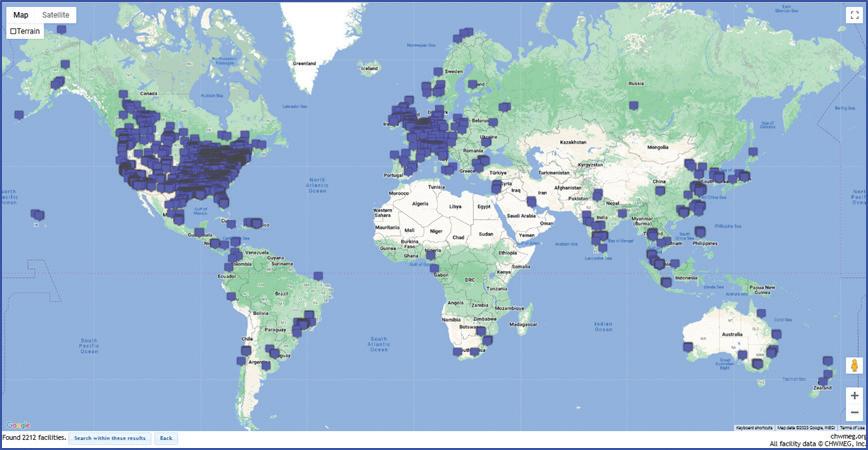
the identified risks. This approach is rendered more difficult because it would be unrealistic for any uniform “pass or fail” certification process.
In your opinion, what role should governmental regulations play in encouraging businesses to prioritize responsible waste stewardship, and how can CHWMEG contribute to shaping effective policies in this area?
CHWMEG is a non-profit membership organization and intentionally does not take an advocacy role in the creation or development of legislation anywhere. CHWMEG does, however, recognize that evolving
Through 2023, CHWMEG will have completed over 307 reviews of 216 unique facilities in Europe.

requirements will fundamentally change expectations regarding sustainability, stewardship, and the need for due diligence by waste-producing organizations.
CHWMEG can lead by example and will continue working with various EU institutions to dialogue on lessons learned from performing due diligence reviews of waste facilities with over 6,500 audits in 55 countries, including 330 reviews in 2023. CHWMEG also looks forward to the opportunity to discuss experiences with the European officials who will be creating the guidance document that will be produced under the new Directive.
europeanbusinessmagazine.com 86








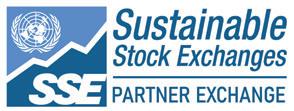









The most comprehensive sustainable segment in Europe More than £12 billion listed to support environmental, social and sustainable initiatives Partner Exchange of the United Nations’ Sustainable Stock Exchanges Initiative Responsive. Innovative. Bonds Equities TISE Sustainable Trading DISCLAIMER: This material is intended to provide general information regarding The International Stock Exchange (TISE) and is not intended to, nor does it, constitute investment or other professional advice or a recommendation to buy, sell, hold or solicit any investment, security or other financial instrument or product. Legal and regulatory information: tisegroup.com/legal-and-regulatory tisegroup.com/sustainable
REVIVING UK PRODUCTIVITY: WHAT CAN BE DONE?
By Peter McAteer, CEO, Sysmax


The decline in UK productivity since the Great Recession of 2008/2009 has been a matter of concern for business leaders, policymakers, and economists alike. Despite hopes that the pandemic would act as a catalyst for transformation and boost productivity, recent figures from the Office for National Statistics (ONS) - Productivity overview, UK (ons.gov.uk) - show that the UK still lags behind several other G7 economies.
Most industries have large inefficiencies which represent a major opportunity and the potential for productivity gains is enormous. The direct cost of avoidable error in the construction industry, for example, is around 5% of project value according to international studies highlighted by construction industry experts GIRI (Get It Right Initiative). Plus, GIRI recently reported that when ‘unrecorded process waste, latent defects and indirect costs are included, estimates of the total cost is closer to £10-25 billion per annum across the sector.’ Similarly in the oil and gas sector, it’s circa 15% of project value. This is just the tip of the iceberg, and the challenge for many senior leadership teams is understanding and knowing how and what to do to improve productivity.
Best practices in multiple industries are built over many years. To be successful these need to be actively deployed, managed, and integrated into day-to-day operations. However, it is not unusual within organisations to see guidelines and processes left collecting dust on bookshelves or ignored on servers. They provide false assurance that the organisation is doing what it needs to for its stakeholders. In addition, operational managers are often faced with variations of international, national, and regional standards. So how do we address this? How can operational leaders know
what their teams and contractors are doing? Splitting best practices down by role and placing the measurable metrics in the hands of the workforce enables active reminders, ongoing support and tracking of their use, plus improvement of the content on a 24/7 basis. The impact of this is that false assurance becomes real assurance whilst changing the mindset and culture of the entire organisation. Furthermore, organisations of all sizes rely heavily on contract supply chains. Contract supply chains enable growth and flexibility within a company along with many other benefits. When things run smoothly all is good, yet problems can and do arise. The challenge for business leaders is that all too frequently problems only become apparent when the product or service is delivered, and this in turn causes major disruption, delays, and spiralling costs.
The good news is that thanks to advances and investment in digital
transformation the solution is at hand, as technology such as Benchmax, Service Now, and Ideagen can help to deliver efficiencies. All suppliers have best practices which can be distributed by role to enable active reminders, ongoing support, plus tracking of use and improvement of content daily. Importantly, this technology once applied enables organisations to see the active deployment of best practices which improves productivity. Digital transformation should also be embraced to unlock productivity gains. The pandemic has highlighted the importance of digital technologies for business resilience and efficiency. Embracing digitalisation across sectors can automate routine tasks, enhance communication and collaboration, and optimise processes. The government can support digital transformation through initiatives such as providing incentives for businesses to adopt innovative technologies, improving digital infrastructure, and
europeanbusinessmagazine.com 88
Peter McAtee
promoting digital skills training. Furthermore, fostering a digital ecosystem that encourages research and development in emerging technologies can position the UK at the forefront of innovation and productivity growth.

Today, the UK’s investment in technology and tech infrastructure lags behind countries such as the United States, Denmark, and South Korea. Investment in infrastructure is crucial for enhancing and improving productivity. The UK has historically suffered from underinvestment in infrastructure, including transportation networks, digital connectivity, and research and development facilities. A significant increase in public and private investment in these areas can lead to improved efficiency, reduced transportation costs, and enhanced connectivity, enabling businesses to operate more effectively. It will also keep the UK in line with other competing countries. Additionally,
investment in research and development can drive innovation and technological advancements, further boosting productivity. The USA has been wise to invest heavily in technology and now leads the world whilst replacing a considerable proportion of its manufacturing base where lower-cost nations have picked up the baton.
Improving regional productivity disparities is also crucial. Productivity levels vary significantly across different regions of the UK, with London and the Southeast not only outperforming other areas but the difference is increasing year on year according to the Office for National Statistics from (1998 to 2018). Investing in regional infrastructure, promoting collaboration between businesses and educational institutions, and supporting regional innovation hubs can help reduce these disparities. By ensuring that all regions have the necessary resources and opportunities to thrive,
the UK can unlock untapped potential and drive overall productivity growth. Finally, fostering a culture of innovation and experimentation is essential for productivity revival. Encouraging businesses to take risks, experiment with fresh ideas, and learn from failures can lead to breakthrough innovations and productivity gains. The government can create an innovation-friendly environment by providing improved tax incentives for research and development, facilitating knowledge transfer between academia and industry, and promoting collaboration and knowledge-sharing among businesses.
Reviving UK productivity requires a comprehensive and coordinated approach that addresses multiple aspects of the economy. By investing in infrastructure, addressing the skills gap, creating a multi-skilled, sector-transferable workforce by sharing core skill data, supporting entrepreneurship, embracing digital transformation, reducing regional investment disparities, and fostering a culture of innovation, the UK can set itself on a path towards sustained productivity growth. Policymakers, businesses, and society must recognise the importance of productivity and collaborate to implement the necessary reforms and initiatives to unlock the country’s full economic potential.
We need also to enthuse the investment community with the growth potential of technology in the UK. Companies such as Constellation Software of Canada, whose share price has quadrupled in recent years through the growth of their technology-based business internationally, is a notable example. It’s no surprise that over 65% of investment funds in UK technology originate from North America, as UK investors move slowly behind them in their understanding and enthusiasm for higher-end tech. To move our industrial base from our past heavy industries and beyond the thinly protected finance sector (which has championed the nation in the near past), and into the bold future our young deserve is a challenge. But it’s an exciting one in which we will change the way we function as a nation. Again. And again.
europeanbusinessmagazine.com 89
TAKING THE GLARE OUT OF THE CORPORATE SUSTAINABILITY DUE DILIGENCE DIRECTIVE (CSDDD)
 By Fiona Watson, Senior Director, Redefining Value, WBCSD
By Fiona Watson, Senior Director, Redefining Value, WBCSD

As the EU has to work on its Green Deal agenda over recent years, almost every business operating in Europe will have started to feel the regulatory sunlight of increasing transparency on products, services, corporates and now supply chains. What was already a bright spotlight on corporate reporting with the Corporate Sustainability Reporting Directive (CSRD), is now turning into a brilliant glare on supply chain transparency as the Corporate Sustainability Due Diligence Directive (CSDDD) goes into its final legislative stage. While the far-reaching compliance considerations and operational details may initially seem dazzling for impacted businesses, they are a timely evolution of voluntary frameworks intended to drive holistic longterm value creation. As Europe heads into the summer season, now is the time for business leaders to ‘wear shades’ to focus on the intrinsic strategic opportunities with customers and take the potential glare out of the CSDDD.
Like the CSRD, the CSDDD is a clear call to action for companies. It will have significant direct and indirect implications throughout value chains worldwide. In essence, the CSDDD will introduce a duty for board directors to set up and oversee the implementation of mandatory human rights due diligence and environmental due diligence (mHREDD) processes. These processes must be integrated into the corporate strategy and their operation reported on to stakeholders. Enforcement will be through both public and private legal mechanisms (i.e., civil liability) and may involve fines of up to 5% of global turnover. In addition, the CSDDD includes an
obligation (for many but not all companies in scope) to develop a ‘Paris-aligned’ climate transition plan (also in line with CSRD Art 19) that the Directors oversee and to which whose variable compensation targets will be fixed. The effective date is expected to be sometime in 2026, two years after the final text is published. That is not much time for what is a significant change in gear for companies, their Boards and the corporate ecosystem at large, regardless of whether they are directly in scope and their existing sustainability leadership credentials.
The CSDDD will directly impact EU and non-EU companies in scope (EU companies with 500+ employees and €150 million+ in net turnover worldwide, widening to companies with 250+ employees and €40million+ in net turnover worldwide two years later; and non-EU companies with equivalent EU-derived revenues). These companies should be already mobilizing potentially significant internal resources to meet the expected operational and legal requirements of mHREDD, alongside mandatory ESG reporting
requirements including CSRD. To mention but a few likely implications: upstream suppliers and downstream customers will need to be mapped and assessed worldwide, procurement and sales contracts re-negotiated and amended, tech systems built (or significantly enhanced), new data captured, managed, analyzed and monitored, commercial strategies re-evaluated, climate transition plans considered and executive performance re-calibrated.
The commercial impacts are already being felt and the indirect impacts of the Directive will also be significant for companies who are not directly in scope. Many companies are already pushing for value chain transparency globally, requiring even small
europeanbusinessmagazine.com 90
CSDDD in more detail.
Across their value change, companies, under Board supervision, will need to take appropriate measures to prevent (or where not possible, mitigate) potential adverse human rights or environmental impacts. These measures will include developing and implementing preventative action plans, seeking contractual assurances (with associated compliance measures). If the potential adverse impacts cannot be mitigated, the company will not be permitted to enter into new or extended relations with that business partner (something that will require amendments to Member State laws). All of this gets scooped up into a reporting obligation with enforcement to come from both public and private parties. Member states will need to set up newly-appointed (or empowered) supervisory authorities with investigative enforcement powers with sanctions to be determined at a Member State level but likely to include pecuniary sanctions (not more than 5% of company’s worldwide turnover). Critically, however, the CSDDD provides for civil liability and a basis for private enforcement actions.
companies to be systems- and dataready to provide robust product, service and value chain-related data on their environmental and social impacts. Hence, as legal and operational teams assess the potential ‘glare’ of the detailed requirements, now is a great time for leaders of any business with a European nexus to look up and down their value chains to size the implications. Engaging with customers and value chain stakeholders will now help form a long-term view of what data capability will be expected both by them (to meet their own CSDDD obligations), and of them (to meet the needs of other companies) and on what timeline. Doing so now will position companies to prioritize building internal capabilities and
get ahead of customer expectations. Striving to create a customer-friendly friction-free reporting experience that meets large customers’ requirements, as well as CSRD and other mandatory reporting requirements, is likely to create a commercial advantage. Transparency on sustainability performance is rapidly becoming a key driver of B2B and retail purchasing decisions, talent retention and broader license to operate. In short, this enhances the business case – and the imperative - for enhanced sustainability performance ahead of regulatory timelines.
By its very nature, the CSDDD will require collaboration across value chains on new and rapidly evolving topics and approaches.
WBCSD
works with its global membership of more than 200 large corporates to facilitate the sharing of knowledge and enable and accelerate the adoption of standards and tools across key areas of climate, nature and social equality as well as core capabilities. Specifically, WBCSD is working with its members to develop enhanced data and management capability on Scope 3 accounting and carbon performance and accountability and provide support on internal performance management and reporting capability. Working collaboratively on these areas won’t lessen the operational requirements. Still, it can help remove the glare and give corporate leaders a line of sight on what matters, whatever the weather.

europeanbusinessmagazine.com 91
THE KEY TO A FLOURISHING DIGITAL TRANSFORMATION JOURNEY
Paul Meersman, Head of Marketing, CDS

In today’s dynamic and ever-changing business landscape, staying ahead of the competition is essential for companies to thrive. The concept of digital transformation has gained immense popularity in recent years, as organisations rush to embrace new technologies and processes to keep pace with the rapidly evolving times. However, despite the widespread adoption of these initiatives, studies indicate that 70% of such projects fail to deliver the anticipated results, leaving companies perplexed about the reasons behind these failures. The solution lies in adopting a human-centred approach that revolves around understanding the genuine needs of stakeholders.
Who are the stakeholders?
Stakeholders encompass individuals or groups who hold a vested interest
in the outcomes of a project or initiative. These stakeholders can include employees, customers, suppliers, shareholders, regulators, and even the larger community. Each group of stakeholders has distinct needs and expectations that must be carefully considered when implementing a digital transformation program.

Why is it crucial to comprehend stakeholder needs?
One of the gravest mistakes made by companies is assuming that they know precisely what their stakeholders need or want. This assumption often leads to a one-size-fitsall approach that fails to address the specific requirements of individual groups, potentially alienating people with unique requirements. When it comes to a transformation project, businesses must therefore recognise the diversity among individuals, including their varied backgrounds, abilities, and levels
of digital literacy. It is essential to ensure inclusivity and accessibility in digital solutions. For example, a company might believe that introducing a new digital platform will enhance customer access to its services. However, for the platform to truly succeed, it must also be userfriendly and offer the necessary features that customers actually need and can utilise with ease.
To avoid this potential pitfall, it is vital to engage with stakeholders early on in the process through comprehensive user research. This entails actively listening to their concerns, understanding their pain points, and gathering feedback on their expectations for the new digital solution. This valuable information can then guide the design and development of the program, ensuring that it effectively meets the needs of all stakeholders. Such thorough research also plays a pivotal role in providing reliable insights that inform decision-making and
europeanbusinessmagazine.com 92
UNVEILING THE POWER OF STAKEHOLDER UNDERSTANDING:
mitigate the risks associated with change.
Companies should initiate this process by posing key questions to ascertain the current performance of their services, understand stakeholder and user perspectives, identify future requirements, and establish metrics for measuring change, among other crucial aspects.
In addition to gathering feedback, it is equally important to provide strong and transparent leadership that effectively communicates the reasons behind any change, as well as the expected outcomes. Far too often, directives are ‘handed down’ from above without sufficient explanation, which not only alienates employees directly involved or impacted by the change but can also generate resistance across the organisation.
Open communication is therefore the cornerstone of understanding the needs of all parties involved. Businesses should maintain regular
and ongoing communication with stakeholders, from the outset, and throughout the implementation process. This includes providing regular updates on progress, acknowledging and addressing any concerns as they arise, and actively seeking further feedback when necessary. By keeping stakeholders well-informed and involved, companies can foster trust and ensure that the program stays on track.
Stakeholders needs are multifaceted
It is also important to recognise that different stakeholder groups may have conflicting priorities. For example, employees may prioritise a new digital solution that simplifies their workload, while shareholders may be more focused on increasing profits. Achieving a balance between these competing priorities often requires careful consideration and a willingness to work collaboratively.
To succeed, it requires teamwork across different departments, and in some instances, compromise. Organisations should tap into varying expertise, insights and learned experiences to break down potential silos and foster a culture of innovation and collaboration across the board. This will also empower and engage all team members in the transformation process.
Lastly, a long-term perspective should be maintained. Digital transformation programs are not isolated events but ongoing processes that require continuous improvement and adaptation. This means that companies must remain committed to gathering ongoing feedback and evolving the program over time to ensure its future success.
Embracing human-centric digital transformation

A successful digital transformation program hinges on the ability to comprehend and address the genuine needs of stakeholders – not merely perceived challenges and opportunities. By actively engaging stakeholders from the outset, gathering user insights, maintaining transparent communication throughout, managing competing priorities, and adopting a forward-looking perspective, companies can ensure that their initiatives deliver the desired value, and ultimately ROI.
Organisations that effectively navigate the digital transformation journey stand to reap substantial benefits, including improved customer experiences, enhanced operational efficiency, and newfound growth opportunities.
Insight, serving as an invaluable asset, empowers businesses to create and deliver customised products and services that truly cater to user needs, propelling them towards achieving their objectives and ensuring sustainable success. And as the digital landscape continues to shape the business environment, organisations that prioritise stakeholder needs will emerge as the frontrunners positioned for future success.
europeanbusinessmagazine.com 93
THE LATEST INNOVATIONS IN DIGITAL FINTECH
In an era of unprecedented digital transformation, the financial landscape is undergoing a profound shift, with fintech emerging as a powerful catalyst for change. As the world embraces technology-driven solutions, the fintech revolution has sparked a new wave of innovations, reshaping traditional financial services and unlocking previously unexplored opportunities.
From frictionless payments to artificial intelligence-driven investment strategies, fintech is continuously pushing the boundaries of what’s possible in the financial realm. In this article, we delve into the latest advancements that are driving the digital fintech frontier, redefining the way individuals and businesses interact with their finances.
The Rise of Digital Wallets and Contactless Payments


Digital wallets have become the new standard for everyday transactions, revolutionizing the way we pay. With seamless integration across multiple devices, users can securely store their payment details and conduct contactless payments with a mere tap. As the world moves towards a cashless society, these digital wallets have played a crucial role in
enhancing financial accessibility and convenience for consumers.
Decentralized Finance (DeFi): Empowering Financial Inclusion
DeFi, powered by blockchain technology, is rapidly disrupting the traditional financial ecosystem. By eliminating intermediaries and enabling peer-to-peer transactions, DeFi platforms provide unprecedented financial access to the unbanked and underbanked populations worldwide. With its promise of transparency, efficiency, and inclusivity, DeFi has attracted significant attention from investors and regulators alike.
Robo-Advisors: Smart Investing for All
Robo-advisors have democratized investing, allowing users to access sophisticated investment strategies without the need for human financial advisors. Powered by AI algorithms, these platforms analyze vast datasets to provide personalized investment recommendations tailored to individual risk profiles. This democratisation of investment services has made wealth management more accessible and cost-effective for a broader demographic.
Digital Lending Platforms: Unlocking Credit Opportunities
Digital lending platforms have disrupted traditional lending models, revolutionizing credit access for individuals and businesses. Using advanced data analytics and machine learning algorithms, these platforms assess creditworthiness efficiently, making the lending process faster and more efficient. As a result, underserved borrowers and small enterprises can now access loans that were once out of reach.
europeanbusinessmagazine.com 94
NAVIGATING THE FINANCIAL FRONTIERS:
Open Banking and APIs: Fostering Collaboration
The advent of open banking has transformed how financial institutions operate, fostering collaboration through Application Programming Interfaces (APIs). APIs enable secure data sharing between financial institutions and third-party developers, leading to an ecosystem of integrated financial services. This interconnectedness has enhanced customer experiences, enabling tailored offerings and fostering innovation in the financial space.
Cybersecurity and Fraud Prevention: Safeguarding Digital Assets
As digital fintech continues to thrive, the need for robust cybersecurity and fraud prevention measures becomes paramount. Innovations in biometric authentication, artificial intelligence-driven anomaly detection, and blockchain-based security protocols are bolstering the defense against cyber threats, safeguarding digital assets and maintaining consumer trust.
In conclusion, the world of digital fintech is an ever-evolving landscape, where innovations continue to redefine financial services and create new possibilities. From seamless payments to decentralized finance, the latest advancements hold the potential to transform the way we manage our finances, ultimately shaping a more inclusive and interconnected global economy. As fintech pioneers forge ahead, the future promises exciting prospects and opportunities, opening up a world of financial possibilities like never before.

europeanbusinessmagazine.com 95
NEW GROUND FOR A CONVERGED
EUROPEAN SECURE SPACE CONNECTIVITY SYSTEM
DOWNLOAD NOW AT: iDirect.net/Europe
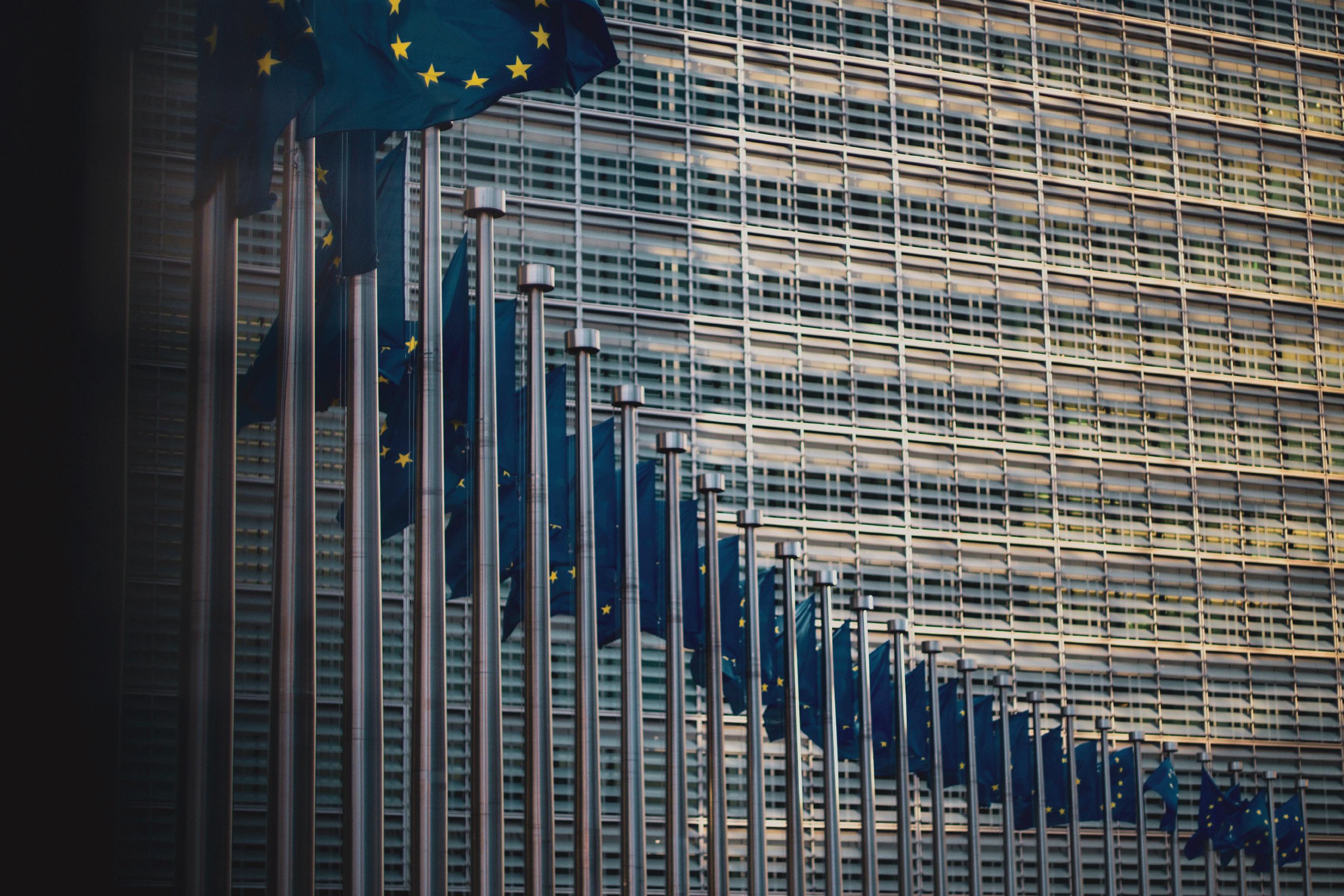











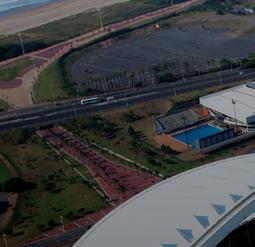














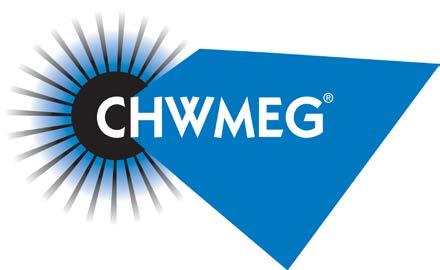



CHWMEG’s members strive to minimize the environmental footprint of the world’s most vital products and services …and CHWMEG allows them do so cost effectively Globally Promoting Responsible Waste Stewardship Worldwide HQ: Pittsburgh, PA USA A- P/Oceania Office: Singapore EAME Office: Warsaw
































 By Maria Balbas, President, elev8 digital skilling
By Maria Balbas, President, elev8 digital skilling
























 Martin Spring, Professor of Operations Management, Lancaster University
Martin Spring, Professor of Operations Management, Lancaster University










































 Chris Peregrine, Head of Product Management at Digital Well
Chris Peregrine, Head of Product Management at Digital Well




 By Nick Gold, MD, Speakers Corner
By Nick Gold, MD, Speakers Corner





































 By Fiona Watson, Senior Director, Redefining Value, WBCSD
By Fiona Watson, Senior Director, Redefining Value, WBCSD







































































